jeudi, 09 novembre 2023
Haaretz : Le Jihad juif et la guerre sans fin de Bibi
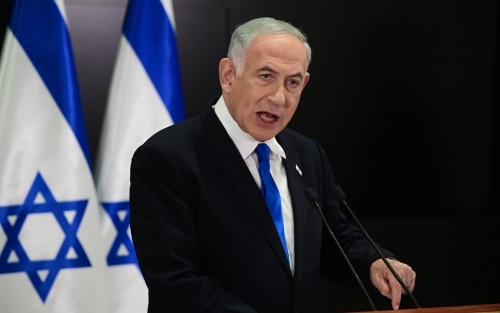
Haaretz : Le Jihad juif et la guerre sans fin de Bibi
Source: https://www.sinistrainrete.info/articoli-brevi/26732-piccole-note-haaretz-la-jihad-ebraica-e-la-guerra-senza-fine-di-bibi.html
Les juifs apocalyptiques se réjouissent de la guerre de Gaza, que même Netanyahou considère comme une opportunité. Après Blinken, même Zelensky se rend en Israël...
"Les ultranationalistes juifs apocalyptiques s'extasient sur l'"opportunité" que leur offre la guerre, écrit Uri Misgav (photo) dans Haaretz. "Leurs yeux brillent. Ils sont en extase. De leur point de vue, ce sont les jours du Messie. La grande opportunité. Cela fait partie intégrante des opinions fondamentalistes, dans toutes les religions. La croyance en une apocalypse, en Armageddon, en Gog et Magog, comme seul moyen de rédemption".
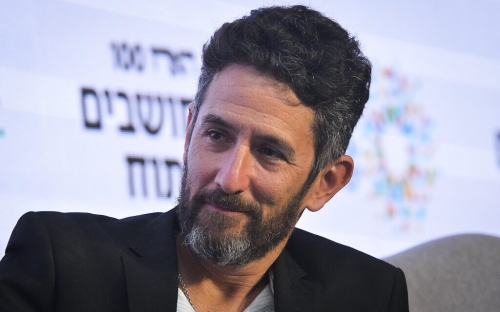
Le djihad juif contre le djihad du Hamas
"Dans le cas des sionistes haredim, poursuit Misgav, il s'agit d'un double fantasme : la domination juive totale sur toute la zone allant de la mer Méditerranée au Jourdain, en conjonction avec l'effacement de l'existence des Arabes, et l'émergence d'un État halakhique sur les cendres de l'Israël libéral-démocratique d'aujourd'hui" [...] Cela explique le discours sur une "seconde Nakba"" et d'autres dérives du même genre.
Et bien qu'il y ait des discussions en Israël et ailleurs sur la façon de mener la guerre, sur les relations internationales et autres, "pour les sionistes haredim, de telles diatribes sont une perte de temps préjudiciable. Gaza est Amalek, qui doit être rayé de la surface de la terre".
"De nombreux sionistes haredim, dont certains sont des administrateurs publics, considèrent cette terrible crise comme une opportunité et même comme un plan divin". Cette extase, détaille Misgav, sévit dans la société, dans la politique, mais aussi parmi les militaires, car "au sein de l'armée, il existe un courant sioniste haredim bien implanté".
Et d'avertir : "Le djihad juif est déterminé à mettre le feu à toute la Terre sainte". Un danger, écrit Misgav, que ne devraient pas ignorer les Israéliens étrangers à ces dérives, même si l'éditorialiste du Haaretz reporte à la fin de la guerre le redde rationem entre les deux âmes du judaïsme israélien.
Ce que Misgav ne comprend peut-être pas, ajouterons-nous, c'est que la guerre en cours façonne l'avenir de son pays, mais aussi du monde, et que plus l'horreur que l'armée israélienne répand à Gaza sous les yeux du monde - malgré ses efforts pour la dissimuler - se prolonge, plus elle est vouée à un tel intégrisme.
Les déclarations de divers représentants de l'establishment israélien (par exemple l'appel à "détruire Gaza" lancé par l'ancien ambassadeur en Italie, Dror Eydar) le démontrent plastiquement, de même que la brutalité avec laquelle l'armée israélienne mène ce qui est défini comme une guerre, mais qu'il serait plus juste d'appeler un massacre.
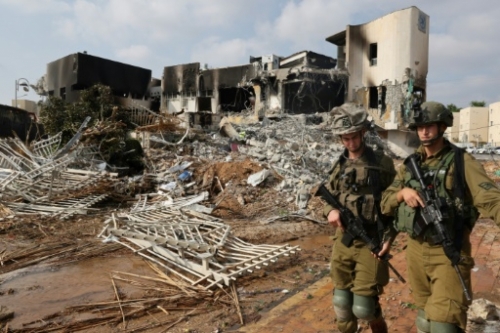
L'attaque d'hier contre un convoi d'ambulances, dont certaines ont été touchées à l'hôpital Shifa, a horrifié le monde entier. Une attaque qu'Israël a justifiée en affirmant qu'elles transportaient des miliciens du Hamas.
Ainsi, le ministère de la santé de Gaza a déclaré : "Nous avons informé la Croix-Rouge, la République arabe d'Égypte et le monde entier, par le biais des canaux de communication et des médias, du déplacement de certaines ambulances transportant des blessés qui devaient être transférés en Égypte...". (Sky News).
Le transfert de certains blessés en Égypte a été autorisé après de fortes pressions américaines et a été présenté comme une victoire pour Washington, qui a cédé à sa demande de retenue.
La publication de ce succès diplomatique américain, plus que relatif, avait précédé la visite en Israël du chef du département d'État Tony Blinken, qui avait l'intention d'accroître la pression pour obtenir une pause humanitaire.
Netanyahou a rejeté cette demande et l'attaque du convoi d'ambulances, l'une des plus excessives depuis le début de la guerre, a en quelque sorte symboliquement scellé ce rejet.
L'affirmation américaine qui condamne Gaza à devenir un abattoir
D'autre part, la prétention des Etats-Unis à pouvoir gérer seuls le conflit, en se créditant d'une influence décisive, qu'ils n'ont pas en réalité, sur leur partenaire moyen-oriental, condamne a priori leurs efforts, qui ne seraient couronnés de succès que s'ils étaient coordonnés internationalement avec les autres puissances rivales, à savoir la Chine et la Russie, comme c'était le cas à l'époque de la guerre froide où certains excès présentant des risques pour la stabilité mondiale étaient impossibles à commettre.
Le manque d'influence de l'Amérique provient de sa prétention à rester, malgré tout, la puissance hégémonique mondiale, d'où sa détermination à façonner le conflit du Moyen-Orient de telle sorte que son dénouement et son issue favorisent les intérêts américains au détriment de ceux des deux puissances rivales.
Une photographie de cette détermination est l'annonce que Zelensky s'envolera bientôt pour Israël, une visite que Tel Aviv avait précédemment rejetée. Il est évident qu'il s'agit d'une demande de Blinken, étant donné la coïncidence dans le temps de l'annonce avec sa rencontre avec Netanyahou.
L'Amérique entend ainsi raviver le lien entre la guerre d'Ukraine et celle du Moyen-Orient, qui lui tient tellement à cœur qu'elle a envoyé au Congrès une résolution appelant à une aide conjointe aux deux pays.
Cette combinaison a été rejetée par la Chambre, qui a voté en faveur d'Israël et non de Kiev, mais l'administration américaine ne veut manifestement pas jeter l'éponge. Une telle relance devrait d'ailleurs permettre de redonner de l'oxygène à la guerre ukrainienne, en surmontant les pressions internes et externes pour y mettre fin.
Il y a des élections en Amérique, Biden ou un autre candidat démocrate ne peut pas se permettre de se présenter aux électeurs avec le fardeau d'une guerre perdue sur les épaules.
Il est donc évident qu'aux yeux de l'administration américaine, la visite de Zelensky en Israël était plus importante que la pause humanitaire, d'où le plein succès de la visite de Blinken, malgré les morts de Gaza, qui étaient évidemment plutôt secondaires.
Bibi Netanyahou est bien conscient de ces priorités et joue aux échecs avec ses alliés-antagonistes à l'étranger, gérant ainsi le conflit et survivant politiquement à ceux qui, en Israël, veulent sa tête.
En effet, les efforts visant à l'écarter de la scène politique israélienne ne se sont pas relâchés, et ce conflit interne se répercute sur l'abattoir de Gaza et sur les possibilités d'une guerre plus large, que la prolongation et la brutalité du conflit impliquent.
Sur ce point, un article de Yossi Verter dans Haaretz consacré à l'affrontement qui a lieu au sein de la politique israélienne, rapporte les confidences d'une source anonyme qui, après avoir détaillé les difficultés qui entravent la destitution du premier ministre, conclut que, cependant, cela vaut la peine d'essayer, "sinon Bibi fera durer la guerre pour toujours".
Ainsi, pour revenir au début de notre note, Netanyahou a également évoqué Amalek et, pour lui aussi, la guerre de Gaza représente une opportunité, comme le 11 septembre l'a été pour les néo-conservateurs américains. Nous y reviendrons.
20:49 Publié dans Actualité | Lien permanent | Commentaires (0) | Tags : actualité, gaza, israël, palestine, proche-orient, levant, politique internationale |  |
|  del.icio.us |
del.icio.us |  |
|  Digg |
Digg | ![]() Facebook
Facebook
mercredi, 08 novembre 2023
L’essence du sionisme
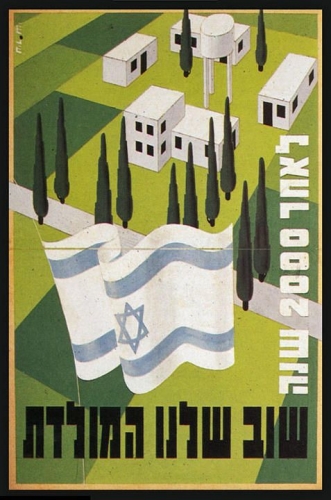
L’essence du sionisme
Le sionisme est l’idéologie d’Etat d’Israël. Pourquoi les Juifs croient-ils qu’ils sont le people élu ? Quelle est la signification de la diaspora juive comme tradition juive ? Pourquoi le sionisme est-il, d’une part, une continuation du judaïsme, et d’autre part, sa réfutation ?
Comme toute religion, le judaïsme a de nombreuses dimensions. En parler d’une manière simpliste, pour le louer ou le condamner, est primitif.
Le judaïsme est lié à la croyance que les Juifs sont le peuple élu (principalement dans un sens religieux). Leur but est d’attendre le Messie, qui sera le Roi d’Israël. Ainsi, leur religion est associée à l’attente du Messie.
D’après le judaïsme, au début du premier millénaire, les Juifs partirent dans la diaspora. Le Second Temple fut détruit, marquant le début d’une histoire bimillénaire de leur dispersion. Cette ère fait partie de la tradition juive. Le but est d’expier les péchés d’Israël accumulés durant les précédentes périodes historiques. Si cette expiation est sincère et la repentance profonde, alors d’après la tradition juive le Messie apparaîtra, signifiant la bénédiction du peuple élu. Dans ce cas, le retour des Juifs en Israël, l’établissement d’un Etat indépendant, et la création du Troisième Temple s’ensuivra.
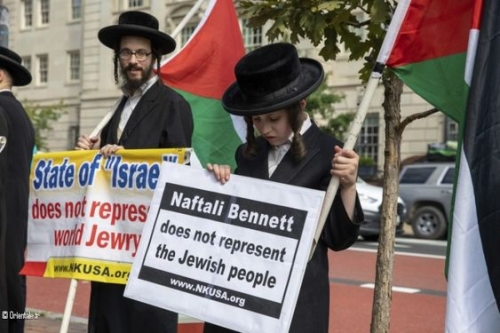
C’est la structure de la culture juive de l’attente. Les représentants les plus cohérents de cette approche sont les fondamentalistes du mouvement Neturei Karta. Ils disent que le Dieu juif leur a ordonné d’endurer les souffrances de l’exil, et donc il faut attendre la fin et se repentir de ses péchés. Et quand le Messie viendra, on pourra revenir dans la Terre Promise.

Comment se fait-il que l’Etat ait déjà été établi et que des interdictions aient été violées ? Pour comprendre que l’Israël moderne est en complète contradiction avec la religion juive, il faut revenir au XVIIe siècle, à l’époque du pseudo-messie Shabbataï Tzvi, le héraut du sionisme. Il affirma qu’il était le Messie, et donc que les Juifs pouvaient retourner en Israël. Le sort de Shabbataï Tzvi est triste. Lorsqu’il arriva devant le Sultan ottoman avec des revendications sur la Palestine, il se vit donner un choix : soit être décapité, soit se convertir à l’islam. Alors quelque chose d’étrange se produisit : Shabbataï Tzvi se convertit à l’islam. A cette époque, ce fut une déception majeure pour les communautés juives.
Cependant, des adeptes de Shabbataï Tzvi (le sabbataïsme) apparurent – ses enseignements se répandirent particulièrement parmi les Juifs ashkénazes et d’Europe de l’Est. Le mouvement hassidique se développa parallèlement, qui n’avait aucune orientation eschatologique ou messianique mais qui disséminait les enseignements kabbalistiques parmi les gens ordinaires.
Dans certaines sectes sabbataïstes (en particulier parmi les « frankistes » en Pologne), une théologie surgit : supposément, Shabbataï Tzvi était le véritable Messie et était délibérément passé à l’islam ; ainsi, il avait commis une « trahison sacrée » (il avait trahi le judaïsme pour hâter la venue du Messie).
Par une telle logique, on peut facilement se convertir à d’autres religions. Jacob Frank, par exemple, se convertit d’abord à l’islam, puis au catholicisme, arguant que les Juifs dévoraient les enfants chrétiens. Il viola complètement toutes les formes du talmudisme et trahit sa foi – mais la doctrine secrète de Frank suggérait qu’après le XVIIe siècle, la notion même de Messie avait changé. Maintenant, ce sont les Juifs eux-mêmes qui devenaient [collectivement] le Messie – il n’y avait pas besoin de l’attendre, donc même si vous trahissez votre religion, vous êtes saint – vous êtes Dieu.
Ainsi, un environnement intellectuel fut créé pour le sionisme. Le sionisme est le satanisme juif, le satanisme à l’intérieur du judaïsme, chamboulant toutes ses fondations. Si dans le judaïsme on doit attendre la venue du Messie, alors dans le sionisme un Juif est déjà Dieu. Cela est suivi par des violations des commandements talmudiques.
Cela conduit à des relations spécifiques entre le sionisme et le judaïsme. D’une part, le sionisme est une continuation du judaïsme ; d’autre part, il est sa réfutation. Les sionistes disent qu’il n’y a plus besoin de se repentir de quoi que ce soit ; ils ont suffisamment souffert, et ils sont Dieu.
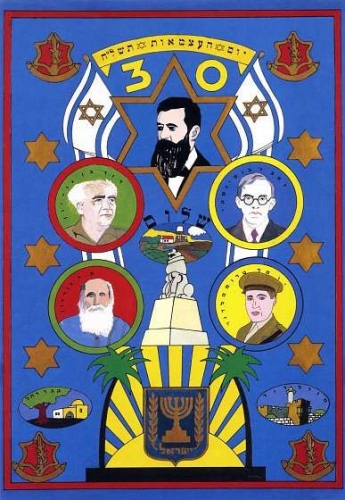
Cela explique la particularité de l’Etat sioniste moderne, qui mise non seulement sur Israël mais aussi sur les Juifs laïcs, les libéraux juifs, les communistes juifs, les capitalistes juifs, les chrétiens juifs, les musulmans juifs, les hindous juifs, etc., qui représentent tous le réseau du frankisme – chacun d’eux peut confortablement commettre une trahison sacrée, construire un Etat, affirmer leur domination mondiale, et établir une interdiction de critiquer le sionisme (dans certains Etats américains, critiquer l’Etat d’Israël est identifié à de l’antisémitisme).
La seule étape qui leur reste à faire est de faire sauter la Mosquée Al-Aqsa et de commencer la construction du Troisième Temple. Soit dit au passage, des fonds pour l’étude du Mont du Temple ont déjà été alloués par la Knesset – tout se dirige dans cette direction.
Comment peut-on apaiser un conflit avec des racines métaphysiques aussi profondes par des appels à l’ONU, par des phrases comme « réconciliez-vous » ou « observez les droits de l’homme » ? Dans le conflit palestinien, ils ont dédaigné depuis longtemps ces droits humains. De plus, nous entendons des déclarations de plus en plus absurdes venant d’eux – par exemple, accuser d’antisémitisme des gens qui défendent en réalité les Palestiniens sémites.
Si nous sortons de l’hypnose, du brouillard de la bêtise, et de fragmentation postmoderne de la conscience, nous verrons une image très étrange et terrifiante de ce qui est en train de se passer au Moyen-Orient.
Text published 14.06.2018
12:31 Publié dans Actualité, Définitions, Judaica | Lien permanent | Commentaires (0) | Tags : alexandre douguine, sionisme, israël, définition |  |
|  del.icio.us |
del.icio.us |  |
|  Digg |
Digg | ![]() Facebook
Facebook
lundi, 06 novembre 2023
La guerre du gaz: de la Baltique au Sinaï, la zone de crise s'étend. Analyse

La guerre du gaz: de la Baltique au Sinaï, la zone de crise s'étend. Analyse
Giuseppe Masala
Source: https://geoestrategia.es/noticia/41713/geoestrategia/la-guerra-del-gas:-del-baltico-al-sinai-se-amplia-la-zona-de-crisis.-analisis.html
De nos jours, nous assistons rarement à des guerres d'anéantissement, c'est-à-dire des guerres dans lesquelles les belligérants visent à la destruction complète et à la capitulation du pays adverse. Naturellement, cela s'applique surtout aux grandes puissances dotées d'armes technologiquement avancées et de capacités de destruction souvent dévastatrices.
En général, lorsque des conflits opposent ces dernières, on assiste à des guerres dites par procuration, c'est-à-dire des guerres dans lesquelles un pays fantoche sacrifie son propre territoire, et souvent aussi sa propre population, pour attaquer la puissance adverse de son propre Dominus ou un autre pays fantoche allié à son tour à l'adversaire de son propre Dominus. Je pense que la référence à cette situation est assez facile : l'Ukraine de Porochenko était un pays fantoche allié à l'OTAN et aux Américains luttant contre les républiques sécessionnistes de Donetsk et de Lougansk alliées à la Fédération de Russie, tandis que l'Ukraine de Zelensky, toujours un pays fantoche des États-Unis et de l'OTAN, lutte directement contre la Fédération de Russie.
Lorsque deux puissances du niveau de la Russie et des États-Unis s'affrontent, il est très difficile de parvenir à un affrontement direct, car la logique est précisément celle de la proxy war, la "guerre par procuration" entre pays vassaux prêts à se sacrifier.
Mais même les objectifs des conflits ne consistent plus - comme par le passé - en l'anéantissement de l'adversaire ou en sa capitulation complète. Aujourd'hui, les objectifs des conflits armés sont plus nuancés et comportent généralement - pour l'une ou l'autre des parties - toute une série d'objectifs intermédiaires possibles qui peuvent être atteints soit directement au cours des opérations militaires, soit plus tard, lors des inévitables négociations de paix qui suivront.
Dans l'immense guerre d'usure entre la Russie (et la Chine), d'une part, et les Etats-Unis et leurs vassaux, d'autre part, cette discussion sur l'éventail des objectifs à atteindre (en tout ou en partie) est certainement tout à fait valable. Si l'objectif principal des Etats-Unis est - à mon avis - de générer un immense arc de crise autour des frontières de la Russie et aussi au Moyen-Orient (où la Russie a des intérêts vitaux) afin de l'affaiblir au point de provoquer l'effondrement du régime de Poutine, il y a aussi d'autres objectifs intermédiaires à atteindre : par exemple, l'explosion totale du Moyen-Orient pourrait conduire à la réalisation de l'objectif américain d'infliger une défaite à la Russie en Syrie avec la perte de la base navale clé de Tartous qui permet à Moscou de patrouiller en Méditerranée malgré la fermeture du Bosphore en raison de la guerre en Ukraine et de la mer Noire, ou la guerre entre l'Arménie et l'Azerbaïdjan pourrait conduire à l'objectif de chasser la Russie du Caucase du Sud, peut-être même en parvenant à raviver les pulsions sécessionnistes dans les républiques russes du Daghestan et de la Tchétchénie. Ou encore, les tensions qui couvent entre la Serbie et le Kosovo et qui pourraient potentiellement conduire à l'érosion et à la chute de l'actuel gouvernement pro-russe de Belgrade en faveur d'un gouvernement pro-occidental. Dans ce contexte d'objectifs partiels - qui rime aussi étroitement avec la "guerre mondiale progressive" de Bergoglio - la guerre du gaz joue certainement un rôle de premier plan.
Comme je l'ai dit à maintes reprises, l'une des questions fondamentales pour comprendre cette énorme crise, qui couve depuis les années 2010, est de comprendre le mécanisme économique qui, depuis le début du siècle, a donné à l'Allemagne une énorme compétitivité sur les marchés mondiaux et a vaincu ses concurrents (y compris les Américains) : d'une part, le mécanisme prévoyait une politique économique européenne centrée sur la déflation salariale la plus étouffante et, d'autre part, le dumping énergétique permettait à l'Allemagne de produire à des coûts énergétiques très bas grâce aux Russes qui, pour l'essentiel, cédaient leur gaz à Merkel (qui, en retour, laissait entrevoir la possibilité d'une entrée de la Russie dans l'élite des pays occidentaux).
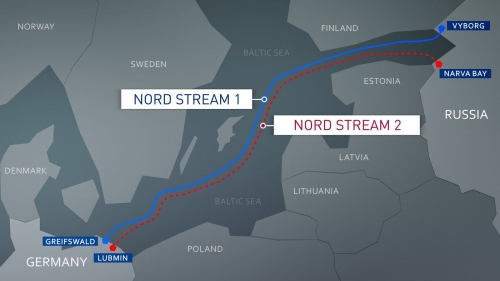
La pierre angulaire de cette politique énergétique européenne et allemande était, bien sûr, le gazoduc North Stream, qui reliait la Russie à l'Allemagne, pompant le gaz nécessaire à l'énorme appareil productif allemand sans passer par des pays russophobes et pro-américains tels que la Pologne et l'Ukraine. Comme vous le savez, cette infrastructure critique a été détruite par une série d'explosions malveillantes survenues le 26 septembre 2022, alors que la guerre en Ukraine venait d'éclater. Un événement sans précédent en temps de paix.
Si l'analyse des faits devait se concentrer sur le qui prodest, c'est-à-dire sur qui profite de l'explosion de North Stream, la réponse est simple: l'Ukraine porte un coup dur à la Russie, propriétaire du gazoduc, la Pologne retrouve son rôle central dans la gestion des flux énergétiques vers l'Europe en provenance de la Russie et, surtout, les États-Unis qui voient le cordon ombilical entre l'énergie russe à bas prix et l'appareil productif allemand définitivement rompu.
Bien sûr, il n'y a pas de preuve certaine que ce sont ces pays qui ont détruit le North Stream mais, à moins de vouloir croire à un harakiri russe qui détruit l'un de ses atouts fondamentaux, il faut au moins envisager l'hypothèse que ceux qui ont mené l'attaque étaient peut-être les États-Unis ou des marionnettes engagées à leur service. Le journaliste d'investigation américain (et lauréat du prix Pulitzer) Seymour Hersh a fait sienne cette hypothèse en citant des sources directes américaines et étrangères.
Quoi qu'il en soit, on peut toujours affirmer qu'une guerre totale est menée dans le Grand Nord à propos des gazoducs. Une guerre qui ne semble pas avoir pris fin avec l'explosion du North Stream. En effet, il y a quelques semaines, une fuite de gaz s'est produite dans le petit gazoduc - le Balticconnector - qui relie la Finlande et l'Estonie. Il n'a pas fallu longtemps pour que des soupçons de sabotage se fassent jour ; les rumeurs se sont intensifiées au cours des dernières semaines. En effet, le Bureau national d'enquête finlandais (NBI) a déclaré que l'enquête sur les dommages subis par le gazoduc Balticconnector a révélé que le navire New Polar Bear, battant pavillon de Hong Kong, se trouvait au moment et sur le lieu de l'incident.

Aux déclarations déjà explosives du NBI finlandais s'ajoutent celles des enquêteurs estoniens qui, en plus de l'incroyable hypothèse du "sabotage chinois", n'ont pas oublié de suivre l'exemple du Kremlin en signalant que le navire russe Sevmorput se trouvait dans la même zone lors de l'accident. Mon Dieu, les enquêteurs estoniens impliqués dans l'enquête ont cependant admis qu'ils ne pouvaient pas affirmer avec certitude que ces navires étaient impliqués dans le prétendu sabotage de l'oléoduc. Mais cela a suffi au président letton Edgars Rinkivics pour faire une déclaration grandiloquente selon laquelle l'OTAN fermerait la mer Baltique si l'implication de la Russie dans l'attaque de l'oléoduc Balticconnector était prouvée.
Une déclaration explosive du président letton qui aggrave l'état de tension déjà élevé entre l'OTAN et la Russie. Pour en comprendre la gravité, il suffit de rappeler qu'un blocus naval équivaut, en droit international, à un acte de guerre ; et il ne fait aucun doute que c'est ainsi qu'il sera considéré par la Russie, qui n'acceptera jamais de voir son accès à la mer Baltique bloqué, notamment parce qu'une telle éventualité reviendrait à transformer l'enclave russe de Kaliningrad - située entre la Pologne et la Lituanie - en une nouvelle bande de Gaza en plein centre de l'Europe.
Cependant, au-delà des déclarations du président letton que nous prévoyons disproportionnées (voire carrément insensées), une première étape officielle doit être franchie après les déclarations de Balticonnector. La Russie s'est retirée de l'accord de coopération transfrontalière avec la Finlande.
L'arc de la crise s'élargit et s'étend désormais du Sinaï à la mer Baltique.
* est diplômé en économie et s'est spécialisé dans la "finance éthique". Il se déclare cyber-marxiste mais, comme Leonardo Sciascia, pense qu'"il n'y a pas d'échappatoire à Dieu, ce n'est pas possible. L'exode de Dieu est une marche vers Dieu".
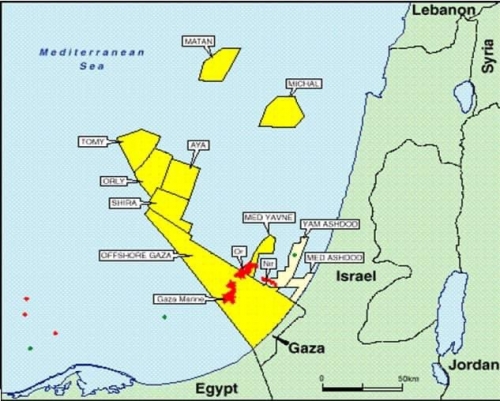
Israël, Gaza et la guerre économique mondiale
Emiliano Brancaccio*
Commentant l'extension des fronts de guerre au Moyen-Orient, le président de la République Sergio Mattarella a déclaré : "Le monde est devenu pire, non pas à cause d'un virus, mais à cause d'un comportement humain malheureux". C'est vrai, mais ce n'est pas suffisant. Le problème, ajoutons-nous, est de comprendre quels sont les grands mécanismes qui induisent les comportements humains à inaugurer un nouvel âge malheureux de fer et de feu.
On ne peut pas dire que les commentateurs traditionnels aident à percer un tel mystère. Plutôt que d'essayer de comprendre les faits, les "géopoliticiens" du courant dominant semblent se livrer à un travail de persuasion douteux, qui consiste à susciter des émotions et des réflexions à partir d'un moment arbitrairement choisi. Ils nous incitent à nous horrifier et à prendre position, par exemple, uniquement sur la base des violences du Hamas le 7 octobre 2023, tout en nous suggérant d'éteindre nos sens et nos cerveaux sur la transformation par Israël de Gaza en prison à ciel ouvert, ou sur d'autres crimes et méfaits commis par les différents acteurs impliqués et antérieurs à cette date. De plus, comme si l'arbitraire du cadre temporel ne suffisait pas, ils nous proposent d'examiner les conflits militaires comme s'ils étaient une simple conséquence de tensions religieuses, ethniques, civiles et idéalistes. Ils n'apprécient guère l'issue violente des conflits économiques.
La guerre de Gaza place les intérêts économiques au centre de ses préoccupations
Disons les choses telles qu'elles sont. Si l'objectif est de comprendre la dure réalité qui nous entoure, la contribution de ces analystes est inutile.
Pour découvrir les éléments déclencheurs de la dynamique actuelle de la guerre, une méthode un peu plus robuste, inspirée de certaines contributions récentes de la recherche "historico-matérialiste", peut s'avérer utile. Cette méthode ne néglige pas les déterminants religieux, culturels ou idéels des conflits, mais les subordonne à un mécanisme historique plus général et plus puissant, qui place au centre de l'enquête les facteurs matériels et les intérêts économiques qui alimentent les vents de la guerre. En substance, l'argent sert à déchiffrer le mouvement des comportements humains malheureux.
Récemment, cette méthodologie a été appliquée au conflit en Ukraine, dans l'un de nos livres [1], puis dans un appel intitulé "Les conditions économiques de la paix" que nous avons publié dans le Financial Times et Le Monde, ainsi que dans ces mêmes pages [2].
Ces contributions ont été largement saluées par les membres de l'Accademia dei Lincei et d'autres, mais aussi critiquées par certains détracteurs. Parmi eux, certains affirment que notre méthode de recherche n'est pas utile pour expliquer les conflits "non économiques", tels que le conflit israélo-palestinien. En effet, il ne devrait pas être difficile d'identifier un élément "économique" dans un conflit entre deux peuples caractérisés par des taux de croissance démographique élevés et destinés à se disputer une part dérisoire du monde. Mais il ne s'agit pas seulement d'une question de pressions démographiques. Comme je l'ai soutenu à l'Institut Gramsci avant même la nouvelle explosion de violence, le conflit israélo-palestinien non résolu, dont le point de friction maximal se situe à Gaza, est un facteur majeur des énormes contradictions, de nature économique, qui alimentent les tensions militaires mondiales. Voyons pourquoi.
Quel est le rapport entre la crise hégémonique de l'économie américaine et Gaza ?
Le point de départ de notre interprétation est le fait, reconnu par les diplomaties occidentales elles-mêmes, d'une crise hégémonique de l'économie américaine. Le capitalisme américain conserve le leadership mondial en matière de technologie et de productivité. Cependant, de l'ère fastueuse du libre-échange mondial, les États-Unis héritent d'un fardeau important de problèmes, de compétitivité et de déséquilibres connexes. Bien que caractérisée par une croissance plus faible que celle de la Chine et d'autres grands pays émergents, l'économie américaine présente un excès permanent d'importations par rapport aux exportations et, par conséquent, un lourd déficit net vis-à-vis des pays étrangers, qui a atteint le chiffre record de 18.000 milliards de dollars.

Si le dollar reste prééminent dans l'ordre monétaire, ce déséquilibre est de plus en plus difficile à gérer. Il n'est pas sans rapport, entre autres, avec les difficultés actuelles de financement des campagnes militaires dans le monde. Si, à l'époque glorieuse du mondialisme, les États-Unis développaient presque de concert la dette et les milices à l'étranger, aujourd'hui, ce glorieux circuit "militaro-monétaire" traverse indubitablement une crise. Le géant américain se trouve donc au milieu d'une transition historique difficile, s'adaptant au nouveau scénario mondial moins facile.
Les raisons du virage protectionniste de Washington
Signe essentiel de cette transition historique américaine, un tournant colossal s'est opéré dans la politique économique internationale. Prenant acte des problèmes de compétitivité et de dette extérieure apparus durant la phase mondialiste, les États-Unis ont dû agir de manière dialectique, c'est-à-dire qu'ils ont abandonné l'ancienne ligne d'ouverture au libre-échange mondial et l'ont démolie, en inaugurant une stratégie de levée des barrières commerciales et financières protectionnistes, qu'ils appellent "friend shoring" (renforcement de l'amitié).
En pratique, avec des critères économiques sélectifs, très différents de ceux du passé, les Américains tentent de diviser le monde en deux listes : d'une part, les "amis" et les partenaires occidentaux avec lesquels il faut faire des affaires et, d'autre part, les "ennemis" dont il faut se tenir à l'écart. Parmi les "ennemis", les patrons du pouvoir américain comptent les pays exportateurs qui ont accumulé des crédits envers les Etats-Unis et qui pourraient à tout moment utiliser leurs actifs pour acquérir des entreprises américaines : la Chine en premier lieu, mais aussi plusieurs autres détenteurs de la dette américaine situés à l'Est et même, dans une faible mesure, la Russie. En bref, Washington doit éviter le risque d'une "centralisation du capital" entre les mains de l'Est. Le virage protectionniste des États-Unis sert en fin de compte cet objectif.
Le tournant de la guerre en Ukraine et la question énergétique
On comprend aisément que la Chine, la Russie et les autres créanciers de l'Est n'apprécient pas ce changement de cartes sur la table. Leur thèse est que les Etats-Unis ne sont plus en mesure de modifier l'ordre économique mondial à leur guise en fonction des convenances de la phase historique. Ce n'est pas un hasard si plusieurs ténors de la diplomatie internationale ont vu dans la guerre en Ukraine une étape importante, permettant également de vérifier la stabilité du nouvel ordre protectionniste décidé unilatéralement par les Américains.
Mais ce virage protectionniste présente également une difficulté intrinsèque. Le problème est que, dans le plan américain de division de la planète en blocs économiques, la question de l'énergie est encore plus épineuse qu'à l'époque de la mondialisation. En effet, le bloc occidental dirigé par les États-Unis est en grande partie une économie qui importe de l'énergie et des matières premières pour ensuite les transformer.
Certes, grâce aux nouvelles technologies d'extraction, les Américains ont amélioré leur balance commerciale énergétique. Il est également vrai que la "transition écologique" réduit lentement la dépendance de l'Occident à l'égard des grands exportateurs de combustibles fossiles. Mais globalement, le bloc dit "ami" aura encore longtemps besoin d'énergie et de matières premières en provenance de l'étranger.

Trump, Biden, les accords d'Abraham et l'impact sur Gaza
Et c'est là que nous en arrivons aux tensions actuelles au Moyen-Orient. Le virage protectionniste des États-Unis est à l'origine des tristement célèbres "accords d'Abraham" de 2020 et des traités connexes. Signés par Trump mais aussi poussés par Biden, ces accords visent à "normaliser" les relations d'Israël avec les principaux producteurs d'énergie arabes et, plus généralement, avec les pays à majorité musulmane riches en ressources naturelles. L'objectif est clair : faciliter le repositionnement de ces pays dans le bloc économique occidental énergivore. Il s'agit là d'une pièce décisive pour compléter la grande mosaïque du "friend propping" américain.
La diplomatie internationale a cependant toujours admis que cette pièce présentait plusieurs faiblesses. La première est que les accords abrahamiques avec Bahreïn et les Émirats arabes unis, et à l'avenir avec l'Arabie saoudite, ainsi que les traités annexes avec le Maroc, le Soudan et d'autres pays, laissent la question de la Palestine et de la bande de Gaza complètement en suspens. À tel point que la diplomatie américaine a dû se livrer à un exercice rhétorique audacieux, affirmant que le processus de "normalisation des relations avec Israël ne représente pas un substitut à la paix entre Israéliens et Palestiniens". Un argument embarrassant par sa vacuité.
La question palestinienne sape le projet américain
Au fond, dans les négociations pour la "normalisation" des relations entre Israël et les producteurs d'énergie arabes, ceux qui ont agi pour que la question palestinienne ne soit pas résolue ont eu un impact plus ou moins conscient et beaucoup plus profond, ébranlant même le projet américain de division de l'économie mondiale en blocs. Ce n'est qu'en tenant compte de ce point de fragilité systémique de "l'accompagnement des amis" qu'il est possible de comprendre le sens et les implications globales de l'agression du Hamas sur le territoire israélien, du déclenchement de la réaction militaire de Tel-Aviv et des conséquences menaçantes non seulement à Gaza, mais dans l'ensemble du Moyen-Orient.
Gaza, la Chine et l'idée qu'il n'est pas viable de soutenir des amis
La position adoptée par le principal homologue sur la scène mondiale est révélatrice à cet égard. Le gouvernement chinois a fait valoir que la reprise des affrontements entre Israël et Gaza constituait une indication claire de l'instabilité non seulement des accords d'Abraham, mais aussi de l'IMEEC, le corridor Inde-Moyen-Orient-Europe que les Américains parrainent en tant que route commerciale opposée à la nouvelle route de la soie de la Chine.
Bref, pour Pékin, les tentatives américaines de diviser le monde en deux sont précaires. Le retour de la question palestinienne sur le devant de la scène est une preuve supplémentaire que le projet protectionniste américain de "soutien aux amis" n'est pas viable.
Les conditions ne sont pas encore réunies pour vérifier si la thèse chinoise de l'insoutenabilité du "crony propping" est destinée à être confirmée. Toutefois, un fait émerge des faits : le virage américain vers cette forme de protectionnisme unilatéral est actuellement le principal facteur de déclenchement d'un comportement humain malheureux vers la guerre. C'est la principale cause matérielle de la détérioration du monde.
La paix, le capitalisme éclairé et le rôle de l'Europe
L'appel à des "conditions économiques pour la paix" indique un moyen d'apaiser les tensions militaires internationales. La condition préalable est que les Américains abandonnent leur stratégie de division de l'économie mondiale en blocs "amis" et "ennemis". Quant aux Chinois, ils devraient accepter un plan visant à réguler, politiquement et non en fonction du marché, l'énorme crédit qu'ils ont accumulé envers les États-Unis.
Pour qu'une solution de "capitalisme éclairé" ait une chance de succès, l'Europe pourrait jouer un rôle important. Après tout, la même position extérieure active offre à l'UE des opportunités politiques que les Américains n'ont pas. Mais l'idée de l'Europe comme "agent de paix", évoquée par Romano Prodi lors d'un débat avec moi il y a quelques années, semble dépassée par la réalité des institutions européennes subordonnées au protectionnisme agressif des États-Unis [3]. [La leçon à tirer des affrontements qui se déroulent dans la bande de Gaza, mais aussi en Cisjordanie et à la frontière israélo-libanaise, devrait pourtant être claire. En l'absence de "conditions économiques pour la paix", les contradictions capitalistes internationales nous poussent dans les ténèbres de la guerre totale.
*économiste à l'université de Sannio, promoteur de l'appel international "Conditions économiques pour la paix" publié dans le Financial Times, Le Monde et Econopoly.
NOTES
[1] Brancaccio, E., Giammetti, R., Lucarelli, S. (2022). La guerre capitaliste. Compétition, centralisation, nouveau conflit impérialiste. Mimesis, Milan.
[2] Brancaccio, E., Skidelsky, R., et al. (2023). The economic conditions for peace : the economic conditions that make wars more likely, Financial Times, 17 février (traduit. Les conditions économiques de la paix, Le Monde, 12 mars).
[3] Brancaccio, E., Prodi, R. (2017). Horizons européens. Dialogue entre Romano Prodi et Emiliano Brancaccio sur l'histoire et l'avenir de l'UE. Micromega, n. 5 (réimprimé dans : Brancaccio, E., Ce ne sera pas un déjeuner de gala, Meltemi, Milan, 2020).
20:06 Publié dans Actualité, Géopolitique | Lien permanent | Commentaires (0) | Tags : gaza, gaz, énergie, méditerranée, baltique, mer baltique, nord stream, europe, affaires européennes, palestine, israël, géopolitique, politique internationale |  |
|  del.icio.us |
del.icio.us |  |
|  Digg |
Digg | ![]() Facebook
Facebook
samedi, 04 novembre 2023
Pourquoi l'Inde a soutenu Israël dans le conflit du Moyen-Orient

Pourquoi l'Inde a soutenu Israël dans le conflit du Moyen-Orient
Leonid Savin
Source: https://www.geopolitika.ru/article/pochemu-v-blizhnevostochnom-konflikte-indiya-podderzhala-izrail
Le 26 octobre, les autorités qataries ont condamné à mort huit citoyens indiens accusés d'espionnage au profit d'Israël. Selon les médias, les accusés étaient d'anciens cadres indiens et travaillaient pour une société privée, Al Dahra Global Technologies and Consultancy Services.
Ils ont été arrêtés par les services de sécurité qataris en août 2022, mais la publication du verdict a coïncidé avec l'escalade dans la bande de Gaza. Cela a donné lieu à des spéculations selon lesquelles le verdict a été rendu en raison de la position pro-israélienne de l'Inde.
En effet, le Premier ministre indien Narendra Modi, presque immédiatement après l'attaque du Hamas contre Israël, a exprimé son soutien à ce dernier, en écrivant sur son compte de médias sociaux: "Nous sommes solidaires d'Israël en ce moment difficile". Quatre jours plus tard, lors d'une conversation téléphonique avec Benjamin Natanyahu, il a exprimé son soutien total aux actions d'Israël.
Dans le même temps, les dirigeants indiens n'ont pas appelé à un cessez-le-feu ni mentionné la nécessité d'un État palestinien, comme l'ont fait de nombreux chefs d'État, dont le président russe Vladimir Poutine.
Mais cela n'a pas toujours été le cas. Historiquement, l'Inde a soutenu les Palestiniens et a voté contre la résolution des Nations unies visant à créer Israël en 1947, puis a reconnu l'Organisation de libération de la Palestine comme représentant du peuple palestinien en 1974. En tant que membre du mouvement des non-alignés, l'Inde a apporté son soutien diplomatique à l'OLP, condamnant aux Nations unies les "violations généralisées, systématiques et flagrantes des droits de l'homme et des libertés fondamentales" commises par Israël. Cependant, avec l'effondrement du système mondial bipolaire, le pays a changé de position.
Dès 1950, l'Inde a reconnu Israël et autorisé l'ouverture du consulat du pays à Mumbai. En 1992, l'Inde et Israël ont normalisé leurs relations et, à la même époque, New Delhi a commencé à acheter des armes à Tel-Aviv pour la première fois. Après l'arrivée au pouvoir du Bharatiya Janata Party avec Modi à sa tête en 2014, les relations avec Israël ont commencé à se développer encore plus rapidement.
Cependant, le même paradoxe se retrouve dans les relations avec les États-Unis: les nationalistes hindous ont toujours favorisé le rapprochement avec ces pays, même lorsque le Congrès indien était au pouvoir.
En 2015, New Delhi s'est abstenu de voter au Conseil des droits de l'homme de l'ONU sur un rapport critiquant la guerre menée par Israël contre Gaza en 2014. C'était la première fois que l'Inde ne votait pas contre Israël au sein de cet organe mondial. En juillet 2017, Modi s'est rendu à Tel-Aviv, où il a été reçu par Benjamin Natanyahu. Et en 2018, déjà, le Premier ministre israélien a effectué une visite de retour à New Delhi. Depuis, les contacts entre les deux peuvent être considérés comme amicaux.
Pourtant, l'approche de l'Inde à l'égard de la Palestine n'a pas encore été la même que celle qu'elle a montrée en 2023. Lorsqu'une nouvelle escalade a eu lieu en mai 2021 et que les forces de sécurité israéliennes ont eu recours à la violence contre les Palestiniens à la mosquée Al-Aqsa à Jérusalem, le Hamas et d'autres groupes ont lancé des centaines de roquettes sur le territoire israélien. En réponse, Israël a frappé Gaza, tuant environ 300 Palestiniens. L'Inde a alors condamné à la fois le Hamas et Israël.
Des liens étroits
Comme le suggère Foreign Policy, plusieurs facteurs ont désormais influencé les calculs de Modi. Tout d'abord, l'Inde est confrontée à des élections nationales l'année prochaine. Il est probable que le Bharatiya Janata Party ait déjà fait une croix sur le vote musulman, et Modi ne se préoccupe pas du tout de leur vote, puisque son parti prône le nationalisme hindou.

Deuxièmement, l'Inde est depuis longtemps confrontée à des problèmes d'attentats terroristes perpétrés par des militants islamistes. La position inflexible sur les attaques du Hamas est donc aussi un signal tacite adressé à Islamabad, que New Delhi accuse d'avoir des liens avec ces militants. Modi avait précédemment comparé les frappes précises de l'Inde sur les bases de militants dans le Cachemire contrôlé par le Pakistan aux opérations secrètes d'Israël contre les militants sur le sol étranger, suggérant que les prouesses militaires d'Israël méritaient d'être imitées.
Il convient de préciser ici que le Pakistan lui-même a subi des attaques terroristes islamistes pendant de nombreuses années, de sorte qu'Islamabad ne peut être accusé sans équivoque de soutenir les militants qui mènent des attaques terroristes sur le territoire indien. En outre, outre les islamistes, les naxalites, partisans de l'idéologie de gauche - du marxisme au maoïsme - sont actifs en Inde et disposent d'un vaste réseau de camps dans un certain nombre d'États.
Par ailleurs, l'Inde a peut-être pris note du fait que plusieurs États arabes clés, de l'Égypte à l'Arabie saoudite, n'ont pas apporté leur soutien au Hamas. Contrairement aux crises précédentes, ces pays avaient normalisé ou étaient en train de normaliser leurs relations avec Israël lorsque le Hamas a lancé l'attaque actuelle. L'absence de soutien global à la Palestine est due à la prudence de ces pays et à l'intervention des États-Unis dans le conflit. Néanmoins, il s'accroît de jour en jour, tant de la part des autorités que de la population.
La réaction prudente de certains pays arabes donne à New Delhi une certaine marge de manœuvre diplomatique. Surtout lorsqu'il s'agit de ses relations commerciales et stratégiques croissantes avec les pays du Conseil de coopération du Golfe.
Enfin, la condamnation sans équivoque du Hamas par l'Inde pourrait signaler aux États-Unis sa volonté de soutenir son allié critique. Cette prise de position publique pourrait apaiser les craintes de l'administration américaine quant à la position hésitante de l'Inde vis-à-vis de la Russie, l'incapacité de Modi à condamner la conduite de l'Opération militaire spéciale en Ukraine ayant été une source de frustration à Washington.
Il convient également d'ajouter que lorsque Modi était gouverneur du Gujarat, de nombreux pogroms de musulmans ont eu lieu dans cette région avec la connivence des autorités. Il est donc probable que les points de vue de Netanyahou et de Modi sur les musulmans, qu'ils considèrent comme des adversaires, voire des ennemis, soient proches et liés par le caractère unique des deux religions - l'hindouisme et le judaïsme. Les experts estiment également que les idéologies du sionisme et du nationalisme hindou sont quelque peu similaires.
En outre, l'Inde et Israël sont également liés par une étroite coopération militaro-technique. L'Inde est devenue l'un des principaux acheteurs d'équipements militaires et de munitions israéliens dans les années 90, et a ensuite commencé à acheter des véhicules aériens sans pilote, des radars et des systèmes de défense antimissile. L'Inde effectue des achats d'une valeur de plusieurs milliards de dollars. D'autre part, Israël a permis aux entreprises technologiques indiennes d'accéder à son marché. Il existe également une coopération dans les domaines de l'agriculture et de l'énergie. Les services de renseignement indiens ont également utilisé le célèbre programme d'espionnage Pegasus de la société israélienne NSO pour espionner l'opposition et les personnes soupçonnées d'entretenir des liens avec des extrémistes.
Menaces extérieures
Bien que la position officielle de l'Inde soit pro-israélienne, le pays lui-même est divisé. Les Palestiniens sont soutenus non seulement par la population musulmane de l'Inde, mais aussi par les chrétiens et les partis et hommes politiques de gauche. Le site web du plus grand parti d'opposition, le "Congrès national indien", ne contient aucune information sur les événements en Palestine, mais uniquement des communiqués de presse sur des questions de politique intérieure et des critiques à l'égard du régime en place.
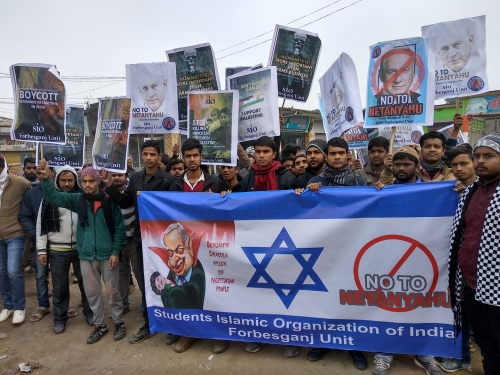
Le 26 octobre, la Ligue musulmane de l'Union indienne a organisé un grand rassemblement de soutien aux Palestiniens dans l'État du Kerala ; des rassemblements similaires ont eu lieu à Kolkata, où les sentiments gauchistes sont forts, et à Bihar.
Entre-temps, certains signes indiquent que le conflit palestinien pourrait s'aggraver dans le Cachemire divisé. Selon les médias indiens, dans la nuit du 26 au 27 octobre, l'armée pakistanaise a bombardé cinq postes indiens sur la ligne de démarcation au Cachemire. Les tirs ont duré huit heures, blessant un officier de l'armée, tandis que les habitants fuyaient leurs maisons et se réfugiaient dans des abris. Les médias pakistanais n'ont pas rapporté l'incident, tandis que les médias indiens ont noté que des tirs similaires avaient eu lieu le 17 octobre.
Auparavant, les tirs sur la ligne de séparation avaient cessé après que l'Inde et le Pakistan eurent négocié une déclaration de cessez-le-feu en février 2021. Toutefois, selon la police indienne, la situation dans l'État du Jammu-et-Cachemire reste tendue, l'Inde continuant d'accuser le Pakistan d'entraîner des militants. Plusieurs organisations islamistes militantes sont connues pour opérer dans l'État.
En tout état de cause, le conflit actuel à Gaza sera utilisé par le Pakistan pour attirer l'attention sur le problème des musulmans dans la partie du Cachemire contrôlée par l'Inde et exiger un référendum sur l'autodétermination conformément à la résolution de l'ONU. Et si la question palestinienne actuelle renforce la solidarité pan-musulmane, elle pourrait créer de nouveaux défis pour l'Inde à l'avenir.
Néanmoins, l'Inde tente de tirer une leçon du conflit actuel, qui se déroule à des milliers de kilomètres de là. Bloomberg écrit que le pays est en train de mettre en place un système de surveillance par drones sur tout le périmètre de sa frontière extérieure pour parer à des attaques surprises comme celle du Hamas en Israël. Selon les sources de l'agence, les responsables du ministère de la défense du pays ont déjà rencontré six fournisseurs nationaux de drones de surveillance et de reconnaissance et la commande devrait être annoncée le mois prochain. L'armée espère lancer le système sur certaines parties de la frontière dès le mois de mai.
Si les autorités indiennes pensent pouvoir maintenir leur position, la polarisation sur Israël et la Palestine pourrait quelque peu saper la cote de popularité du Bharatiya Janata Party. L'accent mis par l'Hindutva sur le sentiment anti-musulman et la préférence apparente pour la coopération avec Israël et les États-Unis rendront également méfiants les autres États qui ont adopté une position pro-palestinienne ou qui critiquent l'hégémonie des États-Unis. Les opinions personnelles de Modi sont généralement compréhensibles, mais elles pourraient avoir des conséquences négatives pour l'Inde.
19:52 Publié dans Actualité | Lien permanent | Commentaires (3) | Tags : politique internationale, inde, israël, asie, affaires asiatiques |  |
|  del.icio.us |
del.icio.us |  |
|  Digg |
Digg | ![]() Facebook
Facebook
jeudi, 02 novembre 2023
Guerres géographiques
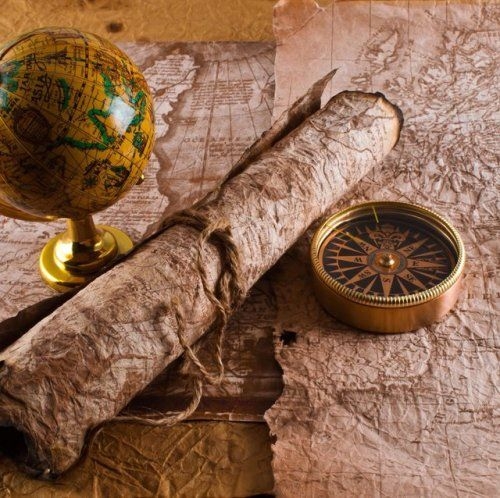
Guerres géographiques
Andrea Marcigliano
Source: https://electomagazine.it/guerre-geografiche/
Il existe une étrange façon de penser les guerres. Et, à y regarder de plus près, de les mener. Car la culture, ou plus simplement l'information, lorsqu'elle est propagée, devient une arme. Et une arme extrêmement redoutable.
Et l'une des manières de combattre les guerres, est d'user d'une arme très spécifique, celle de la géographie. Plus précisément, ce sont les cartes, qui ne représentent pas, comme on le croit généralement, la réalité objective. Mais plutôt une interprétation de celle-ci, souvent falsifiée, toujours sectaire.
Nul besoin d'inventer des cartes imaginaires de contrées fantastiques. Il suffit de prendre la cartographie d'un territoire, et de la lire d'un point de vue particulier. Les montagnes, les lacs, les mers et les plaines restent ce qu'ils sont. Mais leur signification change. Enormément.

Car les cartes sont, par essence, des récits, des narratifs. Des récits d'histoire ou des histoires. D'où les mythes. Et dans les guerres, les conflits opposent souvent des "mythologies" différentes et antithétiques.
Prenez l'affrontement entre Israéliens et Palestiniens. Il s'agit d'un conflit historique et assez ancien. Si ce n'est pas tout à fait ancien.
Tous ceux qui, de bonne ou de mauvaise foi, invoquent une solution pacifique et pacificatrice, ne font qu'évoquer la formule "Deux peuples, deux États".
Une formule, disons-le sans hésiter, banale et répétitive. Et vide de contenu. Totalement vide.
Que signifie "deux États" ? Un État est fondé sur un espace géographique précis. Déterminé, et délimité, par des frontières. L'État ne peut exister sans son propre territoire. Où c'est la Terre qui détermine l'espace du droit. Le Nòmos de la Terre conditionne et circonscrit le Nòmos, la loi de l'homme.
Mais là, il n'y a pas deux Terres. Divisées et distinctes par des frontières historiques clairement identifiables. Il suffit de regarder la carte.
Et vous verrez comment la Palestine, ou plutôt l'État palestinien, est une construction artificielle. Un résultat. Avec la Cisjordanie au détriment de la Jordanie, qui a historiquement régné sur ces terres. Et la fameuse bande de Gaza. Une enclave surpeuplée. Économiquement non autonome dans tous les domaines. Séparée du reste de la Palestine par Israël.
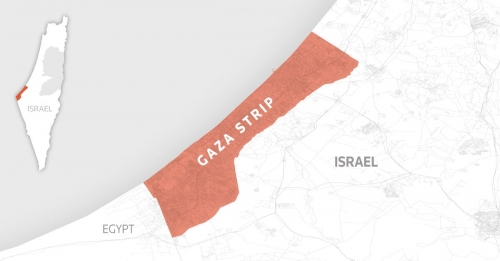
Il était inévitable que ce qui s'est passé depuis 2005 se produise. Que Gaza devienne autre chose que le reste de l'hypothétique État palestinien. Les exemples historiques d'entités étatiques territorialement séparées auraient dû nous mettre la puce à l'oreille. Sans remonter au Corridor de Dantzig, déclencheur de la Seconde Guerre mondiale, pensez au Pakistan et à ce qui est devenu le Bangladesh. Avec une épreuve sanglante, même si nous voulions l'oublier.
Gaza, séparée de la Cisjordanie, est tombée aux mains du Hamas. Elle est devenue la base opérationnelle non pas d'un État, mais d'une organisation poursuivant d'autres objectifs. D'abord l'hégémonie sur la Cisjordanie palestinienne. Et, à partir de là, contrôler l'ensemble de la Jordanie. En construisant un nouvel État islamiste aux dépens des pays arabes, plutôt que de l'ennemi déclaré, Israël.
L'hypothèse de déplacer les habitants de Gaza vers le Sinaï, avec des coûts humains apocalyptiques, ne résoudrait pas le problème. Elle ne ferait que générer le chaos en Égypte. En insérant une enclave incontrôlable dans sa région asiatique.
La question, malheureusement, n'est pas idéologique, politique ou religieuse. C'est avant tout une question de géographie. La science cruelle par excellence, comme l'appelait le plus grand géopolitologue italien, Ernesto Massi.
Deux peuples, bien sûr. Israéliens et Arabes palestiniens... mais une seule terre. Ce qui est d'ailleurs contesté à grands coups de cartes.
Israël n'a existé qu'en 1947, affirment les Palestiniens en montrant de vieilles cartes.
La Palestine n'existait pas, affirment les Israéliens, avec des cartes montrant l'ancienne et légendaire répartition des tribus d'Israël.

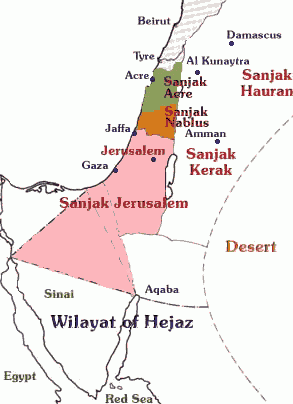
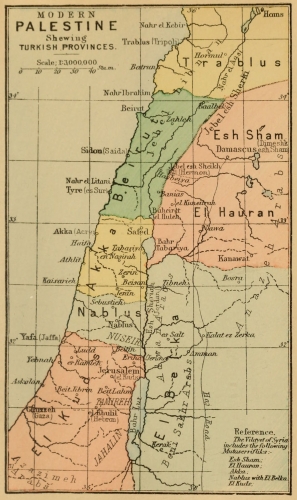
Dans cette direction, cependant, on se heurte à un mur. En effet, si l'on veut, on peut affirmer que ces terres ne sont ni la Palestine ni Israël. Il s'agit de l'ancienne Canaan. Mais les Cananéens ne peuvent pas les revendiquer.
Je n'ai pas de solution au problème. Je pense que personne ne peut l'avoir, à moins de penser à un génocide d'un côté ou de l'autre.
Seulement, d'un point de vue réaliste, je crois que nous devons cesser de nous protéger avec la formule "deux peuples, deux États".
Plus tôt cela sera fait, plus tôt nous commencerons à penser en termes de réalité. Et non dans l'abstrait.
23:08 Publié dans Actualité, Définitions | Lien permanent | Commentaires (0) | Tags : actualité, définition, palestine, israël, gaza |  |
|  del.icio.us |
del.icio.us |  |
|  Digg |
Digg | ![]() Facebook
Facebook
mercredi, 01 novembre 2023
Ni racisme ni religion. La guerre en Palestine, c'est tout sauf ça

Ni racisme ni religion. La guerre en Palestine, c'est tout sauf ça
Enrico Toselli
Source: https://electomagazine.it/ne-razzismo-ne-religione-la-guerra-in-palestina-e-tuttaltro/
Il est difficile de faire comprendre les développements de la guerre en Palestine tant que les comptes rendus journalistiques partent du mensonge de l'antisémitisme dans un conflit où les deux belligérants sont des sémites. Mais l'accusation de racisme sert à criminaliser un camp. Tandis que l'autre récupère les symboles de la persécution du siècle dernier et, si cela ne suffit pas, ceux des siècles précédents. Comme l'a fait l'inusable Zelensky, rappelant les pogroms de l'époque tsariste et "oubliant" que nombre d'entre eux se sont produits dans l'Ukraine d'aujourd'hui.
Le racisme n'a donc rien à voir là-dedans, puisque les deux partis sont sémites. La religion n'a rien à voir non plus. On l'a vu en juillet dans le Trentin, lorsque le groupe de réflexion Il Nodo di Gordio a organisé une rencontre entre des représentants de diverses religions, y compris des juifs et des musulmans. Ils se sont affrontés et ont dialogué sans le moindre problème. Parce que ceux qui ont de l'intelligence et de la culture ne font pas la guerre. Mais il est évident que les hommes de religion - qui sont bien différents des agitateurs au nom d'un Dieu quelconque - ont de moins en moins de poids par rapport aux intérêts matériels et quotidiens de leurs fidèles respectifs.
Sans même aller jusqu'à la réalité du catholicisme. Avec des églises dramatiquement vides qui témoignent de l'inutilité désormais absolue de la parole du pape et des hiérarchies ecclésiastiques.
Mais si ce n'est pas la race, si ce n'est pas la religion, alors quel est le moteur d'un affrontement qui - grâce à un criminel comme Netanyahou et à son protecteur RimbanBiden - risque de se transformer en une guerre mondiale aux conséquences catastrophiques ?
Le seul vrai Dieu qui reste dans cette partie du monde: l'argent. L'argent qui pousse les colons à prendre d'assaut les fermes palestiniennes en Cisjordanie pour voler les terres. L'argent qui pousse à occuper Gaza pour la possibilité éventuelle d'avoir à l'avenir des gisements de gaz à exploiter dans la mer. L'argent qui pousse les pays arabes et islamiques de la région à utiliser les Palestiniens comme une arme d'échange ou de menace pour de nouveaux accords entre eux ou avec les atlantistes.
Ce ne sont pas les rabbins ou les imans qui déclenchent les guerres. Ce sont les intérêts géostratégiques qui profitent de la faiblesse de l'Autorité palestinienne, de la perfidie de Netanyahou prêt à sacrifier les Israéliens pour rester au pouvoir, de la stupidité arrogante des Américains, des intérêts de Moscou pour détourner l'attention de l'Ukraine, des intérêts de Pékin pour un conflit qui affaiblira encore plus l'Occident.
Tous ont des intérêts et sont prêts, pour leurs propres intérêts, à faire massacrer des dizaines de milliers de civils palestiniens. Tous les protagonistes sont déjà tournés vers l'avenir. Non pas celui de la Palestine et de la création éventuelle des deux États, mais celui des nouveaux rapports de force mondiaux. Plus le massacre se poursuivra - ce qui changera le terme de "boucherie mexicaine" en "boucherie israélienne" - plus la méfiance et la colère du Sud mondial à l'égard des atlantistes augmenteront. Et beaucoup sauront en tirer parti.
20:02 Publié dans Actualité | Lien permanent | Commentaires (0) | Tags : actualité, hamas, palestine, gaza, israël |  |
|  del.icio.us |
del.icio.us |  |
|  Digg |
Digg | ![]() Facebook
Facebook
lundi, 30 octobre 2023
Israël/Hamas: la guerre du gaz
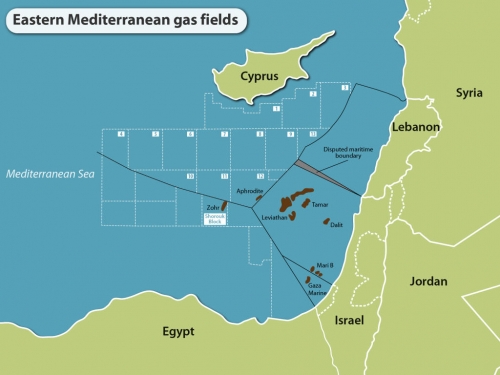
Israël/Hamas: la guerre du gaz
Andrea Muratore
Source: Compte LinkedIn d'Andrea Muratore
CISINT - Italian Centre for Strategy and Intelligence
CARNET DE GUERRE N°9 - LE FRONT DU GAZ
La guerre entre Israël et le Hamas affecte également le marché du gaz. En particulier dans l'État hébreu.
Suite aux attaques du Hamas, le 9 octobre, le ministère israélien de l'énergie a ordonné à Chevron, l'opérateur de la plateforme Tamar située à 25 kilomètres au nord-ouest de Gaza, qui répondait principalement aux besoins domestiques, de cesser temporairement sa production. Le 10 octobre, le gouvernement israélien a également demandé à Chevron de suspendre temporairement les flux via le principal gazoduc reliant Israël et l'Égypte, le gazoduc East Mediterranean Gas (EMG), qui relie Ashkelon, une ville israélienne située à 13 km au nord de Gaza, à Arish, dans le nord du Sinaï, en Égypte.
En 2022, Israël a produit 21,9 milliards de mètres cubes (Gm3) de gaz, dont 11,4 Gm3 provenant de Leviathan et 10,2 Gm3 de Tamar. Sur ce total, 12,7 milliards de mètres cubes ont été consommés dans le pays, tandis que 5,8 milliards de mètres cubes ont été exportés vers l'Égypte et 3,4 milliards de mètres cubes vers la Jordanie. Les exportations devraient encore augmenter en 2023, soutenues par le début de la production du champ de Karish (données de Bruegel : https://lnkd.in/dAR3X5Dd).
Le risque d'interruption de l'approvisionnement en gaz de l'Égypte et de la Jordanie, ainsi qu'une crise énergétique à Gaza, pourraient compliquer les scénarios économiques régionaux. En outre, il s'agira d'un test important pour l'Europe. Il y a quelques mois encore, on pensait que l'axe Israël-Égypte pourrait ouvrir la soudure entre Leviathan-Tamar et Zohr, le champ de gaz maxi-offshore égyptien découvert par Eni, et consolider les exportations vers l'Europe. La combinaison du doublement de Leviathan, des nouvelles découvertes et de l'augmentation de la capacité d'exportation de l'Etat juif pourrait conduire, directement ou non, Tel Aviv à fournir un dixième du gaz garanti aujourd'hui à l'Europe par la Russie dans les années à venir. Renforcer l'intérêt italien. Des objectifs de plus en plus aléatoires pour des raisons sécuritaires (https://lnkd.in/dx6Sxd5r) ainsi qu'une stabilisation avec le Liban motivée précisément par l'énergie (https://lnkd.in/dGNQZ4f2).
15:53 Publié dans Actualité | Lien permanent | Commentaires (0) | Tags : gaz, hydrocarbures, gaza, hamas, israël, proche-orient, levant, méditerranée, méditerranée orientale, actualité, énergie |  |
|  del.icio.us |
del.icio.us |  |
|  Digg |
Digg | ![]() Facebook
Facebook
vendredi, 27 octobre 2023
Gaza : déportation de la population sur le terrain, gaz naturel et intérêts politiques et diplomatiques

Gaza : déportation de la population sur le terrain, gaz naturel et intérêts politiques et diplomatiques
Filip Martens
Il y a tellement de désinformation et de mystères dans l'attaque du Hamas contre Israël le 7 octobre 2023 qu'il faut creuser pour savoir à qui profite ce conflit. Il y a deux règles pour interpréter ces questions. Primo, ne croyez JAMAIS ce que vous disent les gouvernements occidentaux et leurs grands médias. Secundo, ne croyez JAMAIS la raison officielle d'une guerre impliquant un ou plusieurs états occidentaux. En ce qui concerne. l'attaque japonaise sur Pearl Harbour en 1941 (dont il a été officiellement admis en 1999 que le gouvernement américain était au courant à l'avance, mais n'a pas prévenu l'amiral Kimmel, commandant d'Hawaï) (1), l'incident du Tonkin en 1964 (comme raison du déploiement des troupes américaines au Sud-Vietnam et du début d'une guerre contre le Nord-Vietnam), les attaques du 11 septembre 2001 (comme raison du déploiement des troupes américaines au Sud-Vietnam et du début d'une guerre contre le Nord-Vietnam), les attaques du 11 septembre 2001 (pour justifier l'invasion de l'Afghanistan), les fameuses "armes de destruction massive" jamais trouvées en 2003 (pour justifier l'invasion de l'Irak), les bombardements aériens "protégeant les civils" en 2011 (pour justifier la destruction de la Libye prospère), ...
La soi-disant "défaillance des services de renseignement israéliens": un classique parmi les attaques provoquées
Immédiatement après le succès tactique de l'opération "Tempête Al-Aqsa" - l'attaque du Hamas contre les zones frontalières israéliennes autour de la bande de Gaza - les médias grand public ont parlé de terrorisme aveugle et de "l'échec des services de renseignement israéliens". C'est d'autant plus curieux qu'un jour, ces services de renseignement sont les meilleurs du monde et que le lendemain, ils sont soudain complètement à la ramasse. Cela suggère que cela correspond à certains intérêts. Mais de quels intérêts s'agit-il et que se passe-t-il réellement ?
Les services de renseignement israéliens Mossad, Shin Bet et Aman (2) avaient la réputation d'être parmi les meilleurs au monde et de disposer de la technologie la plus avancée. Des drones de surveillance sillonnaient constamment les airs le long de la frontière hautement sécurisée avec Gaza, qui était truffée de caméras de surveillance et de postes de garde militaires. Les services de renseignement ont utilisé leurs capacités cybernétiques pour remonter à la surface une multitude d'informations. Ils ont proclamé qu'ils avaient hermétiquement fermé la frontière avec Gaza. Des membres des services de renseignement israéliens ont même déclaré : "Il n'y a pas un cafard ou un rat qui traverse la frontière sans que nous l'ayons vu" (3).
Lorsque l'attaque du Hamas a commencé à 6 heures du matin et que des centaines d'Israéliens ont été enlevés ou tués, l'armée israélienne, pourtant réputée pour être la plus performante au monde, n'est intervenue qu'à 11 heures du matin. Mais pourquoi si tard ?
De nombreux Israéliens d'extrême gauche vivent dans les zones attaquées par le Hamas. Par conséquent, un grand nombre de militants contre l'occupation israélienne des territoires palestiniens ont été massacrés à l'intérieur du pays. Le Hamas a ainsi envoyé un message terrible à la gauche laïque israélienne (4).
Les médias grand public voudraient donc nous faire croire que les soi-disant meilleures agences de renseignement du monde auraient été endormies par les combattants du Hamas, apparemment plus intelligents que leurs homologues israéliens. Il est particulièrement curieux que les "animaux humains" que sont les combattants du Hamas, selon le ministre israélien de la défense Yoav Gallant (5), aient été capables d'agir intelligemment. En bref, les meilleurs services de renseignement du monde devenant soudainement sourds et aveugles, combinés à des animaux humains devenant soudainement intelligents, telle est la version dominante de l'attaque du Hamas du 12 octobre 2023.
S'agit-il vraiment d'un échec des services de renseignement israéliens ?
Quoi qu'il en soit, de nombreux signaux ont dû apparaître sur le radar des services de renseignement israéliens. Avec un budget annuel de 3 milliards de dollars et 7000 employés, le Mossad est la deuxième agence de renseignement occidentale après la CIA. Ce n'est un secret pour personne que le Mossad a largement infiltré les structures palestiniennes. Le Mossad dispose de milliers d'informateurs sur place, de sorte qu'il est tout à fait invraisemblable que cette agence de renseignement n'ait pas remarqué que des centaines de combattants du Hamas s'entraînaient en vue d'une attaque coordonnée. Étant donné que l'attaque du Hamas a nécessité une longue planification, la question est de savoir pourquoi personne - sauf apparemment les services de renseignement égyptiens, cfr infra - n'en a eu vent (6).
Un responsable anonyme des services de renseignement égyptiens a déclaré à l'Associated Press qu'Israël avait ignoré les avertissements répétés selon lesquels le Hamas préparait "quelque chose d'énorme" : "Nous les avons prévenus qu'une explosion allait se produire - et très bientôt - et qu'elle serait énorme". Toutefois, il a déclaré qu'Israël minimisait la menace provenant de Gaza (7). Cette affirmation a été soutenue par Michael McCaul, président de la commission des affaires étrangères de la Chambre des représentants des États-Unis (8), ainsi que par d'autres cadres égyptiens anonymes qui ont parlé au site d'information Ynet (9). Les responsables égyptiens ont déclaré à ce site d'information qu'ils étaient choqués par l'indifférence du Premier ministre Netanyahou à l'égard de leurs avertissements (10).
En outre, si les services de renseignement égyptiens étaient si bien informés des préparatifs de l'attaque du Hamas, il est difficile d'imaginer que d'autres services de renseignement ne l'auraient pas remarqué. De même, les agences de renseignement américaines sont très actives au Proche-Orient, et la NSA en particulier est connue pour collecter pratiquement toutes les données circulant sur l'internet dans le monde entier. On peut se référer aux révélations d'Edward Snowden (11), ancien employé de la CIA et de la NSA, à cet égard. La NSA a accès aux systèmes d'exploitation de Google, Microsoft et Apple, écoute les appels téléphoniques et lit les discussions de tous les fournisseurs occidentaux de messagerie et de courrier électronique. Étant donné que le Hamas utilise des technologies occidentales et qu'il a téléchargé au moins une vidéo (12) de son entraînement avant l'attaque, il est hautement improbable que la NSA n'ait rien détecté (13).
Pourquoi les services de renseignement israéliens ont-ils ignoré les préparatifs de l'attaque du Hamas ? Ayant infiltré les organisations palestiniennes à grande échelle, ils sont néanmoins parfaitement au courant de la plupart des plans des Palestiniens. Il est donc plus qu'improbable qu'une opération d'une telle ampleur, impliquant des centaines de combattants, ait été négligée. De plus, les services de renseignement modernes interceptent les communications électroniques, les ordinateurs, les téléphones portables, ... Il est difficile d'imaginer que le Hamas ait préparé l'opération Tempête Al-Aqsa complètement hors ligne (14).
Bien sûr, il existe une possibilité théorique que les services de renseignement israéliens n'aient effectivement pas prêté attention aux avertissements d'autres agences de renseignement. Toutefois, cette hypothèse n'est pas crédible. Par conséquent, la question se pose sérieusement de savoir si l'attaque a été délibérément autorisée. En effet, les exemples de ce type ne manquent pas dans l'histoire.
On peut donc affirmer qu'il y avait suffisamment d'avertissements. Et cela n'est basé que sur les informations publiquement disponibles aujourd'hui. Il est possible qu'il y ait beaucoup plus d'informations en coulisses.
Thomas Röper, administrateur du célèbre site d'information germanophone Anti-Spiegel (15) et ancien expert en Europe de l'Est pour diverses sociétés de services financiers, est convaincu qu'Israël et les États-Unis étaient au courant de l'imminence de l'attaque du Hamas et qu'ils l'ont autorisée.
La clôture frontalière de haute technologie par laquelle Israël a fermé Gaza il y a longtemps est dotée de systèmes autonomes et d'une intelligence artificielle. Les systèmes de repérage de cette clôture frontalière sont si perspicaces que même un serpent dans le sable du désert provoque l'alarme ET que l'IA le reconnaît comme inoffensif, de sorte que les systèmes de mise à feu automatique ne tirent pas automatiquement sur les serpents.
Les systèmes de repérage de la clôture frontalière permettent aux gardes de voir à l'intérieur du territoire palestinien, de sorte qu'il est impossible pour les combattants du Hamas qui s'approchent de la clôture en voiture de ne pas être repérés. Les gardes-frontières israéliens les ont donc bien vus arriver, mais n'ont pas réagi. Les vidéos de l'assaut de la clôture en témoignent également : soit il n'y avait pas de gardes-frontières du tout, soit ils n'ont opposé pratiquement aucune résistance. On aurait dit que la barrière frontalière était grande ouverte.
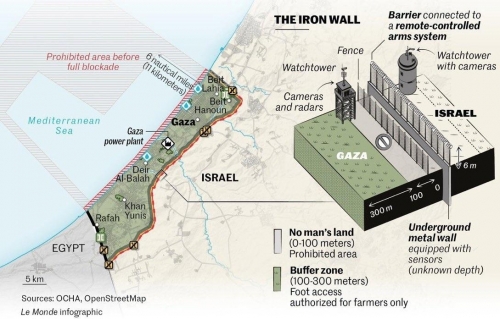
Ensuite, les combattants du Hamas ont pénétré en Israël à bord de pick-ups, sur une distance de 40 km. L'armée israélienne ne les a pas arrêtés, bien que la prise d'assaut de la clôture ait dû donner l'alerte. Où étaient les hélicoptères d'attaque israéliens qui avaient tout le temps de décoller et d'abattre les pick-up ? Même au niveau du gaz d'étalage, les pick-ups se sont déplacés pendant au moins une demi-heure, voire plus. Il y avait donc suffisamment de temps pour repousser l'attaque du Hamas. Néanmoins, personne n'a empêché les combattants du Hamas d'envahir les villes et les villages proches de la frontière. Sans aucune entrave, ils ont commis des massacres et pris des gens en otage.
Si tout cela est dû à des erreurs commises par les services de renseignement israéliens, des têtes doivent tomber. Des voix s'élèvent ici et là pour demander une enquête sur ces "défaillances", mais ni les Israéliens ni les Américains ne semblent pressés d'ouvrir une enquête. Il est très étrange que plus de 1 400 Israéliens aient été tués et que plus de 100 autres aient été pris en otage. Les grands médias sont également totalement silencieux sur la question (16).
Le Hamas a été créé par Israël : divide et impera.
Sous les gouvernements Rabin (1974-1977) et Begin (1977-1983), Israël a commencé à soutenir activement la branche palestinienne des Frères musulmans pour faire contrepoids à la popularité de l'OLP laïque, ainsi qu'aux États arabes laïques - qui luttaient activement contre l'islamisme - avec lesquels Israël était en guerre à l'époque : l'ennemi de mon ennemi est mon ami. L'islamisme n'était alors pas considéré comme une menace terroriste. En fait, Israël le considérait comme un allié naturel contre leurs ennemis communs.
En 1973, l'imam paralysé Sheikh Ahmed Yassin a fondé l'organisation Mujama Al-Islamiya, qui a contribué à la création de l'université islamique de Gaza, d'hôpitaux et d'écoles. Ce précurseur du Hamas est issu des Frères musulmans. Le cheikh Yassine était en si bons termes avec Israël qu'il était même soigné dans des hôpitaux israéliens. La Mujama Al-Islamiya a été officiellement reconnue par Israël comme une organisation caritative, ce qui lui a permis de collecter des millions de dollars. Israël a également soutenu la création de l'université islamique de Gaza (17).
Dans les années 1970 et 1980, Israël n'est pas intervenu dans les batailles entre l'OLP laïque dominante et les forces islamistes plus petites, car les luttes intestines mutuelles affaiblissaient l'OLP, qui menait alors des attaques terroristes contre des cibles israéliennes dans le monde entier. Au cours de cette période, Israël a donc contribué à transformer un groupe marginal d'islamistes palestiniens en l'organisation islamiste notoire qu'est aujourd'hui le Hamas. Après tout, diviser les Palestiniens était dans l'intérêt d'Israël.
Le général Yitzhak Segev, qui était gouverneur de l'administration militaire israélienne à Gaza au début des années 1980, a déclaré plus tard au New York Times qu'il avait financé le mouvement islamiste palestinien pour faire contrepoids à l'OLP laïque de Yasser Arafat : "Le gouvernement israélien m'a donné un budget et l'administration militaire a donné de l'argent aux mosquées".
Avner Cohen, un ancien fonctionnaire israélien qui a travaillé à Gaza pendant plus de 20 ans, affirme que cette politique a alimenté la montée de l'islamisme parmi les Palestiniens. Il a déclaré au Washington Post en 2009 : "Le Hamas est, à mon grand regret, la création d'Israël". Dès le milieu des années 1980, M. Cohen a même rédigé un rapport officiel à l'intention de ses supérieurs, dans lequel il mettait en garde contre le danger que représentait ce monstre islamiste créé par Israël (18).
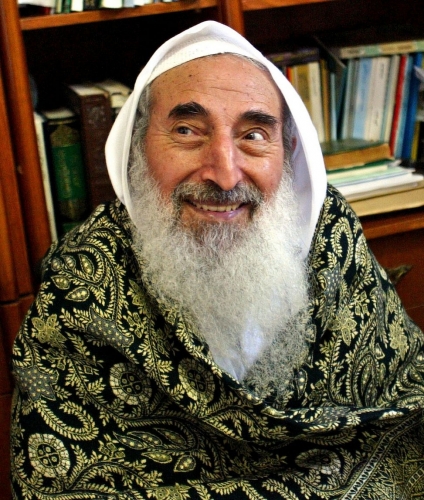
Dès 1984, Israël a arrêté le cheikh Yassine suite à la découverte de caches d'armes secrètes. Il est cependant libéré dès 1985 (19). La Mujama Al-Islamiya a été transformée en Hamas par le cheikh Yassine en 1987. Ce n'est que lorsque le Hamas a tué deux soldats israéliens en 1988 qu'Israël a cessé de favoriser le Hamas (20). Ce n'est qu'à partir de ce moment-là qu'Israël a commencé à considérer le Hamas comme un groupe terroriste. Le cheikh Yassine, paralysé, a été tué dans son fauteuil roulant en 2004 par des missiles Hellfire tirés par un hélicoptère Apache israélien.
Le célèbre journaliste d'investigation américain Seymour Hersh a publié une analyse du conflit de Gaza le 12 octobre 2023 (21). Il s'est basé sur des informations internes provenant d'un vétéran de l'appareil de sécurité israélien. Lorsque Benjamin Netanyahou est redevenu premier ministre en 2009, il a préconisé de soutenir le Hamas afin de l'opposer à l'OLP. Netanyahou privilégie le financement du Hamas. Des centaines de millions de dollars en provenance du Qatar transitent régulièrement par Israël vers le Hamas. M. Netanyahou a fait valoir que le fait de faire transiter cet argent qatari par Israël garantissait qu'il ne pourrait pas être utilisé à des fins terroristes : "Maintenant que nous exerçons un contrôle, nous savons qu'il est utilisé à des fins humanitaires".
Netanyahou était convaincu que l'accord avec le Qatar sur le financement du Hamas lui permettait de mieux contrôler le Hamas que l'Autorité palestinienne, dominée par l'OLP. Ce faisant, il acceptait le risque que le Hamas tire occasionnellement des roquettes sur le sud d'Israël et que des membres du Hamas aient accès à des emplois en Israël. Ainsi, selon cette "doctrine Netanyahou", Israël créerait une sorte de Frankenstein tout en gardant le contrôle sur lui (22).
En 2019, M. Netanyahou a déclaré lors d'une réunion de son parti, le Likoud : "Quiconque veut contrecarrer la création d'un État palestinien doit soutenir le renforcement du Hamas et le transfert d'argent au Hamas" (23).
Bien que le Hamas soit un ennemi, cette politique de division et de conquête a bien servi Israël. La domination du Hamas islamiste sur Gaza a divisé politiquement le mouvement national palestinien, tandis qu'Israël disposait d'un prétexte pour enfermer les habitants de Gaza et les isoler du reste du monde.
Déplacement in extremis d'un festival de musique à la frontière de Gaza.
Lors du festival de musique psychédélique en plein air Supernova Sukkot Gathering, des Israéliens de gauche et des Juifs du monde entier (Allemagne, Grande-Bretagne, Brésil, ...) ont célébré "les amis, l'amour, la liberté infinie et la préservation de l'environnement". Ce festival de deux jours a débuté le 6 octobre 2023 et s'est déroulé près du kibboutz de Re'im, à seulement huit kilomètres de la plus grande prison à ciel ouvert de Gaza. Il s'agissait de la version israélienne du festival brésilien Universo Paralello.
Il s'est passé quelque chose d'étrange en ce qui concerne l'emplacement du festival de musique. À l'origine, l'événement devait se dérouler dans un lieu situé dans le sud d'Israël. Deux jours avant le début du festival, les organisateurs ont été informés qu'il ne pouvait pas avoir lieu à cet endroit. Le festival a donc été déplacé à proximité de Re'im, une zone peu sûre qui n'était pas adaptée à un tel événement. Pourquoi le lieu d'un festival international de musique serait-il déplacé dans un endroit peu sûr 48 heures à l'avance ?
En outre, selon la source israélienne citée par le journaliste d'investigation américain Seymour Hersch (cf. supra), les deux tiers des troupes israéliennes habituellement stationnées à la frontière de Gaza avaient été transférées en Cisjordanie avant le samedi (24).
Peut-on dire que les quelque 3 500 participants au rassemblement de Souccoth Supernova, attaqué par le Hamas, ont été sacrifiés sur l'autel d'intérêts politiques supérieurs ?
Casus belli.
L'attaque du Hamas du 7 octobre 2023 - un jour après le 50e anniversaire du début de la guerre du Kippour - était donc tout le contraire d'une attaque surprise. Il est clair que les services de renseignement israéliens avaient été prévenus de l'attaque. Cela soulève la question de savoir pourquoi le Premier ministre Netanyahou a autorisé l'attaque à venir du Hamas. Il doit y avoir des raisons à cela. Et il y en a.
Examinons ses conséquences politiques et diplomatiques. Tout d'abord, grâce à ce "Pearl Harbour", Israël a acquis un casus belli pour réaliser ses objectifs concernant la bande de Gaza, c'est-à-dire pour mener à la fois une guerre antiterroriste et une sorte de "solution finale" au problème du Hamas. Cela inclut la déportation d'une grande partie de la population de Gaza afin de rendre la région plus contrôlable. Comme nous le voyons tous les jours, Israël fait actuellement tout ce qu'il peut pour rendre Gaza de facto invivable. Outre les milliers de bombes larguées par l'armée de l'air israélienne sur la ville densément peuplée de Gaza, Israël a également coupé complètement l'eau, l'électricité et l'approvisionnement en nourriture, même si l'ONU a souligné que cela violait le droit international (25).
En outre, les États-Unis pourraient soudainement détourner l'attention de la défaite imminente et inévitable en Ukraine. Par ailleurs, la vive protestation contre les réformes judiciaires de Netanyahou, qui durait depuis de nombreux mois, a brusquement été abandonnée (cf. infra).
Un énorme gisement de gaz naturel au large de Gaza.
Selon le géophysicien français Bertrand Scholler, les fonds marins au large de Gaza recèlent d'énormes quantités de gaz naturel qui intéressent non seulement Israël, mais aussi l'Union européenne. Selon M. Scholler, tout le conflit à Gaza tourne autour du gaz naturel.
Scholler est diplômé de la prestigieuse École nationale supérieure du Pétrole et des Moteurs de Paris (26). Cette ENSPM fait partie des grandes écoles françaises réputées (27) et forme des ingénieurs qui se destinent à des carrières professionnelles dans le secteur de l'énergie et des transports. Scholler a donc travaillé toute sa vie dans des secteurs tels que les télécoms et l'énergie, entre autres.
Scholler écrit sur son compte X que cette vaste richesse en gaz naturel pourrait transformer la région à jamais. Cependant, il met également en garde : "Les guerres pour l'or noir recouvrent les déserts d'un liquide rouge... Le sang de la population locale". En bref, Gaza est potentiellement très riche. La quantité de gaz naturel dans la zone économique exclusive de Gaza dépasserait même le champ de gaz naturel israélien Leviathan - le deuxième plus grand champ de gaz naturel de la Méditerranée. Le conflit actuel autour de Gaza est donc une opération sous fausse bannière, selon M. Scholler. Cela explique également pourquoi les États membres de l'UE tels que la France, l'Allemagne, le Royaume-Uni et l'Italie laissent apparemment Israël détruire et conquérir Gaza sans se soucier des conséquences. Après tout, l'UE a désespérément besoin de ce gaz naturel depuis qu'elle s'est séparée du gaz naturel russe bon marché. Dans une guerre, il n'y a pas seulement des dommages de guerre, mais aussi... la possibilité de conquête ! Et la puissance militaire qui conquiert un certain territoire acquiert également les droits maritimes de ce territoire...(28).
Scholler étaye ses propos par les cartes ci-dessous :
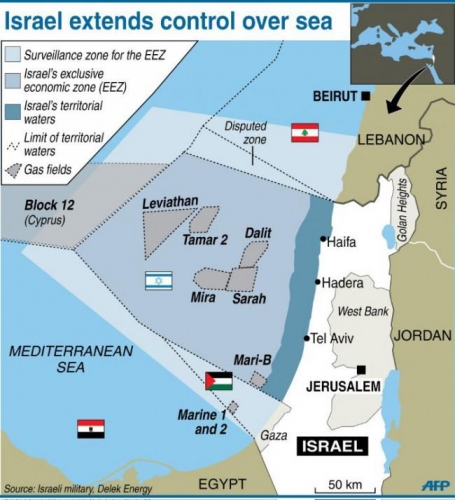

L'acquisition des énormes gisements de gaz naturel découverts au large de la côte de Gaza en 2000, qui appartiennent aux Palestiniens en vertu du droit international public, revêt donc une grande importance dans ce conflit. L'occupation de Gaza signifiera légalement que la pleine souveraineté sur ce gisement de gaz naturel palestinien sera exercée par l'occupant, c'est-à-dire Israël. À cette fin, Israël dépeuplera toute la moitié nord de la bande de Gaza.
Déportation forcée du nord de la bande de Gaza.
Selon le célèbre journaliste d'investigation Seymour Hersh, Israël envisage une sorte d'"approche de Leningrad" à l'égard de Gaza, par analogie avec la tentative allemande, pendant la Seconde Guerre mondiale, d'affamer la ville de Leningrad - aujourd'hui Saint-Pétersbourg (29).
Le vendredi 13 octobre 2023 au matin, Israël a demandé à l'ONU d'évacuer le nord de la bande de Gaza : environ 1,1 million de Palestiniens devaient partir dans les 24 heures. Selon l'ONU, tous les habitants de Gaza pourraient être contraints de déménager (30).
Il n'est donc pas exclu que l'ensemble de la bande de Gaza soit bientôt sous contrôle israélien. Selon divers médias, le dimanche 15 octobre 2023, plus de 800 000 Palestiniens avaient déjà fui vers le sud (31). Le lundi 16 octobre 2023, ils étaient déjà 1 million et le lundi 23 octobre 2023, 1,4 million de réfugiés palestiniens. Cela représente 61 % des plus de 2,3 millions d'habitants de la bande de Gaza.
Cette déportation forcée et massive de civils marque le début de la destruction, du nettoyage ethnique et de l'appropriation de tout le nord de la bande de Gaza. Israël ne doit pas s'inquiéter de la réaction de l'opinion publique israélienne, car l'ampleur de l'attaque du Hamas a été si choquante que même les Israéliens les plus indulgents ne s'opposeront pas à un tel conflit.
Soudain, tout le monde est derrière Netanyahou.
Depuis mars 2023, des manifestations massives et violentes ont eu lieu en Israël contre la réforme judiciaire de Netanyahou, parce que des affaires pénales pour fraude, abus de confiance et corruption étaient en cours contre lui et qu'il pourrait également bénéficier personnellement de la réforme (32). Plus de 100 000 Israéliens ont manifesté tous les samedis et une grève générale a également eu lieu.
Tout comme après les attentats du 11 septembre 2001, tout le monde avait soudainement oublié, du jour au lendemain, l'élection controversée du président Bush Jr (33), tout le monde en Israël avait soudainement oublié les projets controversés de Netanyahou visant à réformer le système judiciaire. Tout le monde s'est immédiatement rangé derrière Netanyahou, qui se présente comme un défenseur d'Israël. Netanyahou a donc clairement bénéficié politiquement de l'attaque du Hamas contre Israël (34).
Les contradictions internes de la politique israélienne, dans un contexte de perte de légitimité de Netanyahou, ont été soudainement comblées. Un front uni s'est formé contre un ennemi extérieur, les partis d'opposition se joignant à Netanyahou pour former un gouvernement d'unité nationale. Il s'agit d'une astuce bien connue des historiens : lorsqu'un gouvernement est en difficulté, il tente d'orienter le pays vers un ennemi extérieur afin de détourner l'attention des problèmes internes ou des scandales. Cette astuce ancienne fonctionne encore très bien. Ainsi, de ce point de vue, l'attaque du Hamas a apporté le salut politique à Netanyahou, aussi cynique que cela puisse paraître (35).
Soudain, tout le monde a oublié la guerre en Ukraine.
Ensuite, il y a la question de savoir comment les États-Unis peuvent tirer profit de l'actuel conflit à Gaza. Il y a une réponse à cela aussi.
Un article publié en janvier 2023 par l'influent groupe de réflexion RAND Corporation et des articles parus dans les grands médias montrent que les États-Unis cherchent une stratégie de sortie de la guerre en Ukraine. L'article de la RAND Corporation conseille au gouvernement américain de se retirer de l'Ukraine, de reconnaître les annexions russes et de lever les sanctions contre la Russie. La RAND Corporation est l'un des groupes de réflexion les plus influents des États-Unis. Des faucons néoconservateurs comme Donald Rumsfeld, Condoleezza Rice et Lewis Libby, entre autres, ont travaillé pour cette organisation, tout comme 32 lauréats du prix Nobel (36).
L'article susmentionné de la RAND montre que les auteurs ont réalisé que la mise en œuvre de leurs recommandations serait compliquée par le fait qu'un changement soudain de la politique américaine à l'égard de l'Ukraine serait impossible à défendre auprès de l'opinion publique et des alliés des États-Unis. La RAND a donc réfléchi à la manière de convaincre l'opinion publique et les responsables politiques occidentaux de cesser de soutenir l'Ukraine. Bien que les déclarations officielles des hommes politiques occidentaux semblent toujours inchangées, ces mesures ont été largement mises en œuvre : L'adhésion de l'Ukraine à l'OTAN n'est plus à l'ordre du jour depuis le sommet de l'OTAN à Vilnius, la volonté occidentale de soutenir l'Ukraine s'est émoussée, les programmes d'aide à l'Ukraine fondent comme neige au soleil, ... Bien que l'Ukraine puisse être accusée de divers péchés, l'opinion publique occidentale, attisée par les médias grand public, pourrait encore poser des questions dangereuses si l'Occident cessait soudainement d'aider l'Ukraine.
L'attaque du Hamas contre Israël a bien servi les États-Unis à cet égard, car elle a pratiquement éliminé la guerre en Ukraine des médias grand public. L'intérêt du public occidental s'est ainsi déplacé de l'Ukraine vers Gaza, rendant possible un scénario dans lequel l'Ukraine serait militairement vaincue par l'armée russe ET où l'Ukraine serait blâmée pour cette défaite. Ce scénario fournirait alors l'excuse nécessaire pour faire comprendre à l'opinion publique occidentale que l'aide à l'Ukraine peut être progressivement supprimée.
Pour que cela se produise, il faudrait que le conflit à Gaza dure au moins plusieurs semaines. Si un massacre de Palestiniens pendant plusieurs semaines risque de provoquer des réactions incontrôlées dans le monde arabe, cela aurait l'avantage de convaincre plus facilement l'opinion publique occidentale de cesser de soutenir l'Ukraine et d'apporter son soutien à Israël (37).
On change de récit en Occident comme on change de chemise, tant que le récit dominant reste dans l'esprit des Occidentaux pendant un certain temps.
Épilogue
Une solution pacifique à ce conflit, dans laquelle les Palestiniens acquièrent enfin un État libre et souverain, est malheureusement irréaliste à l'heure actuelle en raison de la domination de la politique israélienne par les forces d'extrême droite et ultra-orthodoxes, mais aussi en raison du soutien diplomatique qu'Israël reçoit de l'Occident, dans lequel le veto américain au Conseil de sécurité de l'ONU et d'autres processus sapent les fondements du droit international.
Notes:
- 1) https://www.anti-spiegel.ru/2023/warum-israel-und-die-usa-den-angriff-der-hamas-zugelassen/
- 2) Dit zijn respectievelijk de nationale inlichtingendienst, de binnenlandse veiligheidsdienst en de militaire inlichtingendienst van Israël.
- 3) Geciteerd door journalist André Bercoff op Sud Radio, dd. 10 oktober 2023: https://www.youtube.com/watch?v=RciG-2Os7qA
- 4) Le Parisien, 10 oktober 2023.
- 5) Minister van Defensie Yoav Gallant van Israël: https://www.youtube.com/watch?v=3x02rCeusCI
- 6) https://swentr.site/news/584838-hamas-attack-israel-similar-911/ en https://www.anti-spiegel.ru/2023/warum-israel-und-die-usa...
- 7) https://apnews.com/article/israel-hamas-gaza-attack-intel-a5287a18773232f26ca171233be01721
- 8) https://www.spiegel.de/ausland/gazastreifen-aegypten-fuerchtet-eine-massenflucht-wie-reagieren-die-usa-a-31d79259-4d52-4f84-980f-250141c65288
- 9) https://swentr.site/news/584778-israel-hamas-war-recap/
- 10) https://www.timesofisrael.com/egypt-intelligence-official-says-israel-ignored-repeated-warnings-of-something-big/
- 11) SNOWDEN (Edward), Onuitwisbaar, Amsterdam, Uitgeverij Balans, 2019, pp. 365.
- 12) Associated Press meldde dat Hamas reeds op 12 september 2023 een video uploadde, waarin Hamas-strijders oefenden in het opblazen van een grenshek, bezetten van gebouwen, schieten op papieren menselijke doelwitten en veroveren van betonnen wachttorens en antennesystemen. Precies wat Hamas enkele weken later in Israël ten uitvoer bracht. Zie: https://www.anti-spiegel.ru/2023/ap-hamas-veroeffentlicht...
- 13) https://www.anti-spiegel.ru/2023/warum-israel-und-die-usa-den-angriff-der-hamas-zugelassen/
- 14) https://swentr.site/news/584778-israel-hamas-war-recap/
- 15) Dit is de tegenhanger van het populaire tijdschrift Der Spiegel, dat samen met de New York Times en The Guardian al decennia de 3 grote propagandakanalen van het Westerse globalisme vormt.
- 16) https://www.anti-spiegel.ru/2023/warum-israel-und-die-usa-den-angriff-der-hamas-zugelassen/
- 17) https://www.haaretz.com/israel-news/2023-10-09/ty-article/.premium/what-is-hamas-the-militant-group-that-attacked-israel-and-controls-gaza/0000018b-1359-d465-abbb-17ffb1cc0000
- 18) https://theintercept.com/2018/02/19/hamas-israel-palestine-conflict/
- 19) https://blogs.timesofisrael.com/hamas-israels-own-creation/
- 20) https://tribune.com.pk/story/2302309/how-and-why-israel-helped-create-hamas
- 21) https://seymourhersh.substack.com/p/netanyahu-is-finished?utm_source=post-email-title&publication_id=1377040&post_id=137880462&utm_campaign=email-post-title&isFreemail=false&r=18rnaa&utm_medium=email
- 22) https://gegenzensur.rtde.life/der-nahe-osten/183678-seymour-hershs-informant-leningrad-ansatz-zur-aushungerung-der-menschen-in-gaza/
- 23) https://theintercept.com/2023/10/13/israel-ground-invasion-gaza-hamas/#:~:text=The%20picture%20has%20been%20so,the%20transfer%20of%20money%20to
- 24) https://swentr.site/news/584778-israel-hamas-war-recap/
- 25) https://fr.le360.ma/monde/deluge-dal-aqsa-et-epees-de-fer-que-cherche-reellement-israel_324RPFAUDFDFNCAPS5BUBIYC3E/
- 26) Vertaling: Hogere Nationale School voor Petroleum en Motoren.
- 27) Dit zijn technische opleidingsinstituten op universitair niveau.
- 28) X-account van Betrand Scholler: https://twitter.com/55Bellechasse/status/1712194795722899...
- 29) https://gegenzensur.rtde.life/der-nahe-osten/183678-seymour-hershs-informant-leningrad-ansatz-zur-aushungerung-der-menschen-in-gaza/
- 30) https://swentr.site/news/584797-israel-evacuation-order-gaza/
- 31) https://gegenzensur.rtde.life/der-nahe-osten/183836-am-rande-grossen-krieges-nahost/
- 32) https://www.tagblatt-wienerzeitung.at/nachrichten/politik/welt/2176941-Generalstaatsanwaeltin-warnt-Netanjahu.html
- 33) De presidentsverkiezingen van 2000 waren de meest controversiële ooit in de VS vanwege een zeer lastige hertelling van de ponskaarten waarmee in Florida gestemd werd. Tot aan de aanslagen van 11 september 2001 werd massaal gespeculeerd dat eigenlijk Al Gore de verkiezingen gewonnen had en ipso facto president had moeten zijn.
- 34) https://swentr.site/news/584778-israel-hamas-war-recap/
- 35) https://www.anti-spiegel.ru/2023/warum-israel-und-die-usa-den-angriff-der-hamas-zugelassen/
- 36)https://www.anti-spiegel.ru/2023/teil-1-suchen-die-usa-ei...
- 37) https://www.anti-spiegel.ru/2023/warum-israel-und-die-usa...
12:14 Publié dans Actualité | Lien permanent | Commentaires (0) | Tags : actualité, gaza, israël, politique internationale, proche-orient, levant, gaz, hydrocarbures, méditerranée, méditerranée orientale |  |
|  del.icio.us |
del.icio.us |  |
|  Digg |
Digg | ![]() Facebook
Facebook
jeudi, 26 octobre 2023
Critique interne de la position de von der Leyen sur Israël

Critique interne de la position de von der Leyen sur Israël
Bernhard Tomaschitz
Source: https://zurzeit.at/index.php/interne-kritik-an-von-der-leyens-haltung-zu-israel/
Quelque 850 fonctionnaires européens critiquent le "soutien inconditionnel à l'un des partis"
La présidente de la Commission européenne, Ursula von der Leyen, soutient inconditionnellement Israël dans le conflit actuel au Proche-Orient. Cette position est aujourd'hui critiquée. Et cela ne vient pas des rangs des sympathisants du Hamas palestinien, responsable de la mort d'environ 1400 Israéliens, mais de sa propre maison. Comme le rapporte le portail d'information Euractiv, des centaines de fonctionnaires européens ont critiqué dans une lettre le "soutien inconditionnel" à Israël.
"Nous sommes particulièrement préoccupés par le soutien inconditionnel de la Commission européenne, que vous représentez pour l'une des deux parties", peut-on lire dans la lettre adressée à von der Leyen et signée par quelque 850 fonctionnaires européens, dont certains occupent également des postes de direction. Au total, l'UE compte environ 32.000 employés.
Les détracteurs de la présidente de la Commission écrivent qu'ils ne peuvent pas identifier les valeurs européennes en raison de la position unilatérale de von der Leyen. Entre autres, la lettre, qu'Euractiv a pu consulter, dit : "Nous, un groupe de collaborateurs de la Commission européenne et d'autres institutions de l'UE, condamnons fermement, pour des raisons personnelles, les attaques terroristes perpétrées par le Hamas contre des civils sans défense (...). Nous condamnons tout aussi fermement la réaction disproportionnée du gouvernement israélien contre les 2,3 millions de civils palestiniens bloqués dans la bande de Gaza".
Ailleurs, on s'inquiète de "l'indifférence apparente dont a fait preuve notre institution ces derniers jours face au massacre continu de civils dans la bande de Gaza. C'est un mépris des droits de l'homme et du droit international humanitaire".
Le soutien inconditionnel de Mme von der Leyen à Israël montre à quel point l'Union européenne est divisée sur ce qui est désormais un conflit au Proche-Orient. Le 17 octobre, le président du Conseil Charles Michel a déclaré que le siège israélien de la bande de Gaza, où "l'eau et la nourriture ne peuvent pas entrer, est contraire au droit international".
20:35 Publié dans Actualité, Affaires européennes | Lien permanent | Commentaires (0) | Tags : actualité, politique internationale, israël, gaza, palestine, ursula von der leyen, europe, affaires européennes |  |
|  del.icio.us |
del.icio.us |  |
|  Digg |
Digg | ![]() Facebook
Facebook
mercredi, 25 octobre 2023
Aspects géopolitiques du conflit en Palestine
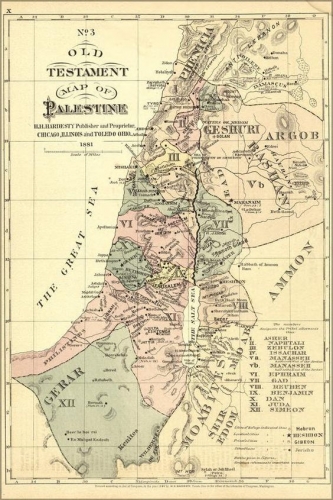
Aspects géopolitiques du conflit en Palestine
Daniele Perra
Source: https://www.geopolitika.ru/pt-br/article/aspectos-geopoliticos-do-conflito-na-palestina
Israël, outre ses prétentions messianiques-eschatologiques, représente la position avancée de la Carthage américaine en Asie occidentale, étant une projection des États-Unis eux-mêmes. En ce sens, l'existence de l'État d'Israël, du moins dans sa configuration actuelle et dans le contexte de l'hégémonie unipolaire, tend à toujours présenter la possibilité d'un conflit régional.
Introduction
Dans un article publié sur le site Eurasia. Rivista di studi geopolitici, daté du 20 septembre 2020 et intitulé "Le déclin des États-Unis et l'axe islamo-confucéen", l'auteur fait ouvertement référence au fait que la coopération retrouvée entre les différentes composantes de la résistance antisioniste, suite aux divisions apparues après l'agression contre la Syrie, aurait pu constituer une "certaine menace" pour la sécurité de l'"État juif". En particulier, on a tenté de montrer comment le rôle actif de la République islamique d'Iran dans le soutien à des groupes tels que le Hamas et le Jihad islamique aurait pu accroître considérablement ses capacités militaires jusqu'à un niveau similaire, au moins, à celui d'Ansarullah au Yémen (qui a partagé pendant des années le sort de la bande de Gaza en termes d'embargo et de siège) [1]. Dans un autre article publié sur le même site (le 13 mai 2021) pour analyser la dynamique de l'attaque sioniste contre le quartier de Sheikh Jarrah à Jérusalem-Est, il a été avancé que cette "aide iranienne", compte tenu de la situation particulière de la bande de Gaza, aurait eu les caractéristiques d'un simple transfert de logistique, de données et d'informations pour la construction d'une technologie militaire (même rudimentaire) sur le terrain [2].
À la lumière de ce qui s'est passé à la suite de l'opération "Tempête al-Aqsa", on peut dire (sans crainte d'être contredit) que ces considérations n'étaient pas entièrement erronées. En même temps, les événements récents, avec l'emprise sioniste sur la bande de Gaza qui ne cesse de se resserrer et la volonté génocidaire affichée de la direction militaire israélienne elle-même (le général Ghassan Alian, par exemple, en plus de comparer le Hamas à ISIS, a explicitement apostrophé toute la population de Gaza en la qualifiant d'"animatx humains" et en lui promettant l'enfer) méritent d'être examinés en détail, à la fois pour en donner une interprétation géopolitique et pour déconstruire le récit "occidental", une fois de plus basé sur le schéma élémentaire "il y a un agresseur et un agressé", qui est toujours utile pour inverser la responsabilité d'une tragédie, en ignorant ses causes au fil du temps. À cette fin, cette contribution sera divisée en deux parties: la première partie analysera les données politico-militaires, tandis que la seconde partie se concentrera sur certains aspects géo-historiques du conflit arabo-sioniste.

Le fait politico-militaire
Presque tous les observateurs occidentaux ont été surpris par la complexité de l'attaque menée par le mouvement de résistance islamique le 6 octobre contre l'entité sioniste (une attaque menée sur terre, sur mer et dans les airs grâce à l'utilisation combinée de canots pneumatiques, de parapentes motorisés et au lancement, en grandes quantités, de différents types de roquettes capables de submerger et de pénétrer le système de défense antimissile Iron Dome, construit grâce aux généreuses contributions des administrations américaines de ces dernières années, en particulier celle d'Obama). Parmi ces différents types de roquettes, se distinguent les Qassam 1 et 2 (dont la production est assez simple et bon marché, compte tenu du fait qu'elles utilisent généralement des matériaux provenant de déchets de construction), les Abu Shamala ou SH-85 (nommées en l'honneur de Muhammad Abu Shamala, commandant de l'aile militaire du Hamas décédé en 2014), les Fajr-3 et Fajr-4 de fabrication iranienne (bien que construites avec une technologie nord-coréenne basée sur d'anciens systèmes de missiles à lancement multiple soviétiques) et les missiles R-160 de fabrication syrienne. La présence de fusils M4 de fabrication américaine dans l'arsenal militaire du Hamas est également surprenante. À cet égard, pour éviter les spéculations politiques fantaisistes et inutiles selon lesquelles le Hamas serait allié au Mossad (sic !) et ainsi de suite, il est nécessaire de rappeler que la principale source d'armement du mouvement de résistance est (inévitablement) le marché noir. Sans parler des arsenaux entiers abandonnés par les Occidentaux après l'indécente fuite d'Afghanistan, il est important de rappeler que toujours dans les colonnes d'Eurasia (reprenant également une enquête du Washington Post, pas vraiment une publication que l'on peut accuser d'être l'expression de la propagande russe) [3], il avait déjà été souligné que l'important flux d'armes occidentales vers Kiev finirait d'une certaine manière par alimenter le marché illégal des matières premières (une pratique dans laquelle l'Ukraine indépendante a historiquement joué un rôle de premier plan, notamment grâce à l'un des taux de corruption les plus élevés au monde). Par conséquent, il ne serait pas du tout improbable qu'un certain nombre (aussi petit soit-il) de ces armes se retrouvent dans la bande de Gaza (des armes fabriquées en Occident, par exemple, très probablement par l'intermédiaire de l'ISI pakistanais, ont également été trouvées parmi les miliciens cachemiri opposés à l'occupation de la région par l'Inde).
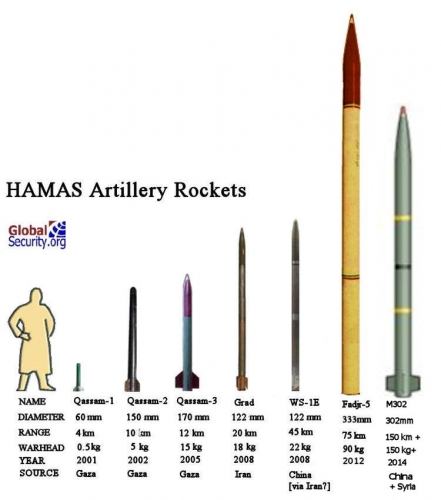
Dans ce cas, le fait à analyser est l'échec patent des services sionistes qui, par le passé, ont été particulièrement habiles à infiltrer les territoires de la bande de Gaza et les rangs du Hamas. Comme nous l'avons déjà mentionné, certains maintiennent encore la thèse de l'alliance cachée ou de la création israélienne du Hamas. Pour être juste, il serait correct de dire que, au moins dans un premier temps (c'est-à-dire au tournant des années 1980 et 1990), que ce soit pour affaiblir le leadership "nationaliste" de l'OLP au sein de la lutte palestinienne ou pour pratiquer la division et la domination au sein des factions de la Résistance à l'occupation sioniste, Israël n'a pas particulièrement empêché la montée en puissance du Hamas. Il convient de rappeler que celle-ci s'inscrit dans la pratique socio-politique du mouvement dont il est issu, les Frères musulmans (organisation née en Egypte en 1928 qui s'est donné pour objectif de repenser l'Umma islamique après l'abolition du califat par la Turquie kémaliste), qui ont bâti leur fortune sur la création d'organisations caritatives (hôpitaux, orphelinats, écoles et instituts pour les couches les plus faibles de la population) qui ont été l'épine dorsale de leur succès dans un contexte économique extrêmement précaire comme celui de la bande de Gaza. Un succès qui a représenté, pour le moins, une grave erreur d'appréciation de la part de l'appareil sécuritaire sioniste. Les difficultés (dues en partie aussi à l'amélioration des capacités de contre-espionnage du Hamas, autre aspect lié à une collaboration plus étroite avec Téhéran) ne peuvent être dissociées des profondes divisions internes de la société israélienne (marquées par des tensions ethniques et même religieuses croissantes - la croissance des communautés orthodoxes refusant le service militaire ne peut être sous-estimée -, l'obsession du dépassement démographique arabe et un choc inhabituel, pour Israël, entre les sommets politique et militaire). Même les appels à l'unité nationale de Benjamin Netanyahou (durement critiqué à la fois pour son projet controversé de réforme du système judiciaire et pour sa politique de "tolérance zéro" à l'égard de toute revendication palestinienne, aussi minime soit-elle) n'ont pas eu l'effet escompté. En particulier, le Premier ministre a été attaqué à plusieurs reprises, tant par les milieux "progressistes" et "libéraux" (comme le quotidien historique "Haaretz") que par les milieux conservateurs plus rigides.
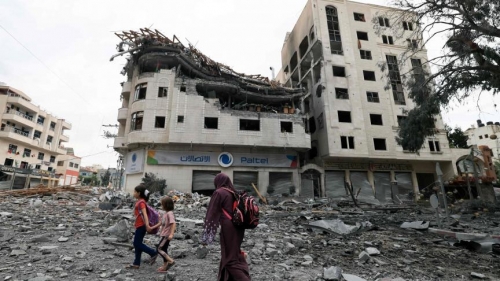
Aux difficultés politiques et sociales internes évidentes (jusqu'à présent, la principale menace pour Israël reste la fragmentation de son tissu social, à l'instar du reste de l'Occident), s'ajoutent des difficultés d'ordre militaire. Les déclarations initiales de M. Netanyahu concernant l'entrée imminente des forces armées israéliennes dans la bande de Gaza se sont heurtées à la vision plus "prudente" de la direction militaire, qui semble actuellement opter principalement pour un lent étranglement de la bande, soumis à des bombardements "préparatoires" constants et à l'interruption de l'approvisionnement en nourriture, en eau et en électricité. Cette situation, qui met en évidence l'hypocrisie traditionnelle de l'Occident (qui, contrairement aux attaques russes contre l'infrastructure énergétique de l'Ukraine, ne semble pas disposé à accuser Israël de crimes de guerre), met en lumière les risques et les coûts d'une campagne militaire terrestre dans un contexte urbain densément peuplé. Ce n'est pas une coïncidence si les centres de recherche américains (dans le sillage des deux conflits tchétchènes de la dernière décennie du 20ème siècle) ont défini le combat urbain comme la caractéristique déterminante des conflits du nouveau millénaire. Un type de combat qui favorise presque toujours le défenseur et qui, selon les experts en tactique militaire, ne peut réussir que si l'attaquant dispose d'un avantage numérique évident (6 à 10 contre 1 sur l'adversaire) [4]. Les Américains eux-mêmes ont rencontré des difficultés à Falloujah et, malgré un avantage numérique considérable (environ 15.000 contre 3000 insurgés), n'ont réussi à s'imposer qu'en rasant des quartiers entiers de la ville. La Russie, pour sa part, à l'exception du cas de Marioupol (ville à haute valeur stratégique et "symbolique") ou du "hachoir à viande" de Bakhmout/Artemovsk, a choisi de limiter au maximum les combats urbains dans le cadre du conflit ukrainien.

Or, il semble évident que la découverte du système ramifié de tunnels construits par les miliciens palestiniens à l'intérieur de la bande de Gaza serait loin d'être aisée et exposerait les forces israéliennes à de lourdes pertes (ce qui, le moment venu, a conduit Tel-Aviv à abandonner ses rêves d'expansion vers le Liban). Cependant, il est tout aussi clair que la seule issue possible du conflit pour Israël est la "victoire totale", c'est-à-dire la destruction du Hamas (ou du moins de sa capacité d'attaque). Pour atteindre cet objectif, l'entrée dans la bande de Gaza (avec tous les risques énormes que cela comporte, y compris en termes de pression sur l'industrie de guerre occidentale déjà éprouvée par le conflit ukrainien) semble inévitable. Et pour préparer cette intervention, une campagne d'information a déjà été lancée dans le but de déshumaniser et de criminaliser l'adversaire (qui doit être identifié comme le "mal manifeste"). C'est dans cette optique qu'il faut interpréter les nouvelles (peu fiables) sur le prétendu massacre de mineurs dans le kibboutz de Kfar Aza, dont le but est simplement de préparer l'opinion publique à un conflit prolongé ; une pratique bien connue en Occident, depuis le tout aussi prétendu massacre de Račak qui a donné le coup d'envoi de l'agression de l'OTAN contre la Serbie, jusqu'aux accusations infondées contre l'Irak en 2003, en passant par la campagne de désinformation qui a ouvert la voie à la destruction de la Libye (sans oublier le massacre russe jamais prouvé de Bucha, en Ukraine). Que ces informations soient confirmées ou non, il est curieux de constater que l'opinion publique précitée n'a pas manifesté la moindre indignation face au meurtre (cette fois-ci aussi réel que répété) de mineurs palestiniens dans les territoires occupés par les forces de sécurité israéliennes. Pourtant, comme le rapporte l'organisation non gouvernementale Save the Children, depuis le début de l'année et jusqu'en septembre dernier, le massacre a atteint le triste record de 38 morts [5]. Une nouvelle démonstration du fait qu'il n'y a pas de "nouveau conflit" en Palestine (comme le prétendent à tort certains journaux italiens) - ce à quoi nous assistons n'est que l'escalade d'un conflit qui dure déjà depuis plus d'une décennie - et du fait qu'il est tout aussi inapproprié de prétendre que l'attaque du Hamas n'a pas eu d'élément déclencheur.
Dans ce sens, il sera également utile d'ouvrir un bref chapitre sur le contexte international, puisque plusieurs analystes ont soutenu la thèse selon laquelle l'opération du mouvement de résistance palestinien visait à contrecarrer les efforts américains en vue d'une normalisation "officielle" des relations entre Israël et l'Arabie saoudite. Cette possibilité ne doit pas être écartée a priori, mais il convient d'apporter quelques précisions :
a) historiquement, les relations entre le Hamas et l'Arabie saoudite n'ont jamais été particulièrement constructives (le mouvement, au contraire, a toujours été soutenu par le Qatar et la Turquie, des pays qui entretiennent des relations solides avec Tel-Aviv, avec des hauts et des bas) ;
b) les relations entre Israël et l'Arabie saoudite n'ont pas besoin d'être normalisées de sitôt, car elles se poursuivent officieusement depuis longtemps (comme l'a fait valoir l'universitaire Madawi al-Rasheed, même l'embargo pétrolier qui a suivi la guerre d'octobre 1973 ne peut être considéré comme un acte hostile, compte tenu de sa durée extrêmement limitée) [6] ;
c) il n'est pas du tout acquis qu'une normalisation des relations entre Israël et l'Arabie saoudite (sur le modèle des "accords d'Abraham" de Trump) conduise à un gel du conflit en Palestine ou même à un nouvel accord de paix israélo-palestinien qui inclurait les mouvements de résistance islamique en plus de l'Autorité nationale palestinienne déjà largement délégitimée;
d) les accords de paix proposés jusqu'à présent dans le contexte occidental ont toujours été unilatéraux, ignorant complètement les droits des deux parties (notamment le "plan/escroc du siècle" de l'administration Trump, qui prévoyait, d'une part, la légitimation totale des colonies sionistes en Cisjordanie et, d'autre part, la création d'une entité nationale palestinienne dépourvue de souveraineté, démilitarisée et territorialement fragmentée).
Théoriquement, il serait donc plus juste de dire que le récent accord de réouverture des canaux diplomatiques entre l'Iran et l'Arabie Saoudite, parrainé par la Chine, a en quelque sorte donné le feu vert au Hamas pour organiser l'attaque. Enfin, la "piste Sadate" semble exclue : en d'autres termes, l'idée que les dirigeants du Hamas, comme le successeur de Nasser au début des années 1970, ont cherché la confrontation pour montrer leur force et pouvoir négocier une sortie du conflit dans des conditions plus favorables. Un mouvement qui se présente comme l'expression des espoirs palestiniens de revanche (indépendamment des éléments et événements sans équivoque qui ont caractérisé son histoire) ne peut être comparé aux aspirations personnelles du président d'un pays tiers, l'Égypte, dont l'objectif ultime était l'inclusion progressive dans l'orbite occidentale. D'ailleurs, Sadate lui-même a été victime d'une tentative d'assassinat organisée par un groupe issu des Frères musulmans, alors que le président lui-même avait réhabilité son nom après les années de persécution nassériste (bien que la confrérie ait joué un rôle non négligeable dans les événements qui ont conduit au succès de la "révolution" des officiers libres au début des années 1950).
Aspects géo-historiques
 Le militant et universitaire français Gilles Munier commente ainsi, dans les pages de La Nation Européenne, la mort du militant de Jeune Europe Roger Coudroy, qui s'était rendu en Palestine dans la seconde moitié des années 1960 pour combattre avec les Fida'iyyin : "La participation active des Européens à la lutte de libération, on le comprend aisément, est une réalité trop dangereuse pour les sionistes, qui ne peuvent accepter que la presse s'approprie l'information. Israël, pilier de l'impérialisme anglo-saxon, est une menace permanente pour tous les peuples riverains de la Méditerranée. Accepter son existence, c'est entériner la politique des blocs, dont l'intérêt est de diviser pour mieux régner. La disparition d'Israël privera la 6ème flotte américaine de son principal prétexte pour traverser la Méditerranée [...] La question palestinienne et l'hypothèque sioniste sur l'Europe sont un seul et même problème, qui ne peut être résolu que par l'alignement de l'organisation sioniste mondiale. L'histoire montrera que Roger Coudroy, comme Che Guevara, n'est pas mort en vain"[7].
Le militant et universitaire français Gilles Munier commente ainsi, dans les pages de La Nation Européenne, la mort du militant de Jeune Europe Roger Coudroy, qui s'était rendu en Palestine dans la seconde moitié des années 1960 pour combattre avec les Fida'iyyin : "La participation active des Européens à la lutte de libération, on le comprend aisément, est une réalité trop dangereuse pour les sionistes, qui ne peuvent accepter que la presse s'approprie l'information. Israël, pilier de l'impérialisme anglo-saxon, est une menace permanente pour tous les peuples riverains de la Méditerranée. Accepter son existence, c'est entériner la politique des blocs, dont l'intérêt est de diviser pour mieux régner. La disparition d'Israël privera la 6ème flotte américaine de son principal prétexte pour traverser la Méditerranée [...] La question palestinienne et l'hypothèque sioniste sur l'Europe sont un seul et même problème, qui ne peut être résolu que par l'alignement de l'organisation sioniste mondiale. L'histoire montrera que Roger Coudroy, comme Che Guevara, n'est pas mort en vain"[7].

En d'autres termes, Munier dit qu'il ne peut y avoir de souveraineté pour l'Europe (en général) tant qu'Israël est là. L'idée que l'entité sioniste représente un "pilier de l'impérialisme anglo-saxon" n'est pas sans fondement. Outre le fait que la flotte américaine en Méditerranée s'est rapidement rapprochée des côtes de l'entité sioniste après l'attaque de la résistance islamique (sans parler de l'engagement de Washington à envisager l'envoi de systèmes d'armes compatibles avec ceux de l'armée israélienne) [8], de nombreux précédents historiques soutiennent cette thèse: du soutien inconditionnel lors du conflit d'octobre 1973 à la déclaration de l'actuel président américain Joseph R. Biden selon laquelle "si Israël n'existait pas, les Etats-Unis devraient en inventer un pour protéger les intérêts américains"[9].
Mais l'amour de l'Occident pour Israël a des origines lointaines. Tout au long du 19ème siècle, par exemple, se sont multipliées en Grande-Bretagne des associations (précurseurs du "sionisme chrétien", de plus en plus répandu aujourd'hui) prônant le retour des Juifs en Terre Sainte (ce sont elles qui ont inventé l'expression plus tard utilisée par le sionisme, et absolument fausse, "un peuple sans terre pour une terre sans peuple"). Ces réflexions purement eschatologiques s'inscrivent bientôt dans un discours plus large qui mêle des aspects théologiques à des considérations purement géopolitiques.
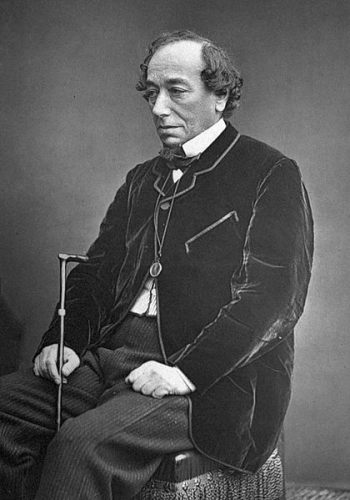
L'homme politique britannique Benjamin Disraeli (juif séfarade converti, peut-être pas très sincèrement, au christianisme), quelques années avant de devenir Premier ministre de Sa Majesté, a par exemple publié plusieurs romans dans lesquels émergeait l'idée que la "nation juive" avait droit à une patrie en Palestine. Dans l'un d'eux, outre l'idée d'un protectorat britannique en Terre sainte, on peut lire : "Vous me demandez ce que je veux. Ma réponse est Jérusalem. Vous me demandez ce que je veux. Ma réponse est le Temple, tout ce que nous avons perdu, tout ce à quoi nous aspirons..." [10].
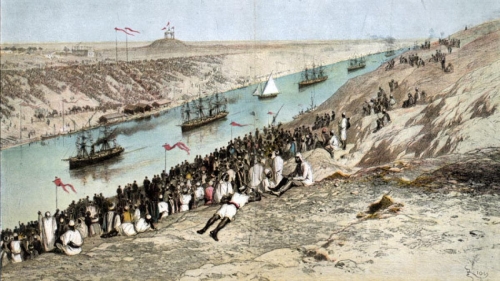
En fait, l'ouverture du canal de Suez en 1869 a rendu la région du Proche-Orient extrêmement attrayante pour les intérêts géopolitiques britanniques en contrôlant une route qui réduisait considérablement le temps de navigation vers l'Inde (il faut aussi y voir l'un des derniers coups du colonialisme européen, l'agression conjointe franco-britannico-sioniste contre l'Égypte de Nasser après la nationalisation du canal en 1956). Pour être honnête, Londres s'est longtemps opposée à la construction du canal, craignant un renforcement excessif de la France dans la région. Mais lorsqu'elle a compris que cette stratégie était vaine, elle a joué la carte de la pénétration financière en Égypte. Un plan qui se concrétise alors que Disraeli est Premier ministre, en 1876, grâce à l'achat de 44% des actions de la Canal Company en échange de 4 millions de livres sterling prêtés au gouvernement britannique par la banque Rothschild (dont les propriétaires, "philanthropes" notoires, sont ceux-là mêmes qui ont maintenu économiquement les colonies juives en Palestine lors de la première "aliyah", qui n'a pas été couronnée de succès). Deux ans plus tard, le renforcement des positions britanniques dans la région s'est poursuivi avec le contrôle total de Chypre après le Congrès de Berlin. Mais ce n'est que dans les premières décennies du 20ème siècle que l'alliance entre le sionisme et la Couronne britannique est devenue explicite, grâce au travail inlassable de Chaim Weizmann, chimiste spécialisé dans la production de poudre à canon pour les navires, qui s'est montré extrêmement habile pour infiltrer les dirigeants politiques britanniques et réaliser le projet de Theodor Herzl de rallier une grande puissance européenne à la cause sioniste en proposant l'éventuelle entité juive comme avant-poste occidental au Levant. Herzl lui-même a essayé de faire la même chose (sans succès) avec l'Allemagne (en fait, le père du sionisme politique pensait que l'allemand devrait être la langue de l'"État juif") et l'Empire ottoman. Le premier refusa pour ne pas irriter la Sublime Porte et avait en tête le projet de construction du chemin de fer Berlin-Bagdad ; le sultan ottoman, quant à lui, malgré les promesses de soutien financier juif aux caisses de l'empire en difficulté, ne pouvait accepter l'offre, se présentant comme le protecteur des lieux saints de l'islam.

Quoi qu'il en soit, avec la fameuse déclaration Balfour de 1917 (peut-être prévue par le gouvernement britannique également pour s'assurer que l'influente et nombreuse communauté juive américaine fasse pression sur Washington pour qu'elle intervienne directement dans la Première Guerre mondiale), Londres s'engage directement à établir un "foyer national pour le peuple juif en Palestine" et trahit ouvertement les accords passés avec les Arabes qui, dans ces mêmes années, à l'instigation d'agents londoniens, s'étaient rebellés contre la domination ottomane.
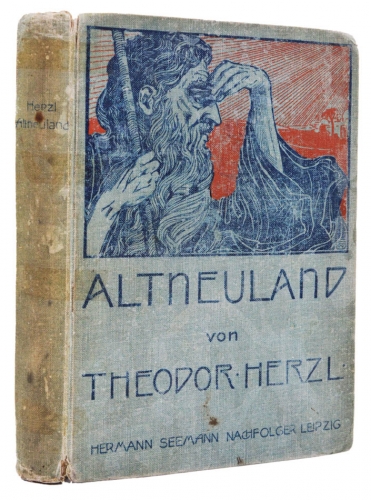 Le soutien britannique a naturellement conduit à une augmentation exponentielle des agressions et des revendications sionistes en Terre sainte. C'est également au cours de ces années que l'on a commencé à réfléchir à une "solution à la question arabe". À cet égard, il est possible d'identifier au moins trois tendances différentes dans le sionisme. Dans un premier temps, il a été pensé comme une sorte d'"assimilation" des Arabes palestiniens, ce qui apparaît fortement dans le roman "fantastique" de Theodor Herzl, Altneuland (L'ancienne nouvelle terre), publié en 1902, dans lequel il est affirmé que le sionisme, en transformant la Palestine en une société idéale dont toute l'humanité devrait s'inspirer, finirait par y incorporer une population indigène qui ne ferait que gagner à la présence juive. L'idée d'assimilation a cependant été ouvertement critiquée par l'interprète du sionisme culturel, Asher Ginsberg. Dans un texte intitulé La vérité de la terre d'Israël, il écrit : "A l'extérieur, nous avons tendance à croire que la Palestine d'aujourd'hui est presque complètement abandonnée, une sorte de désert inculte, et que n'importe qui peut venir et acheter toutes les terres qu'il veut. Mais ce n'est pas la réalité. Les colons traitent les Arabes avec hostilité et cruauté, envahissent injustement leurs propriétés, les battent sans vergogne et sans raison, et sont fiers de le faire [...] nous sommes habitués à considérer les Arabes comme des sauvages, des bêtes de somme qui ne voient ni ne comprennent ce qui se passe autour d'eux" [11].
Le soutien britannique a naturellement conduit à une augmentation exponentielle des agressions et des revendications sionistes en Terre sainte. C'est également au cours de ces années que l'on a commencé à réfléchir à une "solution à la question arabe". À cet égard, il est possible d'identifier au moins trois tendances différentes dans le sionisme. Dans un premier temps, il a été pensé comme une sorte d'"assimilation" des Arabes palestiniens, ce qui apparaît fortement dans le roman "fantastique" de Theodor Herzl, Altneuland (L'ancienne nouvelle terre), publié en 1902, dans lequel il est affirmé que le sionisme, en transformant la Palestine en une société idéale dont toute l'humanité devrait s'inspirer, finirait par y incorporer une population indigène qui ne ferait que gagner à la présence juive. L'idée d'assimilation a cependant été ouvertement critiquée par l'interprète du sionisme culturel, Asher Ginsberg. Dans un texte intitulé La vérité de la terre d'Israël, il écrit : "A l'extérieur, nous avons tendance à croire que la Palestine d'aujourd'hui est presque complètement abandonnée, une sorte de désert inculte, et que n'importe qui peut venir et acheter toutes les terres qu'il veut. Mais ce n'est pas la réalité. Les colons traitent les Arabes avec hostilité et cruauté, envahissent injustement leurs propriétés, les battent sans vergogne et sans raison, et sont fiers de le faire [...] nous sommes habitués à considérer les Arabes comme des sauvages, des bêtes de somme qui ne voient ni ne comprennent ce qui se passe autour d'eux" [11].
Une autre tendance, en accord avec l'idée de la "terre sans peuple" ou de la présence d'un "peuple sans identité", est la négation du problème. Chaim Weizmanm lui-même, en 1917, interrogé par le penseur sioniste Arthur Ruppin sur la relation possible entre les immigrants juifs et la population palestinienne, répondit avec colère : "Les Britanniques nous ont assuré qu'en Palestine il n'y a que quelques milliers de kushim (Noirs) qui ne comptent pour rien".
La troisième tendance, la plus répandue historiquement, a été l'élimination physique du problème à la racine (soit en repoussant la masse de la population palestinienne dans les pays voisins, notamment en Jordanie, soit en l'éliminant littéralement en vertu d'un afflux religieux qui identifiait les Palestiniens aux descendants des peuples bibliques qui habitaient la région avant la conquête juive). A cette tendance se sont associées des personnalités comme Ariel Sharon (dont les tireurs d'élite de l'Unité 101 sont entrés dans l'histoire pour leur pratique dérangeante consistant à tirer sur des paysans arabes désarmés pour les chasser de leurs terres) et Moshe Dayan, qui n'a jamais caché que de nombreux villages arabes ont été détruits et/ou rebaptisés en hébreu pour effacer l'histoire et l'identité de la Palestine avant la colonisation sioniste (pensez à la destruction d'un quartier entier de l'ancienne Jérusalem pour construire une clairière devant le soi-disant "mur des lamentations").
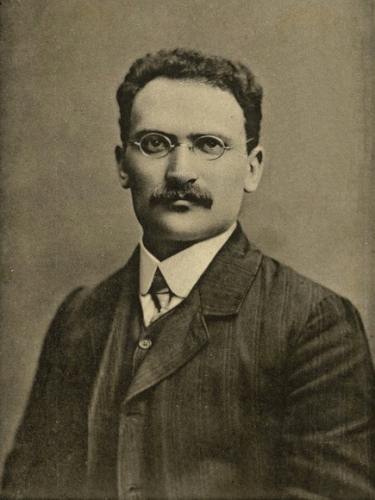
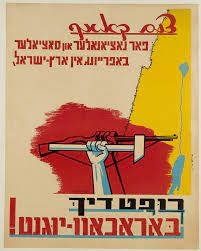
La tendance à éliminer le problème était en fait déjà très présente dans les élaborations théoriques des partisans du sionisme socialiste (qui a également attiré l'attention de Staline dans la croyance erronée qu'il pouvait être utilisé pour s'opposer à l'Occident au Proche-Orient). Parmi eux, Ber Borochov, qui adopte les thèses marxistes présentées dans ses écrits sur la "question juive", soutient l'idée d'un "renversement de la pyramide" à réaliser par le travail. Dans son ouvrage Bases du sionisme prolétarien (1906), il part d'une analyse de la structure sociale juive, présentée comme une pyramide inversée, avec un petit nombre de prolétaires et de paysans face à un grand nombre de petits commerçants, d'entrepreneurs et de banquiers. Dès lors, la "libération du peuple juif" est impensable sans la transformation de sa structure sociale. Et cette transformation ne pouvait se faire que par la concentration territoriale en Palestine (où, même selon Borochov, vivait un peuple sans identité) et la construction d'un "État prolétarien juif" basé sur le travail.
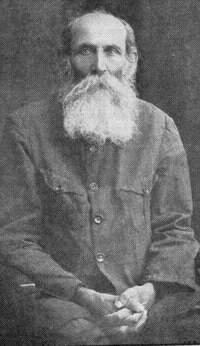
L'accent mis sur le travail, et en particulier sur le travail de la terre (également très présent dans les œuvres d'Aaron David Gordon/photo), a donné naissance à la rhétorique de la "terre rachetée" qui ne pouvait être cultivée que par les Juifs. Ainsi, alors que les premiers colons sionistes ont largement utilisé (et exploité) la main-d'œuvre arabe, les représentants des vagues de migration suivantes ont opté pour un changement de cap radical, empêchant les agriculteurs palestiniens de travailler la terre dont ils avaient tiré leur subsistance pendant des siècles. Concrètement, une fois les terres vendues au mouvement sioniste par des propriétaires qui, souvent, n'étaient même pas présents sur place (ils résidaient à Beyrouth, Damas ou Istanbul), elles ont été clôturées et les paysans palestiniens ont été expulsés, pour le meilleur et pour le pire. Ainsi, selon l'universitaire Arturo Marzano, "alors que le modèle de la première alya était celui d'une société fondée sur la suprématie des Juifs sur les Arabes, la seconde alya visait l'exclusion totale de ces derniers" [13]. Il va sans dire que l'équation terre juive - travail juif - produit juif n'a pas empêché les formes d'exploitation. Les sionistes ont en effet favorisé la migration en Palestine des Juifs yéménites (plus proches des Arabes) et donc susceptibles d'être discriminés, tout en conservant intact le principe de la terre rachetée évoqué plus haut. En fait, même le mythe économique du kibboutz, très présent dans l'imaginaire collectif occidental, devrait être reconsidéré pour ce que les kibboutzim ont été historiquement : des enclaves exclusives et rigidement racistes. Sans parler du mythe tout aussi irréaliste de l'efficacité économique sioniste (en réalité, l'État d'Israël est une entité très dépendante de l'aide étrangère, à tel point que dans de nombreuses études universitaires, il est inclus dans la catégorie des "États rentiers").
En même temps, pour ceux qui prétendent encore qu'il n'y a pas eu de vol réel de terres arabes, il serait utile de rappeler qu'en 1946, année de la dernière enquête, seuls 6% du territoire de la Palestine sous mandat britannique avaient été "légalement" acquis par le mouvement sioniste [14]. En outre, il convient de rappeler qui a importé en Palestine les méthodes de terrorisme dirigées contre la population civile (on pense à l'usage indiscriminé de la violence par l'Irgoun, qui plaçait ses engins sur les marchés ou dans les bureaux de poste fréquentés par les Arabes) [15]. Et il faut aussi mentionner qu'avant même le projet de partition élaboré par l'ONU, les sionistes avaient déjà préparé le plan dit "Dalet", qui prévoyait l'annexion rapide des territoires que l'ONU aurait donnés à la composante arabe.
En conclusion, il est donc clair que la solution "deux peuples, deux États" reste essentiellement non viable. Aujourd'hui, en Palestine, deux visions du monde totalement polarisées et incompatibles s'affrontent : la civilisation du profit d'un "pseudo-peuple" déraciné (produit du mélange de différents groupes ethniques) qui, en se ré-enracinant, n'a produit qu'une simple imitation des modèles occidentaux (se présentant comme une civilisation de l'esprit enracinée dans la terre et la tradition et refusant "obstinément" de s'en écarter). Le choc reste inévitable, pour la simple raison historique qu'Israël, se présentant aujourd'hui comme un appendice périphérique de l'empire occidental dirigé par les Américains, assume le poids de la frontière, c'est-à-dire de la ligne de faille entre des civilisations différentes qui se caractérise toujours par la présence latente de formes de conflit.
Notes
[1] Voir Il declino USA e l'asse islamico-confuciano, 20 septembre 2020, www.eurasia-rivista.com.
[2] Voir Gerusalemme e Resistenza, 13 mai 2021, www.eurasia-rivista.com.
[3] Voir Flood of weapons to Ukraine raises fear of arms smuggling, www.washingtonpost.com.
[4] Voir Russia's Chechen wars 1994-2000. Lesson from urban combat, www.rand.org.
[5] Voir Cisjordanie : 2023 est l'année la plus meurtrière pour les enfants palestiniens. Jusqu'à 38 mineurs tués, plus d'une fois par semaine, 18 septembre 2023, www.savethechildren.it.
[6] Madawi al-Rasheed, Storia dell'Arabia Saudita, Bompiani, Milano 2004, pp. 170-79.
[7] Sommaire C. Mutti, Introduzione a R. Coudroy, Ho vissuto la resistenza palestinese, Passaggio al Bosco, Firenze 2017.
[8] Voir Israël mobilise 300.000 soldats pour l'offensive dans la bande de Gaza, 11 octobre 2023, www.analisidifesa.it.
[9] Voir Biden, un ami de longue date d'Israël, www.timesofisrael.com.
[10] Cité dans A. Marzano, Storia dei sionismi. Lo Stato degli ebrei da Herzl ad oggi, Carocci editore, Rome 2017, p. 78.
[11] Ibidem, p. 49.
[12] A. Colla, Cent'anni di improntitudine, "Eurasia. Rivista di studi geopolitici" 1/2018.
[13] Histoire du sionisme, ivi cit. p. 71.
[14] L. Kamal, Imperial perceptions of Palestine. British influence and power in late Ottoman times, Tauris, Londra 2015, p. 68.
[15] Voir C. Shindler, The land beyond promise. Israel, Likud and the Zionist Dream, Tauris, Londres 2002, pp. 27-35.
Source : https://www.eurasia-rivista.com
Traduction : https://novaresistencia.org
20:47 Publié dans Actualité | Lien permanent | Commentaires (0) | Tags : palestine, israël, actualité, politique internationale, levant, proche-orient, méditerranée |  |
|  del.icio.us |
del.icio.us |  |
|  Digg |
Digg | ![]() Facebook
Facebook
L'ethnocratie israélienne et la crédibilité inexistante de l'Occident
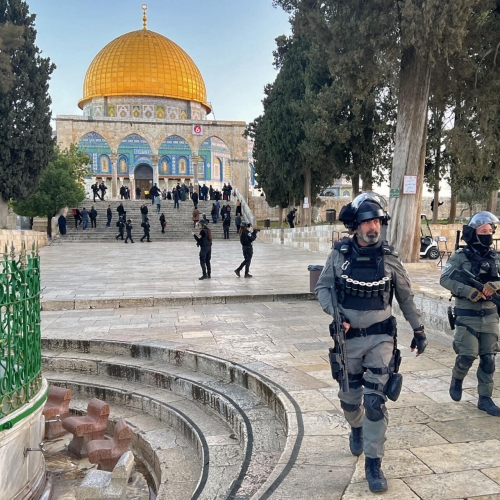
L'ethnocratie israélienne et la crédibilité inexistante de l'Occident
Markku Siira
Source: https://markkusiira.com/2023/10/19/israelin-etnokratia-ja-lannen-olematon-uskottavuus/
"Le soutien de l'Occident à l'attaque d'Israël contre Gaza a empoisonné les efforts visant à parvenir à un accord avec les principaux pays émergents pour condamner la guerre de la Russie contre l'Ukraine", se plaignent des fonctionnaires et diplomates occidentaux dans le Financial Times.
Selon eux, l'escalade du conflit israélo-palestinien a exposé les États-Unis, l'UE et leurs alliés à des accusations d'hypocrisie et a réduit à néant des mois de travail visant à faire de Moscou un paria mondial pour avoir violé le droit international.
L'Occident a été accusé à juste titre de "ne pas avoir défendu les intérêts de 2,3 millions de Palestiniens, de s'être empressé de condamner l'attaque du Hamas et de soutenir Israël".
Le large soutien des États-Unis et d'autres puissances occidentales à Israël leur aliène une grande partie du Sud, ce qui nuit également aux efforts déployés par l'Occident pour obtenir le soutien du reste du monde à l'égard de l'Ukraine.
"Ce que nous avons dit à propos de l'Ukraine doit s'appliquer à Gaza. Sinon, nous perdons toute crédibilité", a ajouté le haut diplomate du G7. "Les Brésiliens, les Sud-Africains, les Indonésiens: pourquoi devraient-ils croire ce que nous disons sur les droits de l'homme ?".
Le reste du monde est conscient que les paroles et les actes de l'Occident ne concordent pas toujours. Par exemple, de nombreux Arabes estiment que les États-Unis, la Grande-Bretagne et l'Europe n'ont jamais tenté de demander des comptes à Israël pour le traitement qu'il réserve aux Palestiniens, ni accordé suffisamment d'attention aux conflits brutaux qui sévissent au Yémen et en Libye.
Les représailles d'Israël et la coupure de l'eau, de l'électricité, de la nourriture, des médicaments et de l'accès à Internet à Gaza ont suscité l'opposition des pays pro-palestiniens. Cette opposition est liée à l'hypocrisie de l'Occident, où les règles de "l'ordre fondé sur des règles" ne sont pas les mêmes pour tout le monde.
Les États arabes, notamment la Jordanie et l'Égypte, ont pressé les responsables occidentaux de durcir le ton pour protéger les civils de Gaza. "Si vous qualifiez de crime de guerre le fait de couper l'eau, la nourriture et l'électricité en Ukraine, vous devriez en dire autant de Gaza", a commenté un responsable arabe.
Ces derniers jours, la Russie a tenté de faire adopter une résolution du Conseil de sécurité des Nations unies condamnant les violences commises contre les civils dans le cadre du conflit, sans mentionner spécifiquement le Hamas. La proposition de résolution a été rejetée lundi par les membres du Conseil qui sont favorables à Israël.
"Nous devons empêcher la Russie, soutenue par la Chine, de prendre l'initiative d'utiliser cette résolution contre nous", a déclaré un haut diplomate occidental au Financial Times. "Il y a un risque que lors du prochain vote de l'Assemblée générale [des Nations unies] sur le soutien à l'Ukraine, le nombre d'abstentions explose.
Si le conflit entre les mouvements de résistance palestiniens et Israël s'aggrave encore, cela détournera l'attention de l'Ukraine. En outre, l'Occident se trouve dans une position encore plus faible, car son soutien unilatéral au régime répressif d'Israël érode la crédibilité de la demande de compréhension de l'Ukraine par le reste du monde.
Toutes les puissances occidentales ont publiquement soutenu le sionisme politique pendant des décennies, de sorte que leur crédibilité est perdue (si tant est qu'elle l'ait jamais été). Les mêmes forces ont appelé au multiculturalisme et à des politiques d'ouverture des frontières en Europe, mais ont permis aux Juifs israéliens de poursuivre des politiques d'apartheid dans le style de l'ancienne Afrique du Sud.
À l'ère des colonies juives illégales, le "modèle à deux États" ne vaut même plus la peine d'être évoqué. La seule façon d'avancer serait d'endiguer l'extrémisme, d'abolir l'ethnocratie sioniste et de créer un État unique dans lequel les habitants de la région - Palestiniens, Juifs et tous les autres - auraient des droits égaux.
Bien entendu, les sionistes ne peuvent accepter une telle solution, car elle signifierait la fin d'un "État juif" séparé. La question est de savoir pourquoi ils auraient droit à une telle chose dans le monde globalisé d'aujourd'hui. L'Holocauste (après les crimes de sang des sionistes) ne peut plus être invoqué à ce stade, après plus de soixante-dix ans.
18:00 Publié dans Actualité | Lien permanent | Commentaires (0) | Tags : actualité, politique internationale, israël, gaza, palestine, occident |  |
|  del.icio.us |
del.icio.us |  |
|  Digg |
Digg | ![]() Facebook
Facebook
mardi, 24 octobre 2023
L'Occident sioniste et le reste du monde sur la voie de la collision ?

L'Occident sioniste et le reste du monde sur la voie de la collision ?
Markku Siira
Source: https://markkusiira.com/2023/10/18/sionistinen-lansi-ja-muu-maailma-tormayskurssilla/
Les bateleurs de l'Occident se rendent maintenant à Tel-Aviv, comme ils l'ont fait auparavant à Kiev. Le spectacle de la guerre hybride s'étend à un nouveau front : ils soutiennent désormais le génocide israélien à Gaza comme ils défendaient auparavant huit années de bombardements dans le Donbass.
Sous la direction du cabinet israélo-centré de Biden, l'Occident collectif jure par le sionisme politique et, dans le même temps, Netanyahou et ses partenaires massacrent davantage de civils palestiniens à Gaza. Même les écoles de l'ONU, les hôpitaux chrétiens, les médecins ou les journalistes ne sont pas à l'abri des attaques de l'armée israélienne.
Tel-Aviv a demandé à Washington une "aide militaire d'urgence" supplémentaire de 10 milliards de dollars (en plus de la promesse annuelle d'un milliard de dollars). Netanyahou a également rejeté une visite de solidarité de son frère tribal Zelensky à son ethnocratie, car ils sont maintenant en concurrence avec le régime de Kiev pour les mêmes armes et financements américains.
Et, bien sûr, en Europe, de nouveaux massacres ont été commis: à Bruxelles, un Tunisien a tué des supporters de football suédois, "pour venger des musulmans". Pour justifier le génocide dans la bande de Gaza, l'establishment anglo-américain a activé l'organisation Isis en Europe, pour attiser l'islamophobie.
Bien entendu, tous ces terroristes créés par la CIA, le MI6 et le Mossad n'attaquent jamais Israël, mais sont utilisés comme troupes de choc pour manipuler l'opinion publique en Occident, ou pour déstabiliser un État indésirable pour les intérêts de l'élite dirigeante occidentale.
On pourrait penser que tout cela est désormais assez transparent, mais les "gens stupides" qui suivent les informations sur la chaîne finlandaise Yle et dans les tabloïds continuent de croire les récits des (faux) médias dominants et pleurent même les larbins de l'élite transnationale, comme Martti Ahtisaari, qui est mort il y a peu et n'a jamais rien fait pour la Finlande ni pour les Finlandais.
Pendant ce temps, des foules immenses manifestent contre Israël en Asie occidentale. Des manifestations ont également eu lieu aux États-Unis et en Europe, où l'on a tenté de criminaliser le soutien public à la Palestine.
Craignant des troubles, Israël a retiré ses missions de Jordanie, d'Égypte et du Maroc. L'évacuation des diplomates de Turquie est également en cours et l'administration Netanyahu a appelé ses citoyens à "quitter le pays immédiatement".
Alors que la situation en Palestine se tend, la normalisation des relations d'Israël avec les pays arabes riches ne plaira pas aux citoyens de ces pays, même si les élites ne sont pas d'accord. Le président des Émirats arabes unis, le cheikh Mohammed bin Zayed al-Nahyan, soutient toujours M. Netanyahu, mais l'Arabie saoudite a condamné les actions d'Israël à Gaza.
Les plaques continentales géopolitiques sont en mouvement. L'Occident est-il en train de perdre le contrôle du monde islamique ? Il semble que les forces de l'OTAN de Joe Biden devront bientôt combattre simultanément la Russie, la Chine et le monde islamique. Cette nouvelle confrontation débouchera-t-elle sur une troisième guerre mondiale ou trouvera-t-on un moyen de sortir de la spirale des catastrophes ?
21:02 Publié dans Actualité | Lien permanent | Commentaires (1) | Tags : actualité, proche-orient, politique internationale, levant, israël |  |
|  del.icio.us |
del.icio.us |  |
|  Digg |
Digg | ![]() Facebook
Facebook
lundi, 23 octobre 2023
Le Moyen-Orient en flammes. L'insoutenable dégénérescence de la guerre
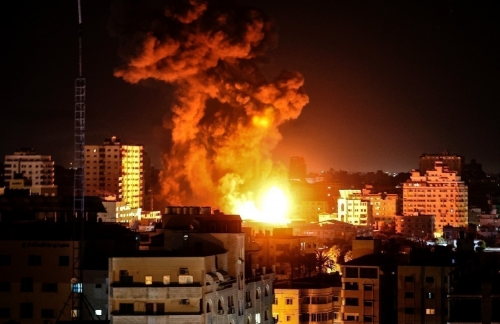
Le Moyen-Orient en flammes. L'insoutenable dégénérescence de la guerre
De la Première Guerre mondiale au conflit entre Israël et le Hamas, la fin de tout "code" chevaleresque
par Giuseppe Del Ninno
Source: https://www.barbadillo.it/111416-degenerazione-guerra/
Le Moyen-Orient en flammes
Nos illusions résiduelles d'une guerre chevaleresque, de cette "antique fête cruelle" racontée par Franco Cardini et portée au seuil de la modernité dans la version du bellum federicianum, sont tombées depuis longtemps. Le respect de l'ennemi semble avoir été irrémédiablement perdu, le fait de voir en lui les traits d'humanité que nous nous attribuons et qui, par exemple - citant Antonio Polito dans un bel éditorial du Corriere della Sera - sous-tend la décision de George Orwell et d'Emilio Lussu de ne pas tirer sur l'ennemi qui ne se doute de rien, au milieu de guerres aussi impitoyables que la guerre civile espagnole ou la Première Guerre mondiale.
L'attaque du Hamas contre les civils est décrite comme une nouveauté tragique, mais ce n'est pas comme si ces derniers, tout au long de l'histoire, avaient été exemptés des horreurs de la guerre: les êtres humains ont toujours commis les mêmes crimes, tant dans la dimension privée que publique des guerres ; certaines choses, cependant, ont changé avec l'avènement de la technologie : par exemple, aujourd'hui, et pas seulement aujourd'hui, on tue à distance, en appuyant sur un bouton comme dans un jeu vidéo, et grâce au "progrès technologique", les actes les plus odieux peuvent être filmés et diffusés, de manière à banaliser le mal et à habituer les masses à la violence ; celle-ci, en revanche, se retrouve dans tant de fictions - films, jeux vidéo, séries télévisées - caractérisées précisément par cette violence et qui, pourtant, ne produisent pas de dégâts matériels. Quant à la technologie - qui permet aussi des fictions plus crédibles que par le passé - ou à la dérive de la guerre cybernétique, il y aurait d'autres chapitres à ouvrir, mais ce n'est pas le lieu.

Les brutalités
Après celles perpétrées en Ukraine, les brutalités perpétrées par le Hamas contre des citoyens israéliens ces derniers jours redonnent une tragique actualité à la question palestinienne, déclinant de manière inédite la guerre, comparée par plus d'un observateur d'une part à l'attaque japonaise de Pearl Harbour et d'autre part à l'attentat islamiste contre les tours jumelles de New York. Mais il y a ici une étape supplémentaire, qui est donnée non seulement par l'implication ciblée et pour l'instant presque exclusive de civils, mais aussi par le massacre délibéré d'enfants, qui renouvelle celui ordonné par Hérode. Certes, des enfants ont été tués dans toutes les guerres, mais il s'agissait le plus souvent de cas isolés de cruauté ou d'"effets collatéraux", peut-être aussi terribles que ceux dont le Haut Commandement s'est rendu responsable en décidant des bombardements non limités à des cibles militaires à Dresde, Naples et, surtout, Hiroshima et Nagasaki. Il s'agissait dans ces cas de punir, d'effrayer et de pousser à la rébellion contre leurs dirigeants des populations qui avaient obtenu l'assentiment de ces dirigeants, de ces régimes.
Le fondamentalisme
Quelque chose de semblable a dû guider les féroces stratèges du Hamas, un mélange mortel de haine atavique, de perspectives géopolitiques et d'impitoyabilité qui ne peut être concilié avec aucune religion. Après tout, le fondamentalisme islamique n'en est pas à son premier coup d'éclat: il suffit de rappeler les récents attentats du Djihad en Europe et les dérives sanglantes du processus de décolonisation en Algérie, avec l'avènement du GIA, une organisation composée d'égorgeurs sous les couteaux desquels sont également tombés des moines et des marins d'un navire marchand italien. Dans le cas du Hamas, cependant, il semble y avoir quelque chose de plus: la perspective de représailles israéliennes d'une ampleur sans précédent sur Gaza, qui ont commencé par un siège privant d'eau, de gaz et d'électricité et pourraient se poursuivre par des bombardements aveugles, préparant un assaut suivi d'une guérilla de maison en maison. Le massacre de civils qui s'ensuivrait, dans le cadre de la stratégie malavisée du Hamas, soulèverait les masses arabes du monde entier, avec des conséquences imprévisibles non seulement sur les accords géopolitiques, mais aussi sur la stabilité et la paix dans le monde entier.

Un enchevêtrement insoluble
Certes, les horribles massacres de colons israéliens et de jeunes surpris dans une fête dans le désert n'aideront pas la cause palestinienne aux yeux de l'opinion publique occidentale, où il existe aussi des secteurs qui sont tout sauf favorables à Israël ; le fait est que cette nouvelle crise complique encore un peu plus un enchevêtrement dont nous craignons qu'il ne soit pas soluble. Quiconque a étudié l'histoire de l'État d'Israël sait qu'il est né dans le sang, dans les tergiversations à l'égard du peuple palestinien, dans le cynisme et la myopie des puissances ayant des intérêts dans la région (la Grande-Bretagne en premier lieu) ; il sait aussi combien de tentatives pour parvenir à une paix durable dans ce quadrant crucial ont échoué, le plus souvent à cause de la responsabilité palestinienne - de l'OLP d'Arafat en particulier - malgré le sacrifice d'hommes "de bonne volonté" des deux côtés (surtout Sadate et Rabin). Ceux qui se sont rendus sur ces terres malheureuses savent combien il est difficile, voire impossible, de mettre en oeuvre le principe "deux peuples, deux Etats".
Il y a en effet une forte asymétrie, et pas seulement dans cette guerre, opposant d'un côté un État démocratique, tenu de respecter les conventions internationales et doté d'une armée régulière, de l'autre des bandes de miliciens sans uniforme ni loi, d'ailleurs mélangées à des civils et installées dans des installations civiles. Il faut d'ailleurs préciser que la démocratie israélienne ne reconnaît pas l'égalité des droits à ses citoyens palestiniens et que, de l'autre côté, le pouvoir du Hamas remonte à un succès électoral et se consolide par son attitude d'assistanat, une sorte d'assistanat assuré en particulier pour les habitants de la bande de Gaza. Juste pour nous rappeler que la démocratie est susceptible de nombreuses distinctions.
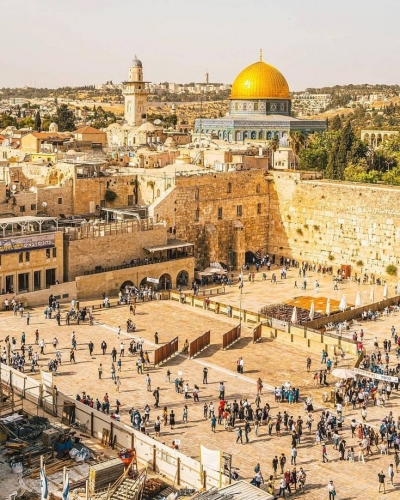
Jérusalem la ville sainte
Nous avons évoqué l'impraticabilité d'une solution négociée : le nœud principal est représenté par Jérusalem, que les deux parties en conflit voudraient voir comme capitale de leur structure étatique respective ; mais cela ne suffit pas : le peuple palestinien - sans compter les contingents qui ont émigré dans diverses parties de la planète - est disloqué dans un patchwork territorial à l'intérieur même de l'État d'Israël (où résident 20 % de la population et qui a la citoyenneté israélienne). Il suffit de penser à des villes comme Bethléem, Jéricho, Ramallah, administrées par des Palestiniens et situées à une vingtaine de kilomètres de Jérusalem. Ajoutez à cela le fait que, dans de nombreux cas, Israël a érigé des murs et installé des points de contrôle pour les sorties et les entrées de ces citoyens ; que la quasi-totalité de la population palestinienne est économiquement dépendante d'Israël ; que, non seulement en temps de crise, l'approvisionnement en eau et en électricité est entre les mains d'Israël, et l'on comprendra pourquoi il n'a pas été possible jusqu'à présent de parvenir à un accord de paix fondé sur le principe susmentionné de "deux peuples, deux États" (sans parler du fait qu'actuellement, compte tenu de la crise à la tête de l'Autorité palestinienne et de son dirigeant Abou Mazen, âgé de 88 ans, il n'y a pas d'interlocuteur crédible de ce côté pour toute initiative diplomatique éventuelle).
Si l'on pense ensuite aux connexions possibles avec les crises en cours dans d'autres régions, à commencer par le conflit russo-ukrainien, mais aussi les frictions entre l'Azerbaïdjan et l'Arménie à propos du Nagorno Karabakh et entre la Serbie et l'Albanie à propos du Kosovo (sans parler des bouleversements dans la bande subsaharienne), il y a de quoi être très inquiet. Ces derniers jours, nous avons vu la détermination de tant de jeunes réservistes - et parmi eux, pas mal d'Italo-Israéliens - partir pour Tel Aviv afin de répondre à l'appel de la Patrie.
L'Europe, un sujet politique inexistant
Voici un autre front inquiétant pour notre Europe, une fois de plus inexistante en tant que sujet politique unitaire : non seulement nous vieillissons et souffrons d'une crise démographique généralisée, mais nous avons perdu l'esprit de sacrifice et de dévouement à nos patries respectives, qui caractérise, avec la moyenne d'âge jeune, la quasi-totalité des pays qui nous entourent. Alors, à rebours de la devise cicéronienne, caedant togae armis ? L'évolution de la situation dans ce qui fut la Terre promise et qui est en tout cas, pour les religions d'Abraham, la Terre sainte, n'autorise pas trop d'espoir, même aujourd'hui où les guerres ne semblent plus déboucher sur une victoire sur le terrain.
Giuseppe Del Ninno
23:50 Publié dans Actualité | Lien permanent | Commentaires (0) | Tags : israël, hamas, actualité, politique internationale |  |
|  del.icio.us |
del.icio.us |  |
|  Digg |
Digg | ![]() Facebook
Facebook
L'Iran détecte la vulnérabilité des États-Unis et de ses alliés: le pétrole
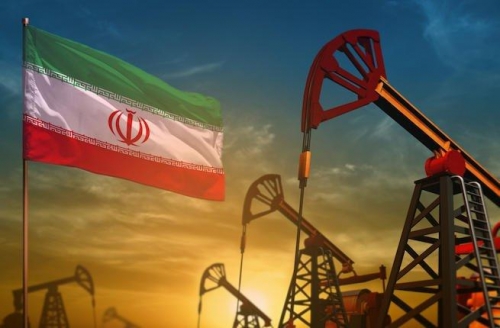
L'Iran détecte la vulnérabilité des États-Unis et de ses alliés: le pétrole
Par Alfredo Jalife Rahme
Source: https://noticiasholisticas.com.ar/iran-detecta-la-vulnerabilidad-de-eeuu-y-sus-aliados-el-petroleo-por-alfredo-jalife-rahme/
Un baromètre sensible à suivre pour refléter l'intensification de la guerre d'Israël contre le Hamas est le prix du binôme pétrole/gaz: une vulnérabilité des Etats-Unis et de son allié Israël, qui a dévalué sa monnaie. Pour faire pression sur l'invasion et la destruction de Gaza par Israël, l'Iran joue la carte du boycott pétrolier.
La guerre d'Israël - qui dispose de l'une des meilleures armées professionnelles au monde avec entre 90 et 400 bombes nucléaires (selon les statistiques) et du meilleur, voire de l'emblématique, service d'espionnage de la planète, le Mossad - contre la guérilla palestinienne sunnite du Hamas, est entrée dans sa deuxième semaine de conflagration, alors qu'une escalade évidente avec des allusions à des menaces nucléaires est en train de se produire.
Il existe plusieurs approches pour analyser l'escalade inquiétante qui pourrait conduire à une contamination aux quatre frontières d'Israël :
- 1) le Sud-Liban, où la guérilla chiite du Hezbollah est équipée de 100.000 missiles pouvant causer de graves dommages au Nord d'Israël et au porte-avions américain USS Gerald R. Ford avec sa puissante flottille maritime, qui se trouve au large des côtes israéliennes pour "protéger" son allié.
- 2) la Syrie, où l'armée de l'air israélienne, censée disposer des meilleurs pilotes au monde, a détruit les deux aéroports de Damas et d'Alep, malgré la présence militaire de la Russie au large des côtes syriennes
- 3) la Jordanie, relativement faible sur le plan militaire, dont la population est composée d'au moins 50 % de Palestiniens.
- 4) L'Égypte, première puissance militaire du monde arabe et pays le plus peuplé, qui s'est limitée à une médiation diplomatique avec les États-Unis et Israël, avec lequel elle a signé un accord de paix en 1979.
Tel serait le "premier cercle concentrique" de l'expansion du conflit, dont les ondes pourraient bien atteindre, dans un "deuxième cercle concentrique", deux pays non arabes qui soutiennent la résistance palestinienne à leur manière et dans leur style particulier: la Turquie sunnite et l'Iran chiite.
La guerre hybride asymétrique entre Israël et la guérilla du Hamas n'est pas seulement militaire, elle implique aussi d'autres pays de la région dans un "deuxième cercle concentrique", centré principalement sur tous les pays riverains du golfe Persique, notamment l'Iran et les six pétromonarchies arabes : l'Arabie saoudite, les Émirats arabes unis, le Qatar, le Koweït, le Bahreïn et Oman.
Le président Biden a subi un affront notoire lorsque les dirigeants de l'Égypte, de l'Autorité nationale palestinienne (l'ancienne OLP) et de la Jordanie ont refusé de le rencontrer au sujet de l'infanticide palestinien à l'hôpital Al-Ahli de Gaza.
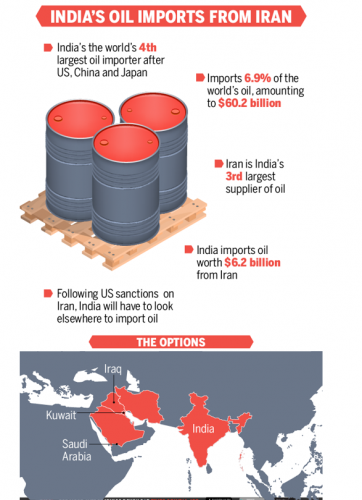

Au-delà de la focalisation sur le théâtre de la bataille et son "premier cercle concentrique", la récente visite méga-stratégique du ministre iranien des Affaires étrangères Hossein Amir Abdollahian à son voisin maritime, le prince héritier Mohammed bin Salman, c'est-à-dire le représentant d'une des principales superpuissances gazières avec le représentant d'une des premières puissances pétrolières mondiales, mérite d'être relevée parmi ses nombreuses variantes.
Le ministre iranien des affaires étrangères a exhorté les 57 pays de l'Organisation de la coopération islamique, qui compte 1,8 milliard de fidèles musulmans, à boycotter les exportations de pétrole vers les États-Unis et Israël, ce qui rappelle l'embargo pétrolier arabe de 1973, il y a 50 ans, en raison de la guerre du Kippour, auquel les États-Unis ont répondu un an plus tard en créant l'Agence internationale de l'énergie pour contrer le pouvoir de l'OPEP.
Aujourd'hui, 50 ans plus tard, l'OPEP est passée à un format plus créatif par le biais de l'OPEP+, où la présence de la Russie est remarquable.
À mon avis, l'un des principaux baromètres géoéconomiques/géofinanciers de la guerre en cours se trouve dans les prix actuels du pétrole/gaz et de l'or/argent, qui sont encore relativement stables.
Au-delà de ses effets délétères sur l'Europe et Israël - qui a subi une forte dévaluation de sa monnaie, le shekel, forçant l'intervention de sa Banque centrale avec la vente de 30 milliards de dollars -, une façon de faire face à la guerre est de chercher un moyen de sortir de la crise économique/géo-financière actuelle. 30 milliards de dollars - une façon de mesurer la vulnérabilité pétrolière des États-Unis et de leurs alliés - qui ont été affectés par l'effet boomerang des sanctions contre la Russie, qui a provoqué l'inflation incoercible des États-Unis et déclenché une grave crise de la dette un an après son élection présidentielle controversée - a été exposée avec la levée des sanctions par l'administration Biden sur le régime anathémisé de Maduro au Venezuela, qui possède les plus grandes réserves de pétrole conventionnel et non conventionnel au monde.
Il est clair que la sélectivité de la levée des sanctions américaines était principalement axée sur le secteur énergétique du Venezuela, qui, soit dit en passant, entretient d'excellentes relations avec la théocratie chiite iranienne.
Il est intéressant de noter qu'avant l'emblématique 7 octobre - sans perdre de vue le fait que c'est le discours incendiaire du Premier ministre Netanyahu devant l'Assemblée générale des Nations unies qui a déclenché la grave crise régionale, lorsqu'il s'est vanté avec infatuation de la "normalisation" imminente des relations avec l'Arabie saoudite, parallèlement à la présentation de sa carte du nouveau Moyen-Orient où Gaza et la Cisjordanie ont été effacées, ainsi que de la dissuasion nucléaire d'Israël contre l'Iran (ce dernier point a été supprimé par son équipe) - l'administration Biden, qui s'est félicitée de la "normalisation" des relations avec les États-Unis, s'est trouvée au milieu d'une série de sanctions américaines à l'encontre du Venezuela et des États-Unis, l'administration Biden, qui a récolté de multiples échecs en matière de politique étrangère, s'était rapprochée de l'Iran pour reprendre les négociations sur son contentieux nucléaire qui avaient été abolies par l'ancien président Trump pour plaire à son gendre Jared Kushner et au Premier ministre Netanyahou, qu'il a d'ailleurs sévèrement critiqué pour ses actions passées dans l'ancienne Palestine, allant jusqu'à déclarer ces jours-ci que la guérilla chiite libanaise Hezbollah est "très intelligente".
L'un des moyens utilisés pour séduire l'Iran a été la livraison de 6 milliards de dollars déposés au Qatar à la suite d'un embargo pétrolier imposé par la Corée du Sud à la théocratie chiite.
Il est frappant de constater que M. Biden a déclaré qu'il n'y avait "aucune preuve" de l'implication de l'Iran dans l'attaque du Hamas du 7 octobre.
L'Iran a toujours été la cible privilégiée des néoconservateurs straussiens, pour la plupart des Khazars, qui contrôlent le Département d'État aujourd'hui dysfonctionnel dans sa guerre ratée en Ukraine, pour renverser la théocratie chiite, Gaza ou pas Gaza.
23:15 Publié dans Actualité, Géopolitique | Lien permanent | Commentaires (0) | Tags : iran, pétrole, hydrocarbures, géopolitique, politique internationale, hamas, israël, moyen-orient |  |
|  del.icio.us |
del.icio.us |  |
|  Digg |
Digg | ![]() Facebook
Facebook
mercredi, 18 octobre 2023
Le 11 septembre d’Israël

Le 11 septembre d’Israël
par Pierre-Emile Blairon
La réaction aux atrocités commises par la branche armée du Hamas, ceux que les Israéliens appellent des « animaux humains », a été immédiate et unanime pour dénoncer ces barbares.
Ce conflit lointain nous concerne, nous, Français, et nous, Européens, parce que nous accueillons tous les jours dans nos pays un nombre important de musulmans, venus souvent de pays qui soutiennent la Palestine, dont la plupart choisiront le camp palestinien par solidarité religieuse et parce que cette prise de position risque de créer davantage de troubles s’il en était besoin ; de plus, nous pouvons nous alarmer de l’éventualité que, parmi ces clandestins, ont pu s’infiltrer des djihadistes qui ont eu pour mission d’opérer des attentats sur notre sol [1].
FLN, Hamas, même combat
Je vais évoquer brièvement la différence de traitement médiatique en France, révélée par ce carnage commis par ces terroristes [2] contre d’innocents civils israéliens, les enfants n’ayant pas été épargnés par cette sauvagerie, avec celui, tout aussi cruel mais occulté, enduré par les Français d’Algérie, chrétiens, juifs ou musulmans, vieillards, femmes et enfants compris, carnage commis quotidiennement de 1954 à 1962 (et au-delà en ce qui concerne notamment les harkis, musulmans fidèles à la France) par les mêmes barbares, ou tout au moins leurs initiateurs, il y a 70 ans.
Les Français d’Algérie n’étaient pas rompus à cette époque aux techniques de manipulation des masses dont se servent actuellement tous les politiciens de tous les pays au monde selon leurs besoins et les circonstances. Israël dispose de relais importants dans le monde grâce à la diaspora juive et a naturellement activé ses réseaux médiatiques pour condamner l’agression du Hamas dont a été victime une partie du peuple israélien.

Le terrorisme tel qu’il a été pratiqué par le Hamas et tel qu’il a été pratiqué par le FLN (Front de Libération Nationale) algérien fait aussi partie de cette technique de manipulation des masses qui s’appelle la stratégie de l’émotion; les fellaghas, ainsi nommés autrement les terroristes du FLN, s’en sont pris d’abord aux musulmans pour les contraindre par la terreur (essentiellement la torture et les mutilations du visage - nez, lèvres, oreilles - bien visibles, pour faire des exemples) à s’éloigner de la communauté des Français d’Algérie et de toutes les structures qui représentaient la France sous toutes ses formes, de telle manière à provoquer une rupture irréversible entre les deux communautés; il semble bien que c’est le même effet qui est également recherché dans cette opération en Israël.
Il est probable que si les Français d’Algérie et la grande majorité des musulmans fidèles à la France avaient su utiliser cette même stratégie de l’émotion – celle de la victime – sur le plan national et international pour contrer celle de la terreur choisie par leurs ennemis, une solution aurait pu être trouvée pour que les deux communautés puissent continuer à vivre en bonne entente dans ce qui était leur pays, aux uns et aux autres. Ce qui est actuellement le même cas de figure pour la Palestine et pour Israël.
Qu’est-ce que la stratégie de l’émotion ? Elle a été bien définie par le site internet « Penser et agir [3] » : « Il s’agit d’une technique de manipulation qui repose sur l’exploitation des émotions d’un individu ou d’un groupe dans le but de paralyser sa réflexion et éteindre son esprit critique. Le contrôle émotionnel sert à pousser une personne ou un groupe de personnes à réagir sous l’impulsion émotive plutôt que de raisonner et d’agir devant une situation. C’est un moyen pour atrophier la faculté d’analyse des individus et de la société par le biais d’émotions que l’on veille avec soin à susciter chez eux. De la sorte, on se charge d’affaiblir la capacité à cogiter de l’humain pour réduire toute son action au ressenti.
L’objectif est de s’opposer à ce que les autres se fassent leur conception propre de la réalité. Il faut les empêcher de mener des analyses critiques dénuées de toute émotivité sur les faits. C’est une technique très prisée dans les domaines où les notions de liberté de choisir, liberté de penser ou le libre arbitre posent problème. Très concrètement, c’est la politique et le marketing qui y ont très souvent recours. »
L’analogie du FLN et du Hamas ne s’arrête pas à leur commune propension à considérer que le seul moyen de rallier leur peuple à leur cause et de gagner leur guerre est de régner par la terreur, ce qui reste la seule ressource pour ceux qui n’ont pas d’autre moyen d’agir.
L’une et l’autre de ces factions n’ont pas, ou très peu, de légitimité à représenter leur peuple.
L’Algérie- ni même son nom – n’existait pas à l’arrivée des Français; le territoire était peuplé de tribus berbères successivement envahi par les Romains, les Vandales, les Arabes, les Turcs, les Français; ses habitants furent successivement païens, chrétiens, musulmans.

Le FLN est apparu en 1954, fort d’une idéologie curieuse faite d’un cocktail de marxisme (comme c’était la mode à l’époque) et d’islamisme (comme c’est la mode aujourd’hui), le shaker possiblement agité par la CIA (comme c’est la mode depuis que les USA existent et partout dans le monde), la CIA, comme un chien renifleur, attirée alors par la découverte en 1954 du gaz puis du pétrole saharien.
Le Hamas suit la même stratégie qui a si bien réussi au FLN; on peut ainsi constater que son fanatisme a transporté le conflit israélo-palestinien du plan territorial au plan religieux, radicalisant d’une manière dogmatique la situation et fermant ainsi la porte à tout processus de paix entre les deux factions.
Je vais maintenant poser les questions que nos médias occidentaux qui ne servent à rien, sinon à diffuser la parole de leurs maîtres, ne se posent toujours pas sur cet événement qui est pourtant de la plus haute importance. Je n’apporte pas de réponse à ces questions; ce sont les dirigeants israéliens qui y répondent; quelques-unes resteront sans réponse pendant… un certain temps.

Première question :
D’où vient le Hamas ?
Avi Primor, importante et influente personnalité du monde culturel, politique et diplomatique israélien nous donne une piste de compréhension de cet événement qui a surpris et horrifié le monde entier le 7 octobre 2023 ; il nous dit, dans la vidéo ci-jointe : « Le Hamas, c’est le gouvernement israélien, c’est nous qui avons créé le Hamas afin de créer un poids contre le Fatah (mouvement nationaliste palestinien créé par Yasser Arafat en 1959 [4]) »
En mars 2019, Netanyahou disait ceci : « quiconque veut contrecarrer la création d’un Etat palestinien doit soutenir le renforcement du Hamas et transférer de l’argent au Hamas[5]. »
Deuxième question :
Si le Hamas est une création de l’État d’Israël, a-t-il agi de sa propre initiative pour provoquer le massacre du 7 octobre, est-il devenu incontrôlable, telle la créature de Frankenstein, et pour quelle raison , ou bien a-t-il reçu des instructions d’une puissance étatique (qui risque fort de rester inconnue) ?
Troisième question :
L’Etat d’Israël a t-il une stratégie, un projet, ou une vision concernant ses relations avec la Palestine ?
Le Media 4-4-2 a diffusé le 11 octobre 2023 une intéressante vidéo où « le très proche conseiller de Klaus Schwab (NDLR : l’adjudant-chef de la Secte mondialiste), Yuval Harari, compare les territoires palestiniens occupés par Israël à un laboratoire de 2,5 millions de cobayes : "Pirater les gens signifie connaître les gens mieux qu’ils ne se connaissent eux-mêmes… Et nous arrivons déjà à l’émergence des régimes de surveillance totale comme dans mon pays en Israël où nous avons un grand laboratoire de surveillance appelé "les territoires occupés" où il y a 2,5 millions de cobayes, qui montre comment surveiller et contrôler complètement une population avec très peu de soldats [6]. » Ah, tiens, voilà un indice intéressant sur le rôle de Tsahal qui, finalement, n’aurait pas besoin d’avoir un grand nombre d’effectifs.
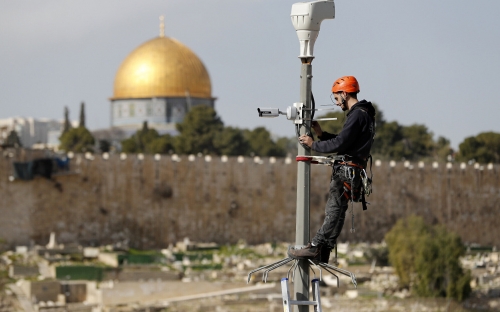
Netanyahou lui-même ne cache rien, dans la vidéo jointe, de sa stratégie à l’égard de la Palestine : « Ce que je veux dire, c’est une grande attaque sur les Palestiniens, jusqu’au point où ils s’imaginent que le monde s’écroule, la peur, c’est ça qui les… mais, après, le monde va dire que c’est nous, les agresseurs [7]... »
Quatrième question :
Est-il possible que ni le Mossad, ni la CIA, ni Tsahal n’aient eu la moindre information sur la gigantesque opération montée par le Hamas ?
Le Mossad est considéré comme l’un des meilleurs services de renseignements du monde, au même titre que la CIA, avec laquelle il travaille souvent de concert, les deux nations, USA et Israël, étant étroitement liées; originellement, ces liens sont d’ordre religieux, ils proviennent de la puissance du fondamentalisme de source évangéliste en Amérique, du fait que les premiers colons américains sont des pilgrims et des membres de diverses sectes religieuses, venus primitivement d’Angleterre d’où ils ont été chassés, qui ont fait de l’Amérique leur nouvelle Terre promise, destin très semblable à celui des Juifs intégristes avec lesquels ils se sont identifiés, considérant qu’ils sont les porteurs d’une mission visant à apporter la « lumière » sur le monde mais sans trop demander leur avis aux peuples sur lesquels cette « lumière » (quelquefois de source nucléaire) vient se déverser.

L’opération du Hamas a impliqué au moins un millier de ses combattants qui ont envahi le sol israélien par la mer, la terre, le ciel (par ULM), écrasant les clôtures qui matérialisent cette séparation avec des bulldozers… on pense à une scène de Madmax...
Est-il possible qu’une telle débauche de moyens ait pu passer inaperçue alors que la quasi-totalité du système de défense israélien, très sophistiqué, est concentrée sur la frontière séparant son territoire de celui de la Palestine ?
Dans cette vidéo [8], cette jeune femme qui a été en poste sur cette frontière pendant deux ans répond à cette question en affirmant que la chose est tout à fait impossible, elle a passé des heures avec ses collègues sans quitter des yeux les caméras de surveillance, réveillée par les battements d’aile d’un oiseau, ou l’intrusion d’un cafard...
Accessoirement, on peut se demander si, lorsque l’armée israélienne s’est enfin mise en position de contrer l’opération terroriste du Hamas, elle n’a pas fait un seul prisonnier susceptible d’expliquer comment la chose a pu se produire. Elle se compose de 170.000 militaires, vient de rappeler 360.000 réservistes et, selon TF1, « concrètement, ce pays de 9,6 millions d'habitants dispose de moyens hors norme: outre son Dôme de fer destiné à abattre les roquettes du Hamas, les forces aériennes peuvent s'appuyer sur 339 avions de combat américains. Notamment près de 200 F-16 et une cinquantaine de F-35. Auxquels s'ajoutent deux escadrons d’hélicoptères Apache, et une flotte de drones: des appareils de repérage, mais aussi des "drones-kamikazes". L'armée de terre, elle, a en sa possession environ 2200 blindés et 530 pièces d’artillerie. Côté mer, pour mettre en œuvre le blocus de la bande de Gaza, la force navale se compose de six sous-marins, 14 navires de guerre et 48 patrouilleurs »
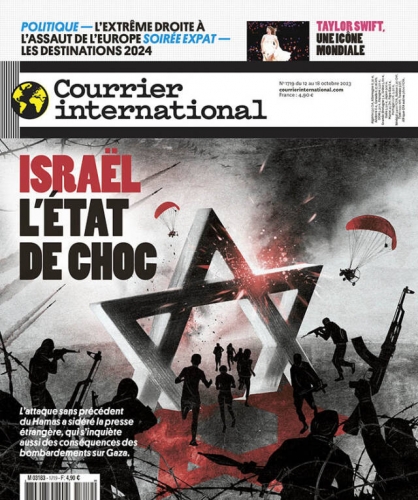
Le 11 septembre d’Israël
L’ambassadeur d’Israël à l’ONU, Guilad Erdan, a estimé que cette opération du Hamas était le 11 septembre israélien, en référence aux attentats de New-York du 11 septembre 2001, qui ont déclenché, en représailles, plusieurs guerres au Moyen-Orient (dont celle d’Irak, la deuxième) qui auraient fait au moins 4,5 millions de morts.
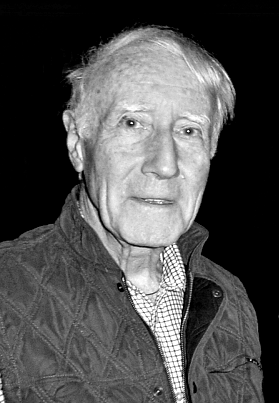
Les attentats du 11 septembre 2001 ont été attribués à une organisation islamiste, Al-Qaïda, créée par la CIA lors de la première guerre d’Afghanistan pour contrer l’URSS selon Peter Dale Scott (photo) [9] : « Dans les années 1980, le directeur de la CIA, William Casey, prit des décisions cruciales dans la conduite de la guerre secrète en Afghanistan. Toutefois, celles-ci furent élaborées hors du cadre bureaucratique de l’Agence, ayant été préparées avec les directeurs des services de renseignement saoudiens – d’abord Kamal Adham puis le prince Turki ben Fayçal. Parmi ces décisions, nous pouvons citer la création d’une légion étrangère chargée d’aider les moudjahidines afghans à combattre les Soviétiques. En clair, il s’agit de la mise en place d’un réseau de soutien opérationnel connu sous le nom d’al-Qaïda depuis la fin de cette guerre entre l’URSS et l’Afghanistan. Casey mit au point les détails de ce plan avec les deux chefs des services secrets saoudiens, ainsi qu’avec le directeur de la Bank of Credit and Commerce International (BCCI), la banque pakistano-saoudienne dont Kamal Adham et Turki ben Fayçal étaient tous deux actionnaires. Ce faisant, Casey dirigeait alors une deuxième Agence, ou une CIA hors canaux, construisant avec les Saoudiens la future al-Qaïda au Pakistan, alors que la hiérarchie officielle de l’Agence à Langley “pensait que c’était imprudent”. »
Pierre-Emile Blairon
Notes:
[1]. A l’instant même où ces lignes sont écrites, nous apprenons l’attentat islamiste dont viennent d’être victimes des enseignants à Arras en France.
[2]. C’est un mot bien pratique, utilisé ad nauseam par nos politiciens, car il permet de ne désigner personne en particulier pour ne pas « stigmatiser » ou « discriminer » telle ou telle communauté ethnique ou religieuse pourvoyeuse de voix électorales.
[3]. https://www.penser-et-agir.fr/strategie-de-l-emotion/
[4]. https://musulmansenfrance.fr/avi-primor-cest-nous-qui-avons-cree-le-hamas/
[5]. https://www.facebook.com/reel/308071611971785
[6]. https://lemediaen442.fr/le-conseiller-de-klaus-schwab-yuval-harari-en-israel-nous-avons-25-millions-de-cobayes-palestiniens-quon-controle-completement/
[7] https://vk.com/video444549918_456239784?fbclid=IwAR1P7Riydi_qHdjLcYiLPsreK_-Ix0ORyTvsUOvFOIt6oJvtuK3QOzGTnmY
[8]. https://www.facebook.com/reel/306099312161022
[9]. Peter Dale Scott : L'Etat profond américain : La finance, le pétrole, et la guerre perpétuelle [« The American Deep State: Wall Street, Big Oil, and the Attack on U.S. Democracy »], Éditions Demi-Lune, 2015
23:30 Publié dans Actualité | Lien permanent | Commentaires (0) | Tags : pierre-émile blairon, hamas, israël, actualité, politique internationale |  |
|  del.icio.us |
del.icio.us |  |
|  Digg |
Digg | ![]() Facebook
Facebook
mardi, 17 octobre 2023
Choisir le dialogue contre toutes les guerres
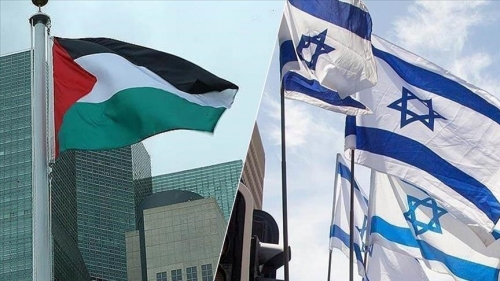
Choisir le dialogue contre toutes les guerres
Luca Bagatin
Source: https://electomagazine.it/il-dialogo-contro-ogni-guerra/
Il y a quelques jours, dans un article, je faisais remarquer qu'en ces temps sombres, entre incapacité politique, fondamentalisme (de tous bords), absence de perspectives et de bases scientifico-culturelles solides, on ressentait fortement le manque de personnalités politiques de la stature de Bettino Craxi et de Giulio Andreotti.
Des personnalités capables de comprendre les raisons de chacun, de dialoguer aussi bien avec le monde atlantiste (en y adhérant, mais de manière responsable et tout sauf idéologique), qu'avec le monde soviétique et le monde arabe laïc, dans une perspective anti-fondamentaliste et anti-terroriste.
Cet esprit de dialogue est aujourd'hui totalement absent sur le plan géopolitique.
Un esprit de dialogue contre toutes les représailles, contre toutes les bombes, contre tous les attentats qui détruisent des vies humaines innocentes.
Aujourd'hui comme hier, les extrémismes de rue, opposés les uns aux autres, tendent à l'emporter - les bases de supporters opposées semblent l'emporter. Des supporters qui, à l'instar des extrémistes poseurs de bombes des années 70, n'aident certainement pas à la compréhension et au dialogue.
Des supporters qui inondent non seulement les places, mais aussi les rédactions des journaux, les talk-shows, les parlements nationaux et européen.
Des typhons qui semblent avoir surgi après l'annus horribilis de 1993 en Italie, sur les décombres des partis démocratiques et gouvernementaux, qui ont été délibérément anéantis.
Depuis 1993, ce n'est pas un hasard si, au gouvernement, nous n'avons plus le cher vieux centre-gauche (composé de DC, PSI, PSDI, PRI), dirigé par des personnalités sérieuses, responsables, réformistes, qui ont peut-être grandi à l'école politique de Saragat, Pacciardi, De Gasperi, Nenni et d'autres figures historiques éminentes.
Aujourd'hui, nous avons malheureusement, tant au Parlement qu'au gouvernement ou dans les talk-shows, les héritiers des extrêmes opposés, ceux de droite et ceux de gauche (issus aussi bien du MSI que du PCI ou du militantisme de 1968), désormais tous unis par leur adhésion au fondamentalisme libéral-capitaliste, par l'irresponsabilité en matière de politique étrangère et par la réduction, non pas des privilèges de la caste (qu'ils prétendent, de manière démagogique, vouloir démolir), mais de ce qui reste de la santé publique et de l'éducation.
Il en va de même dans le reste de l'Union européenne.
Socialistes et populistes remplacés par des pseudo "socialistes" et des pseudo "populistes", qui répondent plus à la logique des affaires qu'aux besoins réels du citoyen, ainsi qu'aux objectifs des présidents américains en service. Les présidents des États-Unis sont d'ailleurs souvent critiqués, à juste titre, par la presse libre américaine, qui, malheureusement, est peu lue ou rarement prise en considération par les Européens.
La raison et le dialogue devraient toujours prévaloir, et le seul drapeau à brandir devrait être celui de la stabilité, de la concorde entre les peuples, de l'entraide et de la coopération internationale.
Des aspects qui, à juste titre, ont été au cœur des gouvernements du seul véritable centre-gauche que l'Italie ait connu (de 1948 à 1992) et d'une Europe qui a eu pour représentants des personnalités comme Charles De Gaulle et François Mitterrand.
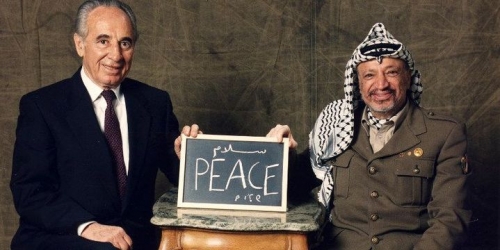
Il ne peut et ne doit jamais y avoir de prédominance d'une force sur une autre. C'est ce qu'ont bien compris des réformateurs comme Shimon Peres et Yasser Arafat, qui ont su dialoguer et parvenir à un accord en 1993.
Aujourd'hui, au niveau international, il semble que ceux qui incarnent cet esprit de responsabilité et de réformisme typique des gouvernements d'avant 1993 soient le Brésil socialiste de Lula, l'État qu'est la Cité du Vatican du pape François et la République populaire de Chine de Xi Jinping.
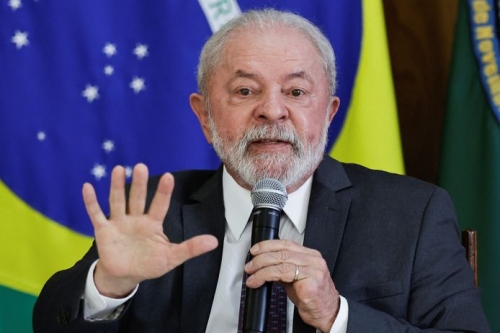
Le président brésilien Luiz Inácio Lula da Silva a fait des déclarations importantes il y a quelques jours, soulignant qu'"une intervention humanitaire internationale est nécessaire de toute urgence". Il a poursuivi en déclarant qu'"un cessez-le-feu est nécessaire de toute urgence pour défendre les enfants israéliens et palestiniens". Il a également déclaré que le Hamas devait libérer les enfants israéliens "enlevés à leurs familles". Dans le même temps, il a appelé Israël à cesser ses bombardements "pour permettre aux enfants palestiniens et à leurs mères de quitter Gaza par la frontière avec l'Égypte". "Il doit y avoir un minimum d'humanité dans la folie de la guerre", a ajouté le président Lula, qui a également souligné que le Brésil entendait, à l'ONU, œuvrer pour une fin définitive du conflit, en continuant à "travailler à la promotion de la paix et à la protection des droits de l'homme dans le monde".
Le Vatican travaille également dans ce sens, en condamnant les crimes commis par le Hamas et en promouvant la solution de la création de deux États, permettant ainsi aux Palestiniens et aux Israéliens de cohabiter pacifiquement.
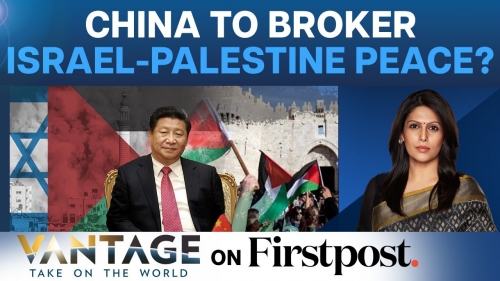
La République populaire de Chine est du même avis: le 13 septembre, par l'intermédiaire de son ministère des affaires étrangères, elle a déjà présenté une proposition de réforme de la gouvernance mondiale, axée sur la sauvegarde de la paix et de la stabilité dans le monde.
Dans ce document, la Chine, en ce qui concerne la question israélo-palestinienne, a déclaré qu'elle "condamne fermement toutes les formes de terrorisme et d'extrémisme. La Chine s'oppose à l'association du terrorisme et de l'extrémisme à un pays, un groupe ethnique ou une religion en particulier, s'oppose à la politique du deux poids deux mesures dans la lutte contre le terrorisme et s'oppose à la politisation ou à l'instrumentalisation de la question de la lutte contre le terrorisme" et "soutient fermement la juste cause du peuple palestinien pour le rétablissement de ses droits nationaux légitimes". La solution fondamentale à la question palestinienne est la création d'un État palestinien indépendant jouissant d'une pleine souveraineté".
Sur la question ukrainienne, la Chine a réitéré sa position: "La souveraineté et l'intégrité territoriale de tous les pays doivent être respectées. Tous les efforts visant à trouver une solution pacifique à la crise doivent être soutenus. Personne ne gagne au conflit et à la guerre. Imposer des sanctions, exercer des pressions ou jeter de l'huile sur le feu ne fera qu'aggraver la situation. Il est important de maintenir le respect mutuel, d'abandonner la mentalité de la guerre froide, de cesser de s'allier pour alimenter la confrontation dans les camps, et de travailler à la construction d'une architecture de sécurité européenne équilibrée, efficace et durable".
Le document chinois de septembre dernier interdit également tout recours aux armes nucléaires en cas de guerre, prône la nécessité de lutter contre le changement climatique, stigmatise toute utilisation de l'énergie nucléaire "au détriment de l'environnement et de la santé humaine" et "soutient fermement le rôle central des Nations unies dans les affaires internationales".
Qui sait si un tel esprit réformateur, qui devrait à nouveau voir une alliance sérieuse entre les esprits laïques-socialistes (authentiques et non libéraux-capitalistes) et chrétiens modérés (authentiques et non fondamentalistes ou cléricaux), pourra renaître même en Europe, après au moins trente ans d'absence.
Personnellement, je suis très pessimiste, mais, en tout cas, ce serait déjà quelque chose si les nouvelles générations évitaient les erreurs des générations de leurs pères (qui ont voulu faire la "révolution", alors qu'en réalité ils ont jeté les bases de la contre-révolution) et commençaient à apprendre des générations précédentes. Celles qui, sortant des horreurs de la guerre, se sont retroussé les manches et ont construit un avenir où la démocratie, la justice sociale et la liberté étaient au cœur du projet politique. C'était du moins le cas de 1945 à 1992. Après... le déluge !
17:50 Publié dans Actualité | Lien permanent | Commentaires (0) | Tags : dialogue, politique internationale, actualité, israël, palestine, gaza |  |
|  del.icio.us |
del.icio.us |  |
|  Digg |
Digg | ![]() Facebook
Facebook
lundi, 16 octobre 2023
Le Hamas et Israël. La tête froide

Le Hamas et Israël. La tête froide
Andrea Marcigliano
Source: https://electomagazine.it/hamas-e-israele-a-mente-fredda/
Le sensationnalisme macabre de ces dernières heures risque d'empêcher tout raisonnement lucide. C'est au contraire d'une telle forme de raisonnement dont nous avons besoin. Un besoin, si j'ose dire, désespéré. Un besoin vital si l'on veut au moins tenter d'éviter une déflagration aux proportions difficilement imaginables.
Il peut sembler froid et cynique de ne pas pleurer les morts de l'un et/ou de l'autre camp. De n'éprouver, désormais, que de la nausée face aux images d'horreur, relancées sans cesse par les médias jusqu'à l'obsession. Un rituel presque obligatoire. Dont très peu - Luttwak, Moni Ovadia, quelques autres - ont jusqu'à présent réchappé.
Dont acte.
Parlons d'abord du Hamas. Ce qu'il est n'est pas un scoop. On sait quelle est sa référence idéologique. Les similitudes avec ISIS sont, il est vrai, nombreuses. Il s'agit d'une émanation extrême et hérétique des Frères musulmans. Il a littéralement pris le contrôle de la bande de Gaza depuis 2007. Interdisant violemment toute dissidence interne.
Il est dangereux. Très dangereux, assurément. Pourtant, il a bénéficié d'une tolérance apparemment incroyable. De la part du monde occidental. Et, paradoxalement, aussi du côté israélien.
La raison en est simple. Le Hamas a brisé l'unité des Palestiniens. Une unité qui a toujours été difficile. Car le monde palestinien est une mosaïque complexe, pleine de contradictions et de contrastes. Même Arafat n'a jamais réussi à le contrôler complètement.
Le Hamas, cependant, est une force particulière. Il n'est pas vraiment intéressé par la naissance d'un État palestinien indépendant. Son point de vue vise la création d'un grand califat sunnite unique.
C'est pourquoi il a eu, dans une certaine mesure, les mains libres pendant longtemps. Il a divisé les Palestiniens. Il ne représentait pas une menace territoriale directe.
Une erreur tragique, assurément. Ce qui a permis la création d'un ghetto/prison aux proportions bibliques à Gaza. Et qui a donné au Hamas une masse dépossédée, totalement dépendante de l'aide étrangère. Essentiellement celle de l'Union européenne. Qui sont gérées par le sommet de l'organisation.
Un sommet qui, soit dit en passant, réside au Qatar, son grand protecteur. Le Qatar qui est, lui, un proche allié de Washington.
Quant à la proximité avec l'Iran, il y a beaucoup à dire. Certes, les Iraniens ont exploité le Hamas pour prendre pied en Palestine. Une arme à brandir, comme une menace, contre Israël. Et le Hamas a exploité les Iraniens pour obtenir, avant tout, une bonne organisation militaire.
Mais le Hamas représente l'extrémisme sunnite, dont les chiites iraniens sont les ennemis jurés. Des hérétiques à anéantir.
Compliqué, n'est-ce pas ?
Cependant, même du côté d'Israël, tout n'est pas clair et net. Au contraire.

Netanyahou est en net déclin. Et les factions politiques internes s'affrontent. Une lutte qui passe inévitablement par ce qui, pour Israël, est la question vitale par excellence. La relation avec les Palestiniens.
L'une des erreurs de Bibi est d'avoir mis en sourdine les accords signés pour résoudre ce problème. D'avoir concentré trop de ressources et trop d'efforts pour favoriser les implantations dans les territoires. Avoir miné le front de Gaza.
Avoir été influencé par les partis religieux. Ne pas avoir accordé suffisamment de place aux militaires dans son gouvernement.
Aujourd'hui, il tente de se rattraper avec un gouvernement d'unité nationale. Et en évinçant les partis les plus radicaux. Ceux qui rêvent du grand Israël.
Mais il est évident qu'après ce moment, les opposants politiques chercheront l'épreuve de force.
Ils exploiteront également l'isolement international de Netanyahou.
Bibi a en effet peu d'amis à Washington. Biden et les siens ne lui pardonnent pas, entre autres, la position prise sur l'Ukraine. Une tentative de rester en dehors du front anti-russe qui a fait preuve d'une certaine sagesse diplomatique.
Mais surtout, George Soros le déteste. Réciproquement, cordialement. Et Soros, c'est le pouvoir de la haute finance internationale.
L'image d'Israël comme bloc granitique, parfaitement soudé à la diaspora juive, est purement illusoire. Bien sûr, en temps de crise, ils donnent cette impression.
Pourtant, les fissures sont là. Profondes. Et capables d'émerger à tout moment.
21:18 Publié dans Actualité | Lien permanent | Commentaires (1) | Tags : actualité, politique internationale, israël, hamas, palestine, proche-orient, levant |  |
|  del.icio.us |
del.icio.us |  |
|  Digg |
Digg | ![]() Facebook
Facebook
dimanche, 15 octobre 2023
Israël a-t-il contribué à la création et à la montée en puissance du Hamas ?

Israël a-t-il contribué à la création et à la montée en puissance du Hamas?
Par Bruno Sgarzini*
Source: https://noticiasholisticas.com.ar/israel-ayudo-a-la-creacion-y-ascenso-de-hamas-por-bruno-sgarzini/
Israël a-t-il aidé à la montée en puissance du Hamas, l'organisation qui a perpétré sur son sol le pire attentat depuis 50 ans ?
En 2019, Benjamin Netanyahou a déclaré lors d'une réunion à huis clos que tous ceux qui voulaient empêcher la création d'un État palestinien devaient soutenir et financer le Hamas. "Notre stratégie consiste à isoler les Palestiniens de Gaza des Palestiniens de Cisjordanie". Il a tenu ces propos, selon le journaliste israélien Gidi Weitz, lors d'une réunion de son parti, le Likoud, au Parlement, la Knesset.
Pour Zvi Barel, du quotidien israélien Haaretz, les dirigeants politiques ont chargé Tsahal de "créer un animal dont les parties du corps ne correspondent pas, tant à Gaza qu'en Cisjordanie". Une manière de créer une Palestine A, dirigée par le Fatah en Cisjordanie, et une Palestine B dirigée par le Hamas à Gaza".
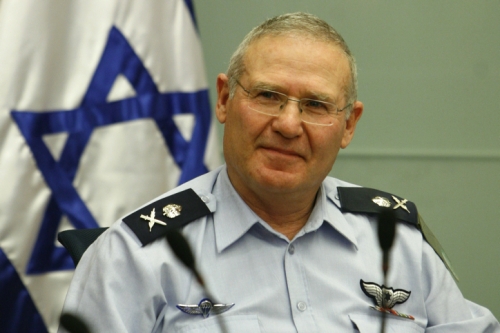
En 2007, le directeur du renseignement israélien, Amos Yadlin (photo), a déclaré à l'ambassadeur des États-Unis en Israël, Richard Jones, qu'"Israël serait "heureux" si le Hamas prenait le contrôle de Gaza parce que les forces de défense israéliennes pourraient alors traiter Gaza comme un État hostile", selon un câble diplomatique du représentant américain déclassifié par Wikileaks.
Lors de la réunion, M. Yadlin a rejeté l'importance du rôle de l'Iran dans une bande de Gaza contrôlée par le Hamas "tant qu'elle n'a pas de port".
Le Hamas avait alors remporté les élections législatives et s'était constitué en gouvernement à Gaza. Israël, ainsi que les États-Unis et d'autres gouvernements du monde, ont gelé les fonds envoyés à l'administration palestinienne en raison de la non-reconnaissance de l'État d'Israël par le Hamas.
Un an plus tard, le gouvernement Netanyahou a lancé l'opération "Plomb durci" pour "empêcher les tirs de roquettes" en provenance de Gaza. Les dirigeants du Hamas ont également été pris pour cible, ce qui a entraîné la mort de 1400 Palestiniens.
Ce fut le prétexte pour durcir les conditions dans la bande de Gaza avec des points de contrôle et des politiques de ségrégation, décrites par Amnesty International comme un "régime d'apartheid" qui vise "l'oppression et la domination systématiques d'un groupe racial sur un autre avec l'intention de maintenir ce système".
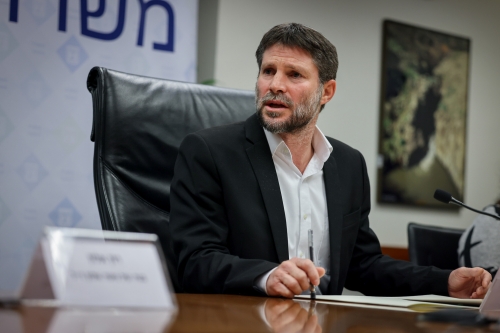
Pour Bezalel Smotrich, ministre des finances de Netanyahou et membre du Parti sioniste religieux, la partition de la Palestine en deux permettrait l'annexion de la Cisjordanie et l'expansion rapide des colonies juives sionistes qui s'y trouvent. "Une fois qu'Israël aura déclaré son intention de ne jamais quitter cette terre et aura créé des réalités sur le terrain qui rendent le retrait inimaginable, les Palestiniens se réconcilieront avec la nouvelle réalité: soit ils accepteront une forme de citoyenneté de seconde classe, soit ils partiront volontairement, soit ils tenteront des actes violents de résistance et seront écrasés".
En tant que ministre, M. Smotrich a mis à profit son passage au cabinet de M. Netanyahou pour tenter de mettre en œuvre ce plan, en œuvrant à la fois à l'annexion de facto de la Cisjordanie et à l'expansion rapide des colonies de peuplement juives. Des groupes extrémistes ont d'ailleurs commencé à assiéger certains lieux saints de l'islam, comme la mosquée Al-Aqsa, et à étendre leur occupation.
La clé d'une telle victoire totale d'Israël, écrit-il, est simple: briser l'esprit des Palestiniens.
En effet, pour l'organisation d'anciens combattants israéliens Breaking the Silence, l'une des raisons du succès de l'attaque du Hamas est que peu de soldats gardaient les postes frontières israéliens près de Gaza parce qu'ils protégeaient les colons qui avançaient leurs pions en Cisjordanie.
Mais y a-t-il d'autres raisons qui expliquent le lien entre les dirigeants israéliens et la montée en puissance du Hamas ?
Lorsque le Hamas, acronyme de Harakat al-Muqawama al-Islamiya ("Mouvement de résistance islamique"), a débarqué à Gaza, il a été aidé par Tel-Aviv, selon le général israélien Yitzhak Segev, gouverneur de Gaza à la fin des années 1970.

En 1979, les autorités israéliennes ont officiellement autorisé le cheikh Ahmed Yasin (photo), fondateur du mouvement, à créer l'organisation Mujama al-Islamiya, prédécesseur caritatif du Hamas. Il a également été autorisé à développer l'université islamique de Gaza, où la plupart des dirigeants du Hamas ont été formés.
L'organisation, issue des Frères musulmans égyptiens, a inscrit dans sa charte l'objectif d'un État islamique en Palestine et la destruction de l'État d'Israël. Elle professe également une vision salafiste et fondamentaliste de l'islam.
Au cours de ses premières années à Gaza, "le gouvernement israélien lui a donné de l'argent pour soutenir ses mosquées", a déclaré le général israélien Segev au New York Times. Avner Cohen, responsable israélien des affaires religieuses à Gaza jusqu'en 1994, a déclaré au Wall Street Journal que "le Hamas, à son grand regret, avait été une création d'Israël. Une erreur énorme et stupide".
Quel était le but recherché ? Affaiblir l'Organisation de libération de la Palestine, dirigée par Yasser Arafat, qui, dans les années 1980, était la plus grande organisation palestinienne et proposait un État palestinien laïc et séculier, contraire aux intérêts et à la vision du Hamas.
Dans le cadre de ce conflit sur le leadership palestinien, le Hamas a éclaté en tant que mouvement lors de la première intifada en 1987, appelée "révolte des pierres", contre l'occupation israélienne de la bande de Gaza et de la Cisjordanie. Selon le général israélien Segev, au cours de ces années, il est resté en contact avec le chef religieux du Hamas jusqu'en 1989, lorsque l'organisation a tué deux soldats israéliens, "une action qui a conduit à la condamnation à vie du religieux et à la déportation de près de 400 dirigeants du groupe au Liban", selon le quotidien espagnol El Mundo.
Dans les années 1990, l'organisation a commencé à commettre des attentats à la bombe pour lutter contre l'occupation israélienne et saboter les accords d'Oslo de 1993 signés par Yasser Arafat et le Premier ministre israélien Itzhac Rabin. Le Hamas et le Likoud de Netanyahou se sont opposés à la création de deux États, une décision approuvée par plusieurs résolutions des Nations unies.
Des attentats à la bombe du Hamas et des attaques de colons israéliens ont tenté de torpiller l'accord d'Oslo. Rabin a été assassiné par Yigal Amir, un extrémiste israélien, lors d'un événement public le 4 novembre 1995. Après des élections, Benjamin Netanyahou devient premier ministre et enterre les accords d'Oslo en accusant les Palestiniens de les avoir reniés.
Pour les sociologues Lucía Carbone et Flavia Fanello, "du côté israélien, les attentats suicides perpétrés par le groupe islamiste Hamas favorisent sa politique répressive et le positionnent comme un interlocuteur fort, seul capable de mener des négociations sans faire d'autres concessions que celles nécessaires au maintien de son statut de puissance dominante sur les Palestiniens. Du côté du Hamas, ces positions renforcent et justifient ses actions car, à mesure que l'OLP est affaiblie suite aux négociations de paix et que les politiques répressives d'Israël augmentent, son rôle en tant que seul mouvement de résistance à l'invasion sioniste devient plus plausible.
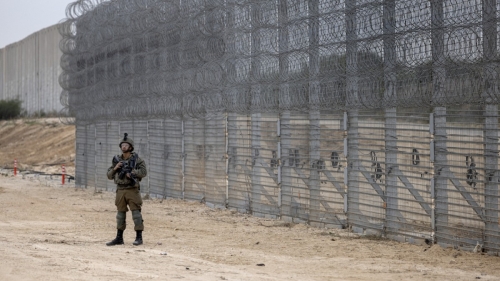
Le rôle de premier plan joué par le Hamas lors de la deuxième Intifada (Al-Aqsa), avec des attaques et des attentats suicides, a par exemple justifié la décision du gouvernement de durcir la politique de blocus et de murs autour de la Cisjordanie, selon l'expert en relations internationales Jesús López Almejo dans son article intitulé "Hamas between terrorist tactics and the political path" (Le Hamas entre les tactiques terroristes et la voie politique).
Cette politique était officiellement justifiée en termes de sécurité et de protection de la population israélienne contre le terrorisme palestinien", explique Jesús López Almejo, expert en relations internationales. Selon Jaime Saura Estapá, le tracé du mur a été conçu pour modifier la composition démographique de la population palestinienne, y compris Jérusalem-Est, en renforçant les colonies israéliennes qui, en vertu du droit international, ont été illégalement établies dans les territoires palestiniens, divisant la Cisjordanie en deux moitiés et la laissant sans continuité territoriale".
La montée en puissance du Hamas à Gaza a permis au gouvernement de Benjamin Netanyahu de durcir et de consolider le régime d'apartheid dans les territoires reconnus par la communauté internationale comme faisant partie de l'Etat palestinien.
Pour Alon Pinkas, du quotidien israélien Haaretz, l'attaque du Hamas, la plus importante contre Israël depuis 50 ans, s'est retournée contre l'idée que "Tel-Aviv pouvait effectivement renforcer le Hamas pour affaiblir l'Autorité palestinienne et rendre toute solution à deux États irréalisable".
Selon les propres termes de M. Netanyahou, "quiconque veut contrecarrer la création d'un État palestinien doit soutenir le renforcement du Hamas et le transfert d'argent au Hamas. Cela fait partie de notre stratégie: isoler les Palestiniens de Gaza des Palestiniens de Cisjordanie". Un régime d'apartheid palestinien serait le moyen idéal d'y parvenir.
Pour Zack Beauchamp, correspondant au Moyen-Orient pour le média américain Vox : "Netanyahou aurait considéré le pouvoir du Hamas à Gaza comme une sorte d'atout. Tant que les Palestiniens resteront divisés entre eux (le Hamas à Gaza et le Fatah modéré en Cisjordanie), un accord de paix sera probablement impossible : un règlement négocié ne peut être obtenu sans un partenaire de négociation unifié. Selon ce raisonnement, la menace terroriste posée par le Hamas peut être gérée; un blocus sans fin et des opérations militaires périodiques peuvent maintenir le danger posé par le Hamas dans des "paramètres acceptables".
Son allié tactique vient de lui infliger l'un des plus grands coups politico-militaires de son histoire. Et il pourrait proposer d'entrer dans Gaza pour entamer une guerre d'usure sur d'autres fronts par l'intermédiaire de ses alliés en Syrie, au Liban, au Yémen et en Iran. Il pourrait s'agir d'une menace existentielle pour Israël.
Le feu avec lequel Netanyahou a joué pendant de nombreuses années pourrait mettre fin à son rêve d'imposer l'État d'Israël au peuple palestinien.
*Bruno Sgarzini est journaliste international.
19:49 Publié dans Actualité | Lien permanent | Commentaires (0) | Tags : actualité, hamas, israël, palestine, proche-orient, levant |  |
|  del.icio.us |
del.icio.us |  |
|  Digg |
Digg | ![]() Facebook
Facebook
Les services de renseignement égyptiens affirment qu'Israël a ignoré les avertissements répétés concernant une attaque du Hamas

Les services de renseignement égyptiens affirment qu'Israël a ignoré les avertissements répétés concernant une attaque du Hamas
Source: https://noticiasholisticas.com.ar/inteligencia-egipcia-af...
Les questions de plus en plus nombreuses concernant l'incapacité des services de renseignement israéliens à anticiper et à se préparer à une attaque surprise du Hamas ont été aggravées lundi lorsqu'un responsable des services de renseignement égyptiens a déclaré que Jérusalem avait ignoré les avertissements répétés selon lesquels le groupe basé à Gaza préparait "quelque chose d'important", y compris, apparemment, une action directe. Le ministre des renseignements du Caire avait prévenu le premier ministre israélien.
Le responsable égyptien a déclaré que l'Égypte, qui joue souvent le rôle de médiateur entre Israël et le Hamas, avait parlé à plusieurs reprises aux Israéliens de "quelque chose d'important" et a ajouté que les responsables israéliens se concentraient sur la Cisjordanie et minimisaient la menace de Gaza. Le gouvernement du Premier ministre Benjamin Netanyahu est composé de partisans des colons de Cisjordanie qui ont exigé des mesures de sécurité face à la montée de la violence au cours des 18 derniers mois.
"Nous les avons prévenus qu'une explosion de la situation allait se produire, très bientôt, et qu'elle serait de grande ampleur. Mais ils ont sous-estimé ces avertissements", a déclaré à l'Associated Press le fonctionnaire, qui a parlé sous le couvert de l'anonymat parce qu'il n'était pas autorisé à discuter avec les médias du contenu des conversations sensibles des services de renseignement, ajoute le Times of Israel.
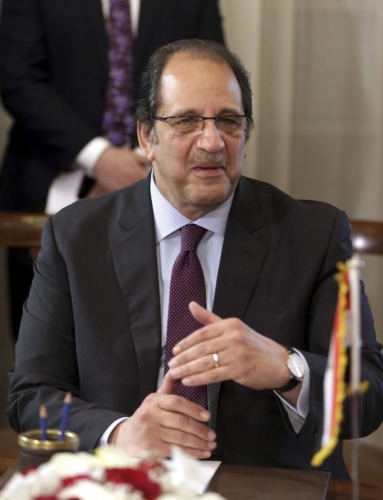
Dans l'un de ces avertissements, le ministre égyptien du renseignement, le général Abbas Kamel (photo), a personnellement appelé Netanyahou dix jours seulement avant l'attaque massive, déclarant que les habitants de Gaza étaient susceptibles de faire "quelque chose d'inhabituel, une opération terrible", selon le site d'information Ynet.
Des responsables égyptiens anonymes ont déclaré au site qu'ils avaient été choqués par l'indifférence de M. Netanyahou à l'égard de la nouvelle et que le Premier ministre lui avait dit que l'armée était "immergée" dans les problèmes de la Cisjordanie.
Le bureau du Premier ministre a démenti ces informations dans une déclaration lundi. Cependant, Israël ne s'est pas contenté d'ignorer les avertissements clairs de ses alliés.
Pour les Palestiniens de Gaza, les yeux d'Israël ne sont jamais très loin. Des drones de surveillance bourdonnent constamment dans le ciel. La frontière, hautement sécurisée, est jalonnée de caméras de sécurité et de soldats en faction. Les agences de renseignement utilisent des sources et des capacités cybernétiques pour extraire des informations.
Mais les yeux d'Israël semblent avoir été fermés lors de la préparation de l'attaque surprise du Hamas.
"Il s'agit d'un échec cuisant", a déclaré Yaakov Amidror, ancien conseiller à la sécurité nationale du Premier ministre Benjamin Netanyahu. "Cette opération prouve en fait que les capacités [de renseignement] à Gaza n'étaient pas bonnes". M. Amidror n'a pas voulu donner d'explication à cet échec et a déclaré qu'il faudrait en tirer les leçons une fois que la poussière sera retombée.

Amir Avivi (photo), un général israélien à la retraite, a déclaré qu'en l'absence d'un point d'appui à l'intérieur de Gaza, les services de sécurité israéliens en sont venus à s'appuyer de plus en plus sur des moyens technologiques pour recueillir des renseignements. Selon lui, les groupes de Gaza ont trouvé des moyens d'échapper à cette collecte de renseignements technologiques, ce qui donne à Israël une image incomplète de leurs intentions.
"L'autre partie a appris à faire face à notre domination technologique et a cessé d'utiliser des technologies susceptibles de l'exposer", a déclaré M. Avivi, qui a servi d'intermédiaire pour la transmission de renseignements sous l'autorité d'un ancien chef d'état-major de l'armée. M. Avivi est président et fondateur du Forum israélien de sécurité et de défense, un groupe d'anciens commandants militaires partisans d'une ligne dure.
"Ils sont revenus à l'âge de pierre", a-t-il déclaré, expliquant qu'ils n'utilisaient ni téléphone ni ordinateur et qu'ils menaient leurs affaires sensibles dans des pièces spécialement protégées contre l'espionnage technologique.
Mais M. Avivi a déclaré que l'échec allait au-delà de la simple collecte de renseignements et que les services de sécurité israéliens n'avaient pas réussi à se faire une idée précise des renseignements qu'ils recevaient, sur la base de ce qu'il a qualifié d'idée fausse sur les intentions du Hamas.
"En pratique, des centaines, voire des milliers d'hommes du Hamas se préparaient depuis des mois à une attaque surprise, sans que cela n'ait filtré", a écrit Amos Harel, commentateur des questions de défense, dans le quotidien Haaretz. "Les résultats sont catastrophiques".
Israël a également été troublé et déchiré par le projet de réforme judiciaire de M. Netanyahou. M. Netanyahou a reçu des avertissements répétés de ses chefs de la défense, ainsi que de plusieurs anciens dirigeants des agences de renseignement du pays, selon lesquels ce plan de division sapait la cohésion des services de sécurité du pays.
Martin Indyk, envoyé spécial pour les négociations israélo-palestiniennes sous l'administration Obama, a déclaré que les divisions internes concernant les changements juridiques étaient un facteur aggravant qui avait contribué à prendre les Israéliens par surprise.
19:28 Publié dans Actualité | Lien permanent | Commentaires (0) | Tags : actualité, israël, égypte, hamas, gaza |  |
|  del.icio.us |
del.icio.us |  |
|  Digg |
Digg | ![]() Facebook
Facebook
vendredi, 13 octobre 2023
Géopolitique de l'énergie: les conséquences de l'implication de l'Iran dans le conflit israélo-palestinien

Géopolitique de l'énergie: les conséquences de l'implication de l'Iran dans le conflit israélo-palestinien
Fabrizio Verde
Source: https://www.lantidiplomatico.it/dettnews-geopolitica_dellenergia_le_conseguenze_del_coinvolgimento_delliran_nel_conflitto_israelopalestinese/5871_51217/
Bien qu'Israël ne soit pas un pays producteur de pétrole et qu'il n'y ait pas de grandes infrastructures pétrolières internationales près de la bande de Gaza ou du sud d'Israël, le dicton selon lequel "Moïse a conduit les Juifs au seul endroit de tout le Moyen-Orient où il n'y a pas de pétrole" est bien connu. Toutefois, l'éclatement de conflits dans la région a des répercussions sur la stabilité du marché mondial du pétrole. Cela est dû à deux raisons principales: tout d'abord, les marchés mondiaux de l'énergie réagissent négativement aux troubles au Moyen-Orient, car la région contribue à environ un tiers de la production mondiale de pétrole. Ensuite, les actions militaires en Israël et dans les territoires palestiniens ont ajouté du stress à une économie mondiale et à un système financier déjà en difficulté. L'effet initial a été modéré et les investisseurs sont préoccupés par d'autres questions tout aussi urgentes. Toutefois, si les actions militaires se poursuivent ou s'intensifient, l'impact sur les marchés pourrait être énorme - et cela ne s'applique pas seulement au prix du pétrole, qui est évident pour tout le monde.
Un exemple peut être trouvé dans la guerre dite du "Jugement dernier" (Yom Kippour) de 1973, l'événement géopolitique le plus perturbateur pour l'économie mondiale et les marchés financiers de toute la période de l'après-guerre. La principale conséquence de l'affrontement israélo-arabe qui a suivi a été la multiplication par deux et demi du prix du pétrole en raison de l'embargo imposé par les pays de l'OPEP sur la fourniture d'or noir aux pays soutenant Israël. La crise pétrolière qui en a résulté a eu des conséquences considérables non seulement à l'époque, mais aussi pour les décennies à venir.
Aujourd'hui, les marchés mondiaux de l'énergie reflètent surtout une forte inquiétude quant à l'implication potentielle de l'Iran dans le conflit. Il est possible que les prix augmentent "non pas tant parce que le conflit affecte actuellement l'approvisionnement en pétrole, mais parce que l'on craint que le conflit n'attire d'autres acteurs tels que l'Iran, qui a soutenu le Hamas", a déclaré l'expert Andy Lipow, responsable du département Énergie de la société de conseil Lipow Oil Associates.
Le Congrès fait pression sur l'administration Biden pour qu'elle prenne des mesures drastiques contre Téhéran. "Ces attaques renforcent la nécessité d'une politique plus agressive à l'égard de l'Iran et de ses dirigeants", a insisté samedi le sénateur Jim Risch, principal animateur républicain de la commission sénatoriale des affaires étrangères.
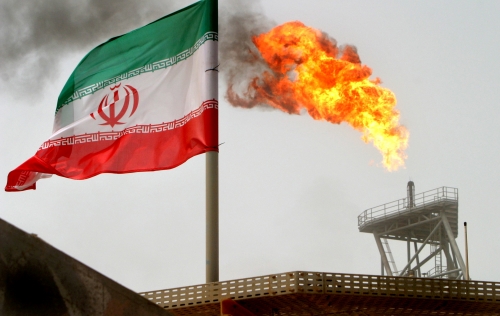
Le rôle clé de l'Iran sur les marchés de l'énergie
L'Iran a fait un retour en force sur les marchés pétroliers mondiaux au cours de l'année écoulée, avec une production et des exportations en forte croissance. Selon l'Agence internationale de l'énergie, la production iranienne de pétrole brut a augmenté de 600.000 barils par jour au cours des huit premiers mois de 2023, ce qui en fait la deuxième source de croissance de l'offre mondiale en 2023, juste derrière les États-Unis. En août, la production iranienne a atteint 3,14 millions de barils par jour, le niveau le plus élevé depuis 2018, lorsque l'administration Trump a abandonné l'accord sur le nucléaire iranien, officiellement connu sous le nom de Plan global d'action conjoint (PGAC), et a rétabli les sanctions américaines sur le pétrole iranien. Les exportations de pétrole brut de l'Iran ont augmenté pour atteindre 1,9 million de barils par jour, selon Kepler, dont 80% à destination de la Chine.
Les mesures de Trump avaient réduit la production et les exportations de pétrole iranien à leur niveau le plus bas depuis 30 ans. Mais depuis 2022, l'administration Biden a fermé les yeux sur ses propres sanctions et a mis en veilleuse certaines mesures visant à empêcher les expéditions de pétrole iranien. La réduction de la pression américaine a été faite pour faciliter les négociations qui ont abouti à la libération de cinq citoyens américains détenus en Iran et, surtout, pour augmenter la liquidité du marché mondial du pétrole dans le contexte de la guerre en Ukraine et des sanctions sur le pétrole russe.
Implication de l'Iran dans le conflit contre Israël
L'implication possible de l'Iran dans l'attaque du Hamas contre Israël pourrait pousser les États-Unis à réintroduire leurs sanctions contre Téhéran, réduisant ainsi de manière significative ses exportations de pétrole. Les prix du pétrole pourraient alors atteindre 100 dollars le baril, voire plus, ce qui alimenterait l'inflation et compliquerait encore les efforts des banques centrales pour la contrôler. Il convient toutefois de noter que l'Arabie saoudite et les Émirats arabes unis disposent d'une importante capacité de production de pétrole et pourraient augmenter leur production s'ils le souhaitaient.

Le détroit d'Ormuz
Les marchés mondiaux de l'énergie craignent également que l'implication potentielle de l'Iran ne déclenche une instabilité dans le détroit d'Ormuz, le point de passage énergétique le plus important au monde. Chaque jour, un cinquième de l'approvisionnement mondial en pétrole et un quart du commerce mondial de gaz naturel liquéfié (GNL) passent par cette voie maritime entre Oman et l'Iran.
Toute interruption du transit, même pour quelques jours, aurait des conséquences importantes sur les prix mondiaux du pétrole et du gaz. De même, les répercussions des actes de sabotage contre les infrastructures pétrolières et gazières dans la région du Moyen-Orient et de l'Afrique du Nord seraient considérables. Bien qu'ils ne soient pas nécessairement tangibles à l'heure actuelle, ces risques sécuritaires doivent être soigneusement évalués et gérés par les gouvernements, à commencer par ceux de l'Europe.
Le point de vue des experts
Les experts soulignent que l'Iran, avec son rôle clé sur les marchés mondiaux de l'énergie et sa production croissante de pétrole, est un acteur essentiel de la dynamique des prix du pétrole. L'implication potentielle de l'Iran dans le conflit israélo-palestinien pourrait déstabiliser davantage le marché pétrolier, entraînant une hausse des prix et une incertitude économique. Il convient de noter que les pays importateurs et les investisseurs réagissent aux attentes de hausse des prix, ce qui pourrait intensifier la tendance sur les marchés mondiaux de l'énergie.
En outre, la crainte de perturbations dans le détroit d'Ormuz est une réelle préoccupation pour les marchés de l'énergie. Toute interférence ou instabilité dans cette voie de transit essentielle pourrait avoir un impact significatif sur l'approvisionnement mondial en pétrole et en gaz, avec des conséquences directes sur les prix. Par conséquent, les implications de l'implication potentielle de l'Iran dans le conflit israélo-palestinien vont bien au-delà du niveau géopolitique.
Israël et la Palestine ne sont pas des fournisseurs directs de pétrole, mais ils se trouvent dans une région où des problèmes énergétiques peuvent rapidement apparaître. Selon le Russe Dmitry Zhuravlev, directeur général de l'Institut des problèmes régionaux et politologue, le conflit en cours au Moyen-Orient a déjà provoqué une augmentation des coûts de transport. Cela est principalement dû à l'augmentation automatique des taux d'assurance dans les situations de conflit. M. Zhuravlev explique à aif.ru: "Quelle que soit la distance entre le champ de bataille et une plate-forme pétrolière, un conflit militaire entraîne automatiquement une augmentation des tarifs d'assurance. Le Royaume-Uni est le plus grand assureur maritime au monde, et cela concerne jusqu'à 80% des tarifs".
Une autre raison de la hausse des prix est liée aux attentes. Zhuravlev souligne: "L'économie moderne est basée sur les attentes. Lorsque les gens s'attendent à ce que le prix des biens augmente, ils les achètent de manière agressive. Cette augmentation de la demande est à l'origine de l'augmentation réelle des prix. Dans le cas présent, la guerre a créé des anticipations d'augmentation des prix, incitant de nombreuses personnes à acheter des contrats à terme sur le pétrole et le gaz, même si elles n'ont pas l'intention de les recevoir. Ce comportement contribuera à de nouvelles hausses de prix".
Comme nous l'avons vu, l'Iran joue un rôle clé en tant que l'une des principales plaques tournantes du pétrole et du gaz dans le monde. Les craintes concernant l'implication de l'Iran dans le conflit ont déjà entraîné une hausse des prix des ressources énergétiques.
Igor Yushkov, analyste russe au National Energy Security Fund, prévient : "Si un conflit direct entre Israël et l'Iran se produit, nous nous attendons à une réduction des exportations de pétrole iranien, dont la majeure partie est destinée à la Chine. La production et les exportations de pétrole iranien ont augmenté ces dernières années. Par conséquent, toute perturbation aurait un impact significatif sur le marché. Aujourd'hui déjà, nous assistons à une pénurie. Même une petite perturbation de l'offre pourrait faire grimper les prix et affecter tous les pays consommateurs".
Malgré ces inquiétudes, M. Yushkov estime qu'il ne faut pas s'attendre à une répétition de la crise énergétique de 1973. Au cours de cette crise, les pays arabes avaient interrompu l'approvisionnement en pétrole des nations qui avaient soutenu Israël dans la guerre, notamment les États-Unis, l'Europe et le Japon. "Aujourd'hui, il semble peu probable que cela se produise, compte tenu de la consolidation des pays arabes. Si le conflit devait s'aggraver, il pourrait affecter les producteurs de pétrole en réduisant les exportations, mais pour l'instant, il semble que les restrictions affectent principalement le marché du gaz. Récemment, Israël a suspendu la production de gaz pour Chevron, et même avant cela, la demande de gaz en Europe était élevée, avec des prix dépassant les 100 dollars les 1000 mètres cubes. Par conséquent, le secteur pétrolier est potentiellement plus vulnérable, mais jusqu'à présent, les restrictions concernent le marché du gaz".
Conclusions
En conclusion, l'implication potentielle de l'Iran dans le conflit israélo-palestinien est une variable critique pour l'équilibre des marchés mondiaux de l'énergie. L'Iran, avec son importante production de pétrole et de gaz, joue un rôle clé dans le paysage énergétique mondial, et toute perturbation de ses exportations pourrait déclencher une hausse des prix des ressources énergétiques.
Cette situation suscite des inquiétudes légitimes, en particulier pour l'Europe, qui a déjà beaucoup souffert des sanctions imposées aux ressources énergétiques bon marché de la Russie. La région européenne a été mise à genoux par ces sanctions, qui ont gravement affecté l'approvisionnement en gaz naturel et en pétrole. Une nouvelle hausse des prix des ressources énergétiques, résultant d'une éventuelle escalade du conflit au Moyen-Orient et de l'instabilité en mer d'Arabie, pourrait porter un coup encore plus dur aux économies déjà épuisées de l'Europe.
En bref, l'Europe est à nouveau confrontée à un risque sérieux, qui découle en partie des événements géopolitiques au Moyen-Orient et en partie des conséquences des politiques impérialistes des soi-disant "alliés".
19:32 Publié dans Actualité | Lien permanent | Commentaires (0) | Tags : pétrole, hydrocarbures, actualité, iran, détroit d'ormuz, israël, palestine, énergie, énergie fossile |  |
|  del.icio.us |
del.icio.us |  |
|  Digg |
Digg | ![]() Facebook
Facebook
jeudi, 12 octobre 2023
Le nouveau front de guerre sera-t-il le dernier?

Le nouveau front de guerre sera-t-il le dernier?
par Luciano Lago
Source: https://www.controinformazione.info/il-nuovo-fronte-di-gu...
Le nouveau front de guerre qui s'est ouvert entre Israël et la Palestine pourrait être le dernier, le définitif, qui pourrait inopinément conduire le monde vers une troisième guerre mondiale
On ne voit pas comment les services de renseignement israéliens ont pu être pris par surprise par l'attaque du Hamas et d'autres groupes palestiniens à partir de Gaza. Il n'est pas explicable que les services de renseignement israéliens (ceux qui connaissent même les repaires les plus cachés des dirigeants du Hamas) n'aient pas su que des armes américaines et occidentales en provenance d'Ukraine et d'Afghanistan étaient stockées à Gaza, notamment des missiles et des roquettes antichars, des drones et des radars portables.
D'autre part, il est tout à fait concevable que, dans l'action menée par la résistance palestinienne, il y ait la main d'acteurs extérieurs, qui peuvent être l'Iran et, de manière directe, la Russie, qui ont tous deux des comptes à régler avec le gouvernement de Tel-Aviv.
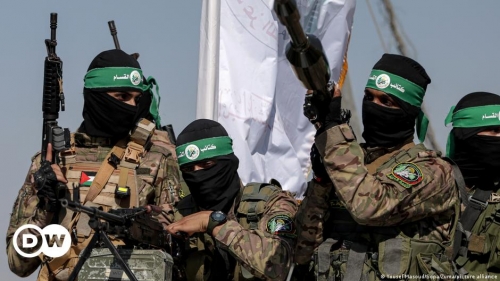
L'Iran doit se venger de toutes les frappes aériennes menées par Israël contre les forces iraniennes en Syrie au cours des deux dernières années, ainsi que de l'assassinat de scientifiques iraniens et du général Soleimani (qui a été assassiné par les États-Unis sur ordre d'Israël). En contrepartie, l'Iran a fourni des armes, des formations et des technologies de pointe à des groupes palestiniens.
La Russie a un compte ouvert avec Israël pour son aide à l'Ukraine, pour ses raids en Syrie contre des cibles russes et syriennes, pour le rôle d'Israël dans le soutien à l'Azerbaïdjan, l'envoi d'armes et de renseignements dans la guerre contre l'Arménie et la facilitation de la conquête du Haut-Karabakh.
Pour toutes ces situations, on peut imaginer qu'Israël (sur ordre de Netanyahou) a laissé une ouverture non gardée pour permettre l'attaque du Hamas, même s'il n'a pas prévu l'ampleur du massacre de soldats et de civils israéliens qui s'en est suivi (environ un millier de morts et des milliers de blessés).
De son côté, le front nord du Liban risque lui aussi d'exploser, le Hezbollah ayant neutralisé les bases de radars à la frontière et préparant ses forces de missiles à frapper le territoire israélien. Et ce, alors qu'Israël a déjà commencé à bombarder la zone frontalière du Liban.
Ce qui s'est passé, c'est que le gouvernement de Netanyahou a décrété l'état de guerre et se prépare à raser Gaza et, avec l'aide des États-Unis, à mener des représailles contre l'Iran.
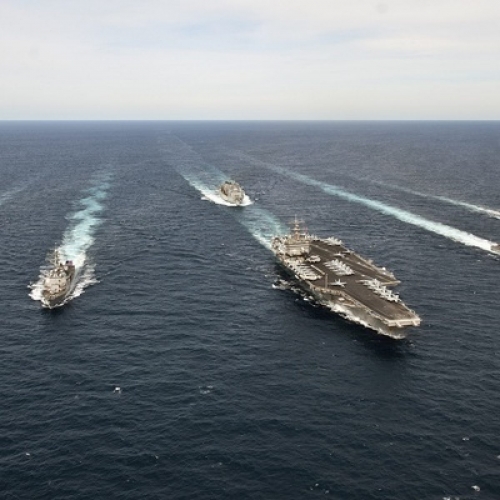
Les porte-avions et les groupes de frappe navals américains ne se rendent pas en Méditerranée pour attaquer le Hamas, mais pour frapper l'Iran, probablement les sites pétroliers et industriels de ce pays. Netanyahou essaie depuis longtemps de convaincre Washington d'attaquer l'Iran, il en a maintenant l'occasion et le prétexte.
Israël est prêt à utiliser ses armes nucléaires contre l'Iran. Netanyahou a demandé à Biden et à Blinken de lui laisser les mains libres sur l'Iran et de lui fournir de l'aide.
Selon des sources confidentielles, l'ambassadeur d'Israël à Moscou aurait averti le gouvernement russe que, puisqu'Israël considère l'Iran comme le principal responsable de l'attaque actuelle, Téhéran serait frappé avec des "bombes nucléaires stratégiques".
On ne sait pas quelle sera la réponse de la Russie, qui doit penser à défendre son allié et ses intérêts au Moyen-Orient.
Les forces ukrainiennes attaquées par la Russie
En attendant, l'issue de la guerre en Ukraine semble scellée par la défaite des forces ukrainiennes et de l'OTAN.
La persistance des États-Unis et de leurs satellites européens à mener une guerre par procuration contre la Russie a ouvert une fenêtre d'opportunité pour la résistance palestinienne. Alors que Washington est piégé dans un conflit par procuration qu'il a orchestré sans en mesurer les conséquences, l'offensive inattendue de la résistance sur le territoire israélien met en lumière la fragilité de l'État colonisateur et déstabilise l'axe impérialiste.
Dans le prochain épisode, nous assisterons à l'abandon de l'Ukraine par les États-Unis et au déclenchement probable des hostilités avec l'Iran, un fait qui affectera d'autres pays arabes et islamiques qui se mobiliseront pour défendre Jérusalem et la Palestine. Erdogan a déjà commencé à s'agiter et à exiger le retour d'Israël aux frontières de 1967.
Nous verrons si ces prédictions sont exactes, mais les conséquences seront certainement très négatives pour l'Europe, qui paiera le prix de son ignominie avec les effets des guerres dont elle a été complice, lorsque les prix du pétrole, du gaz et des matières premières monteront en flèche.
21:50 Publié dans Actualité, Affaires européennes | Lien permanent | Commentaires (1) | Tags : actualité, israël, palestine, hamas, proche-orient, levant, gaza, méditerranée, iran, ukraine, europe, affaires européennes |  |
|  del.icio.us |
del.icio.us |  |
|  Digg |
Digg | ![]() Facebook
Facebook
mardi, 10 octobre 2023
La guerre dans la bande de Gaza: un nouvel aliment pour la stratégie de sortie occidentale en Ukraine ?
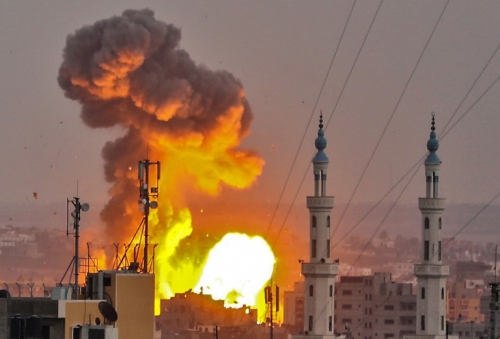
La guerre dans la bande de Gaza: un nouvel aliment pour la stratégie de sortie occidentale en Ukraine?
Source: https://zuerst.de/2023/10/09/krieg-im-gazastreifen-neue-nahrung-fuer-die-westliche-exit-strategie-in-der-ukraine/
Gaza/Tel Aviv. Sans que l'on s'y attende, un vieux foyer de conflit est redevenu "chaud" au Proche-Orient: dans la nuit de samedi à dimanche, le Hamas islamiste radical a ouvert des attaques surprises contre Israël et l'armée israélienne depuis la bande de Gaza. Les attaques contre un festival dans la vallée de Gibly, limitrophe d'Israël, auraient fait jusqu'à 700 morts israéliens. À moins de trois kilomètres de là, les forces militaires israéliennes ont également été prises pour cible. En quelques heures, des milliers de roquettes de petit et moyen calibre ont été tirées sur Israël. Le système de défense aérienne israélien "Dôme de fer" a ainsi été temporairement débordé et de nombreuses roquettes se sont abattues sur le territoire israélien.
Pendant ce temps, le gouvernement israélien a déclaré l'état de guerre et le gouvernement américain a déployé un groupe naval autour du porte-avions USS "Gerald R. Ford" en Méditerranée orientale.
Des sources gouvernementales israéliennes ont déclaré dans la journée de dimanche que la plupart des combattants du Hamas qui avaient pénétré en territoire israélien avaient été liquidés. Cependant, d'autres roquettes ont été tirées tout au long de la journée de dimanche. La suite de l'action israélienne est encore en discussion. Il n'est pas exclu qu'une contre-attaque israélienne soit lancée sur le territoire de la bande de Gaza, dans le but de porter un coup sévère au Hamas.
Un détail explosif : de nombreux missiles tirés sur Israël proviennent de stocks occidentaux destinés à l'Ukraine, mais détournés par des trafiquants d'armes. Depuis le début de la guerre en Ukraine, les experts en sécurité préviennent que les armes occidentales apparaîtront tôt ou tard dans d'autres conflits. Cette évolution pourrait également alimenter la stratégie occidentale de "sortie" en Ukraine. Ces jours-ci encore, l'ancien chef de la Commission européenne Jean-Claude Juncker avait rappelé l'ampleur de la corruption en Ukraine et mis en garde contre une perspective d'adhésion trop rapide de Kiev à l'UE. (mü)
Demandez ici un exemplaire de lecture gratuit du magazine d'information allemand ZUERST ! ou abonnez-vous ici dès aujourd'hui à la voix des intérêts allemands !
Suivez également ZUERST ! sur Telegram : https://t.me/s/deutschesnachrichtenmagazin
19:16 Publié dans Actualité | Lien permanent | Commentaires (0) | Tags : gaza, hamas, israël |  |
|  del.icio.us |
del.icio.us |  |
|  Digg |
Digg | ![]() Facebook
Facebook
La stratégie du Hamas

La stratégie du Hamas
Andrea Marcigliano
Source: https://electomagazine.it/la-strategia-di-hamas/
Qu'ont en tête les commandants du Hamas ? L'opération Tempête Al-Aqsa, lancée ces derniers jours et qui a pris de court les Israéliens, peut-elle être considérée comme un feu de paille, un énième accès de rage de ceux qui, au fond d'eux-mêmes, se sentent impuissants ? Au fond, une folle aventure militaire ?
Le premier à ne pas croire à une telle lecture est Benjamin Netanyahu. Il a immédiatement déclaré que ce qui se profile est une véritable guerre. Pas une simple opération anti-terroriste.
Comment lire cette déclaration ?
Qui ne sont d'ailleurs pas des paroles en l'air, puisque le gouvernement de Jérusalem a rendu active la "clause Aleph 40". C'est-à-dire qu'il a déclaré l'état de guerre sur l'ensemble du territoire. Ce qui n'a jamais été le cas pour les attentats ou l'Intifada. Ce qui signifie qu'ils ne s'attendent pas à une solution rapide du problème. Par essence, les représailles, aussi massives et dures soient-elles, ne suffiront pas.
Mais la question que nous devons nous poser est autre. Que vise le Hamas ? Ou plutôt quelle est sa stratégie ?
Tout d'abord, écartons les élucubrations inutiles sur une attaque improvisée au dernier moment, pour profiter des problèmes internes d'Israël. Certes, le moment a peut-être été saisi lorsque l'attention du gouvernement et de l'opinion publique était la plus distraite. Mais une attaque de cette ampleur ne s'improvise pas. Elle se prépare longuement et méticuleusement. Selon les experts militaires, depuis au moins un an.
De plus, l'offensive du Hamas semble n'être que la partie émergée de l'iceberg. Car immédiatement, le Hezbollah, au Liban, est lui aussi entré en action. Pour l'instant avec des tirs de roquettes contre le territoire israélien. Mais il mobilise ses forces en parallèle.
Regardons la carte. Le Hamas attaque depuis Gaza. Le Hezbollah se déplace depuis le Liban. Et puis, il y a la Syrie. Où les forces fidèles à Assad, massivement soutenues par le Hezbollah et les Iraniens, pourraient intervenir. Pour régler la facture des raids israéliens sur son territoire.
J'utilise le conditionnel, bien sûr. Car une éventuelle attaque également à partir du front syrien impliquerait aussi, d'une manière ou d'une autre, l'implication directe de Téhéran. Lequel est derrière le Hamas et, surtout, le Hezbollah.
Et cela signifierait le déclenchement d'un incendie dans tout le Moyen-Orient. Une guerre qui pourrait devenir la plus dévastatrice et la plus étendue que ces terres tourmentées aient jamais connue.
De plus, il y a le double problème représenté par le Qatar d'une part et l'Arabie Saoudite d'autre part.
Les Saoudiens détendent prudemment leurs relations avec Israël. En vue d'une pacification qui aurait été un pas beaucoup plus grand que celui, désormais ancien, avec l'Egypte. Une normalisation des relations qui, si elle n'est pas à archiver totalement, est devenue, en quelques heures, très, très lointaine. Car Riyad a immédiatement témoigné de sa solidarité avec le "peuple palestinien". Un choix obligatoire pour ne pas risquer de perdre son influence sur l'ensemble du monde arabe sunnite.
Plus complexe encore, peut-être, est la position du Qatar. Qui est, de notoriété publique, le principal bailleur de fonds du Hamas. Ainsi que la base sûre où se réfugie généralement la direction politique de l'organisation palestinienne. Mais l'émir est en même temps un proche allié de Washington. Et, en général, des pays occidentaux. Une sorte de "sentinelle" implantée au cœur du magmatique monde arabe. Qui a joué un rôle bien plus important que la taille de son propre pays dans les événements de ces décennies. Je me souviens, pour ne citer qu'un exemple, de l'importance du financement du Qatar dans le soulèvement libyen qui a renversé Kadhafi. Et que ce sont des parachutistes qataris qui ont capturé le colonel... pour le livrer aux Français... puis à son triste sort.
La position de la Turquie devient également problématique à ce stade. Erdogan cherche depuis longtemps à exercer une forte influence dans le monde arabe. On l'a vu en Libye, et de manière encore plus visible en Syrie. Mais aucune puissance qui souhaite exercer une quelconque influence sur les Arabes ne peut s'opposer aux Palestiniens. Ni même rester neutre face à l'éclatement, et surtout à l'extension, d'un conflit entre le monde arabe et Israël.
La disparité des forces entre Israël et le Hamas est évidente. Malgré l'effet de surprise, l'offensive lancée par les Palestiniens n'a aucune chance d'aboutir à un succès militaire durable.
Mais le raisonnement de ceux qui ont planifié cette offensive est beaucoup moins grossier.
Il s'agit d'un calcul politique. Un calcul qui pourrait s'avérer bien plus dangereux à terme que les éphémères succès militaires actuels.
Dangereux pour Israël. Et, plus encore, pour l'équilibre de toute la région.
18:47 Publié dans Actualité | Lien permanent | Commentaires (0) | Tags : hamas, actualité, politique internationale, gaza, israël, palestine |  |
|  del.icio.us |
del.icio.us |  |
|  Digg |
Digg | ![]() Facebook
Facebook
lundi, 09 octobre 2023
La tempête d'Al-Aqsa. Le Moyen-Orient est-il en train d'exploser ?

La tempête d'Al-Aqsa. Le Moyen-Orient est-il en train d'exploser?
Alexander Douguine
Source: https://www.geopolitika.ru/article/burya-al-aksy-blizhniy-vostok-vzorvan?fbclid=IwAR2PnE3f0uY7ev7H1AhhOKhA8pv43khx7DgpZQ5vqLeh3hlZPyfvRQqMH4U
Le 7 octobre 2023, le mouvement palestinien Hamas entame une action militaire contre Israël. Les villes israéliennes limitrophes de la bande de Gaza ont été attaquées. L'aile militaire du Hamas a affirmé avoir frappé plus de 50 positions militaires israéliennes. La branche militante du mouvement palestinien Hamas a publié une déclaration selon laquelle elle avait capturé quelque 35 militaires et colons israéliens lors d'une opération à l'intérieur d'Israël. Le ministre israélien de la défense a déclaré que le Hamas avait déclaré la guerre à son pays.
En réponse, l'armée israélienne a annoncé le lancement de l'opération "antiterroriste" "Iron Swords" dans la bande de Gaza. L'état d'urgence est imposé dans tout Israël.
Une escalade en Israël pourrait déclencher une réaction en chaîne. Les Palestiniens n'ont aucune chance dans une telle guerre, car ils ne peuvent pas détruire Israël ou lui infliger une défaite militaire significative.
Mais Israël n'a pas non plus de raison de se battre. La Palestine est techniquement un territoire israélien, qu'il ne contrôle pas et ne peut contrôler en aucune circonstance. Il est également impossible de détruire physiquement tous les Palestiniens.
Si la situation internationale était différente, les Palestiniens pourraient compter sur la compassion de la gauche internationale, mais les États-Unis sont dirigés par des néoconservateurs et des mondialistes. Ils ne se soucient certainement pas des Palestiniens. Bien qu'ils ne soient pas non plus très proches des politiques nationalistes d'Israël.
Mais c'est la réaction en chaîne - et surtout le comportement des États islamiques (principalement l'Iran, la Turquie, l'Arabie saoudite, les autres États du Golfe et l'Égypte) - qui pourrait en être la suite logique. C'est du moins ce que les stratèges du Hamas avaient peut-être à l'esprit lorsqu'ils ont décidé de déclencher le conflit.
La multipolarité se renforce, l'intensité de l'hégémonie occidentale dans le non-Ouest collectif s'affaiblit. Les alliés de l'Occident dans le monde islamique - surtout la Turquie et les Saoudiens - ne suivent pas automatiquement les moindres ordres de Washington. C'est dans cette situation que le pôle islamique, qui a récemment rejoint les BRICS par défi, passera son test.
Bien entendu, le conflit peut s'étendre à d'autres territoires. L'implication de l'Iran et du Hezbollah n'est pas à exclure, ce qui signifie le transfert potentiel des hostilités vers les territoires du Liban et de la Syrie. Et il y a suffisamment de Palestiniens en Israël même qui haïssent les Juifs d'une haine féroce. Tout cela pourrait avoir des conséquences imprévisibles.
À mon avis, les États-Unis et les mondialistes essaieront de tout éteindre maintenant, car ils ne peuvent rien tirer de bon d'une nouvelle escalade.
Une dernière chose : les analogies entre le séparatisme, l'irrédentisme, etc. dans différentes régions du monde ne sont plus valables. L'Occident reconnaît à la fois l'unité territoriale et le droit des nations à la sécession lorsqu'elle est avantageuse pour lui. Et il ne le reconnaît pas quand ce n'est pas avantageux. Il n'y a pas de règles. En fait, nous devrions traiter les choses de la même manière (c'est d'ailleurs ce que nous faisons). Ce qui nous est favorable est juste.
Dans le conflit israélo-palestinien, il est difficile - du moins pour l'instant - pour la Russie de choisir un seul camp. Dans toute configuration, il y a des avantages et des inconvénients. Les liens avec les Palestiniens sont anciens et ces derniers sont, bien sûr, des victimes. Mais le camp de la droite en Israël cherche également à mener une politique neutre et amicale à l'égard de la Russie. Ce faisant, il s'écarte de la russophobie sauvage et sans ambiguïté de l'Occident collectif.
Maintenant, beaucoup dépendra de la tournure que prendront les événements.
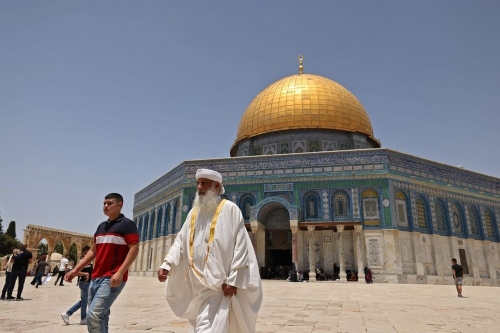
Et, bien sûr, nous ne devons pas perdre de vue la dimension eschatologique des événements. Les Palestiniens ont appelé leur opération "Tempête Al-Aqsa", c'est-à-dire que la tension autour de Jérusalem et les horizons messianiques (pour Israël) de l'érection du Troisième Temple sur le Mont du Temple (ce qui est impossible sans démolir la Mosquée Al-Aqsa, un important sanctuaire musulman) s'accroissent à nouveau. Les Palestiniens tentent d'enflammer la sensibilité eschatologique des musulmans, qu'il s'agisse des chiites, toujours plus sensibles à cette question, ou des sunnites (après tout, les motifs de la fin du monde et de la bataille finale ne leur sont pas étrangers). Israël et le sionisme sont le Dajjal pour les musulmans.
Nous verrons bientôt dans quelle mesure c'est sérieux. Mais en tout état de cause, il est clair que ceux qui ignorent l'eschatologie ne comprendront rien à la grande politique d'aujourd'hui. Et pas seulement au Moyen-Orient, même si c'est là que c'est le plus évident.
Entre-temps, le ministère des affaires étrangères du Qatar a déclaré qu'Israël était le seul responsable de l'escalade qui s'est produite en raison des violations constantes des droits des Palestiniens, et le Hezbollah a déclaré qu'il entrerait en guerre en cas d'opération terrestre israélienne dans la bande de Gaza. Et tout récemment, le Conseil de sécurité israélien a approuvé une opération terrestre dans la bande de Gaza.
La situation est grave en Palestine. Et c'est de plus en plus grave. Important : le soutien de l'Iran et du Qatar. L'arrogance de la Turquie à l'égard d'Israël. La volonté du Hezbollah d'ouvrir un second front. Et surtout, la durée et l'ampleur de la guerre. Un jour, c'est déjà beaucoup pour une situation aussi féroce. Et si elle se poursuit dans un avenir proche, elle s'étendra. Les Juifs d'Israël sont sur une poudrière depuis le début. L'État d'Israël lui-même existe parce qu'il y a espoir en le retour du Moshiach (du Messie). S'il n'est pas confirmé dans une situation critique, non seulement Israël s'effondrera, mais beaucoup d'autres choses s'effondreront. La tempête d'Al-Aqsa est-elle suffisamment bouleversante ? Cela reste à voir. L'attention a été détournée des terroristes nazis à Kiev. Il est temps pour nous d'agir.
Peut-être que le début de l'offensive audacieuse du Hamas contre Israël sera le cygne noir qui changera l'équilibre des forces dans le jeu mondial. Tout le monde est en partie à l'arrêt, et cette explosion soulage la tension. 50 ans après la guerre apocalyptique dite du "Yom Kippour". Cela fait également partie des Guerres de Jéhovah.
À propos des armes nucléaires d'Israël. Ce n'est pas du tout une panacée. Il peut les utiliser, mais où ira la mer d'Arabes en colère? La chose la plus importante est que les États-Unis ont échoué catégoriquement dans leur rôle de leader mondial. Il n'y a pas d'URSS. Personne, même s'il le voulait, ne peut dire aux Juifs et aux Arabes de se taire. Les libéraux de gauche de Soros n'ont rien trouvé de mieux à faire que de combattre les sionistes de droite en Israël. Puisque la guerre est déjà en cours et que tout le monde y meurt, il est normal qu'elle ne touche pas seulement les Slaves de l'Est, mais aussi tous les autres. Dans ce cas, les deux forces se battent pour l'impossible.
Imaginons qu'Israël et l'ensemble de l'Occident se lancent dans une guerre à grande échelle contre l'Islam. Mais il y a la Russie, la Chine, l'Inde, les BRICS. Et ils ne suivront pas l'Occident inconditionnellement. Ils agiront de leur propre chef. Et partout où la ligne est mince, il y aura une déchirure. Après le début de l'opération militaire spéciale, nous savons avec certitude où la frontière est mince. Et nous en tirons des conclusions. Maintenant, c'est au tour des autres.
PS : l'élite russe est un spectacle fantastique aujourd'hui. Un tiers d'entre eux sont des antisionistes qui se réjouissent du soulèvement palestinien. Un tiers est pro-sioniste, puisque la droite israélienne tolère Poutine et l'Opération militaire spéciale, enfin, en général (Kedmi, la distribution principale du spectacle de Solovyov). Ils se jettent dans la mêlée pour Israël. Un tiers des globalistes qui sont en faveur du CFR et de Biden, mais ce qu'ils disent et font n'est pas clair du tout. Après tout, Soros est contre Israël et ils sont pour Soros (en gros). Quelle ligne va l'emporter ? Peut-être, comme d'habitude, les trois en même temps.
17:04 Publié dans Actualité | Lien permanent | Commentaires (1) | Tags : israël, palestine, levant, proche-orient, politique internationale |  |
|  del.icio.us |
del.icio.us |  |
|  Digg |
Digg | ![]() Facebook
Facebook
Réactions internationales à la situation en Palestine et en Israël
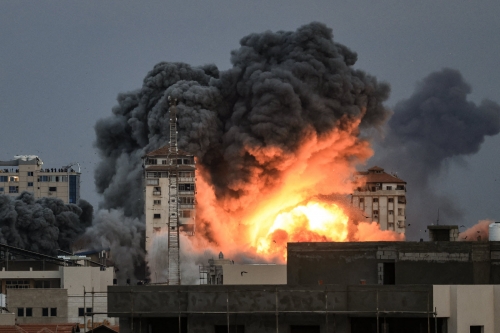
Réactions internationales à la situation en Palestine et en Israël
Source: https://www.sinistrainrete.info/articoli-brevi/26497-redazione-le-reazioni-internazionali-sulla-situazione-in-palestina-e-israele.html
Voici quelques-unes des réactions internationales à l'action militaire de la Résistance palestinienne en Israël. La communauté internationale ne se résume pas aux Etats-Unis et à l'Union européenne, et les réactions apparaissent assez différenciées.
La position du Hezbollah
Voici la réponse du chef du Hezbollah, Nasrallah, à l'appel à la résistance lancé par le Hamas, sous le nom de code "Inondation d'Al-Aqsa" :
"Le Hezbollah félicite le peuple palestinien qui résiste et les combattants héroïques des factions palestiniennes, en particulier nos chers frères des Brigades Al-Qassam et du Mouvement de la résistance islamique, le Hamas, pour l'opération héroïque de grande envergure et divinement soutenue qui promet une victoire complète.
"Cette opération triomphante est une réponse décisive aux crimes continus de l'occupation et aux violations continues des saints, des honneurs et des dignités.
"Elle confirme une nouvelle fois que la volonté du peuple palestinien et le fusil de la résistance sont le seul choix possible pour faire face à l'agression et à l'occupation.
"Il envoie un message au monde arabe et islamique et à la communauté internationale dans son ensemble, en particulier à ceux qui cherchent à normaliser leurs relations avec cet ennemi, que la cause palestinienne est éternelle et qu'elle est en passe de remporter la victoire et la libération.
"Nous appelons les peuples de notre nation arabe et islamique, et les peuples libres du monde entier, à déclarer leur soutien et leur appui au peuple palestinien et aux mouvements de résistance, en affirmant leur unité dans le sang, la parole et l'action.
"La direction de la Résistance islamique au Liban suit de près les développements significatifs sur la scène palestinienne, surveillant les conditions sur le terrain avec le plus grand intérêt. Ils sont en contact direct avec les dirigeants de la Résistance palestinienne, tant à l'intérieur qu'à l'extérieur du pays, et évaluent constamment les événements et le déroulement des opérations.
"Nous appelons donc le gouvernement de l'ennemi sioniste à comprendre les leçons importantes enseignées par la Résistance palestinienne sur le champ de bataille et dans les arènes de confrontation".

Position de l'Arabie saoudite
L'Arabie saoudite a appelé à un "arrêt immédiat de l'escalade" et a rappelé ses mises en garde répétées contre les dangers d'une "explosion de la situation due à la poursuite de l'occupation".
L'Arabie saoudite a appelé à un "arrêt immédiat de l'escalade du conflit entre les Palestiniens et Israël" à la suite de la grande opération militaire lancée par la Résistance palestinienne samedi.
Selon Arab News, le ministère saoudien des affaires étrangères a déclaré dans un communiqué qu'il "suivait de près l'évolution de la situation sans précédent entre un certain nombre de factions palestiniennes et les forces d'occupation israéliennes, qui a conduit à un niveau élevé de violence sur plusieurs fronts.
Nous rappelons nos avertissements répétés sur les dangers d'une explosion de la situation due à la poursuite de l'occupation", ajoute la déclaration.
Le ministre saoudien des affaires étrangères, le prince Faisal bin Farhan, s'est entretenu avec le secrétaire d'État américain Antony Blinken au sujet de l'escalade de la violence à Gaza et dans ses environs, selon le communiqué.
Le prince Faisal aurait souligné le "refus du royaume de prendre des civils pour cible et la nécessité pour toutes les parties de respecter le droit humanitaire international".
Position de l'Iran
Le ministre iranien des affaires étrangères, Amir-Abdollahian, a déclaré que "l'opération de résistance palestinienne est un mouvement spontané et le résultat des crimes incessants du régime sioniste contre la Palestine".
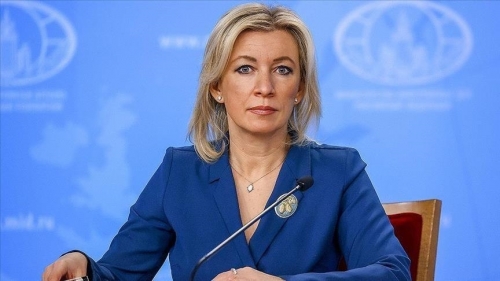
La Russie : Cessez le feu, négociez
C'est la position russe exprimée samedi par la porte-parole du ministère des affaires étrangères de Moscou, Maria Zakharova.
"Nous appelons les parties palestinienne et israélienne à cesser immédiatement le feu, à renoncer à la violence (et) à faire preuve de la retenue nécessaire", a-t-elle déclaré.
Mme Zakharova a appelé les parties à entamer "un processus de négociation visant à établir une paix globale, durable et attendue depuis longtemps, avec l'aide de la communauté internationale".
Le conflit de longue date entre Israël et la Palestine ne peut être résolu par la force, mais uniquement par des moyens diplomatiques", a ajouté Mme Zakharova.
La porte-parole du ministère des affaires étrangères a également rappelé que Moscou maintenait sa position en faveur de négociations "pour la création d'un État palestinien indépendant dans les frontières de 1967, avec Jérusalem-Est comme capitale, vivant en paix et en sécurité avec Israël".
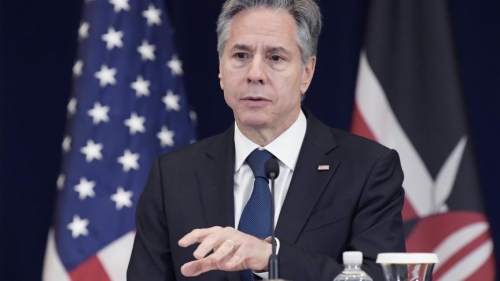
Les États-Unis soutiennent Israël
Voici l'une des déclarations publiées par le département d'État américain immédiatement après le début de la guerre :
"Les États-Unis condamnent sans équivoque les attaques effroyables menées par les terroristes du Hamas contre Israël, y compris contre des civils et des communautés civiles. "Le terrorisme n'est jamais justifié. Nous sommes solidaires du gouvernement et du peuple d'Israël et présentons nos condoléances pour les Israéliens qui ont perdu la vie dans ces attaques. "Nous resterons en contact étroit avec nos partenaires israéliens. Les États-Unis soutiennent le droit d'Israël à se défendre".
Pour sa part, le secrétaire d'État américain Antony Blinken a tweeté sur la plateforme de médias sociaux X : "Nous condamnons sans équivoque les attaques effroyables des terroristes du Hamas contre Israël" et "Nous sommes solidaires du gouvernement et du peuple d'Israël et présentons nos condoléances pour les vies israéliennes perdues dans ces attaques".
Le même sentiment a été exprimé par le président américain Joe Biden : "Les États-Unis condamnent sans équivoque cette attaque effroyable contre Israël par les terroristes du Hamas depuis Gaza, et j'ai clairement indiqué au Premier ministre Netanyahu que nous sommes prêts à offrir tous les moyens de soutien appropriés au gouvernement et au peuple d'Israël".
La position de la Chine
La Chine a appelé à un cessez-le-feu immédiat après que le Premier ministre israélien Benjamin Netanyahu a déclaré que son pays était "en guerre" à la suite d'une attaque surprise menée par des militants du Hamas, dans le cadre d'une escalade majeure du conflit qui oppose depuis des décennies les combattants palestiniens à l'armée israélienne.
Pékin est "profondément préoccupé par l'escalade actuelle de la tension et de la violence entre la Palestine et Israël", a déclaré dimanche le ministère chinois des affaires étrangères dans un communiqué.
"Toutes les parties concernées sont invitées à faire preuve de calme et de retenue, à cesser le feu immédiatement, à protéger la population civile et à empêcher que la situation ne se détériore davantage", a-t-il ajouté.
La position du gouvernement et des partis italiens
En tant que vice-premier ministre et ministre des affaires étrangères, M. Tajani a réitéré sa solidarité avec Israël. Le gouvernement, a déclaré le numéro un de la diplomatie italienne, condamne avec la plus grande fermeté les attaques contre Israël. La vie des gens, la sécurité de la région et la reprise de tout processus politique sont en danger. Le Hamas doit cesser immédiatement cette violence barbare. Nous soutenons le droit d'Israël à exister et à se défendre".
La Ligue a exprimé sa solidarité inconditionnelle avec Israël. "Tout mon soutien au peuple d'Israël, attaqué violemment et lâchement par des extrémistes islamiques", a commenté le vice-premier ministre Matteo Salvini.
La secrétaire du PD, Elly Schlein, a parlé de "notre condamnation claire et ferme de l'attaque terroriste du Hamas contre les civils israéliens avec des milliers de roquettes et de raids. Au nom du Parti démocrate, j'exprime mes plus sincères condoléances aux victimes de cette attaque ignoble. La communauté internationale doit immédiatement se mobiliser et intervenir pour mettre fin à cette agression et à cette escalade violente qui compromet les perspectives de dialogue et n'apporte que mort et destruction.
Solidarité avec le peuple et les institutions israéliennes pour la lourde attaque terroriste qu'ils ont subie", a déclaré Carlo Calenda, leader d'Azione, "Nous condamnons fermement l'acte criminel du Hamas : nous espérons que tous les moyens diplomatiques disponibles seront utilisés pour mettre fin à l'agression le plus rapidement possible.

La position du Front populaire de libération de la Palestine
C'est le moment de retrouver la nature de la lutte et la dignité de la nation arabe. Les rocs inébranlables des rangs de la résistance se sont unis pour répondre à l'appel de la Palestine, à l'appel d'Al-Quds et d'Al-Aqsa, dans lequel l'essence du conflit est redécouverte et l'honneur de la nation arabe est restauré. Ils sont déterminés à remporter une victoire stratégique sur l'ennemi dans une bataille qui ouvrira la porte du retour et redéfinira l'histoire de la Palestine et de la région.
Le Front populaire exhorte notre peuple héroïque à participer activement, dans toute la Palestine, à la bataille contre l'inondation d'Al-Aqsa. Chacun, de sa position et avec les moyens dont il dispose, doit attaquer l'armée ennemie et ses colons, couper ses lignes d'approvisionnement, saboter ses installations vitales, et poursuivre les envahisseurs sionistes terrorisés par les attaques de la résistance, en les frappant partout sur le sol palestinien.
Le Front souligne son appel à tous ceux qui portent des armes, en particulier les membres des forces de sécurité de l'Autorité palestinienne, à s'engager dans la bataille du peuple palestinien contre son ennemi et à prendre la position naturelle de tout Palestinien libre qui lutte pour se libérer de l'occupation et réaliser les objectifs et les droits de tout notre peuple.
La position de la Turquie
Le président turc Recep Tayyip Erdogan est revenu sur l'importance de la création d'un Etat palestinien et appelle à "l'équité" dans la recherche d'une solution pour mettre fin au conflit entre Israël et le Hamas. Une guerre qui a repris au Moyen-Orient et qui, depuis hier, a fait des centaines de morts tant dans la bande de Gaza que dans les colonies israéliennes.
15:27 Publié dans Actualité | Lien permanent | Commentaires (0) | Tags : levant, proche-orient, israël, palestine, gaza, politique internationale, actualité |  |
|  del.icio.us |
del.icio.us |  |
|  Digg |
Digg | ![]() Facebook
Facebook


